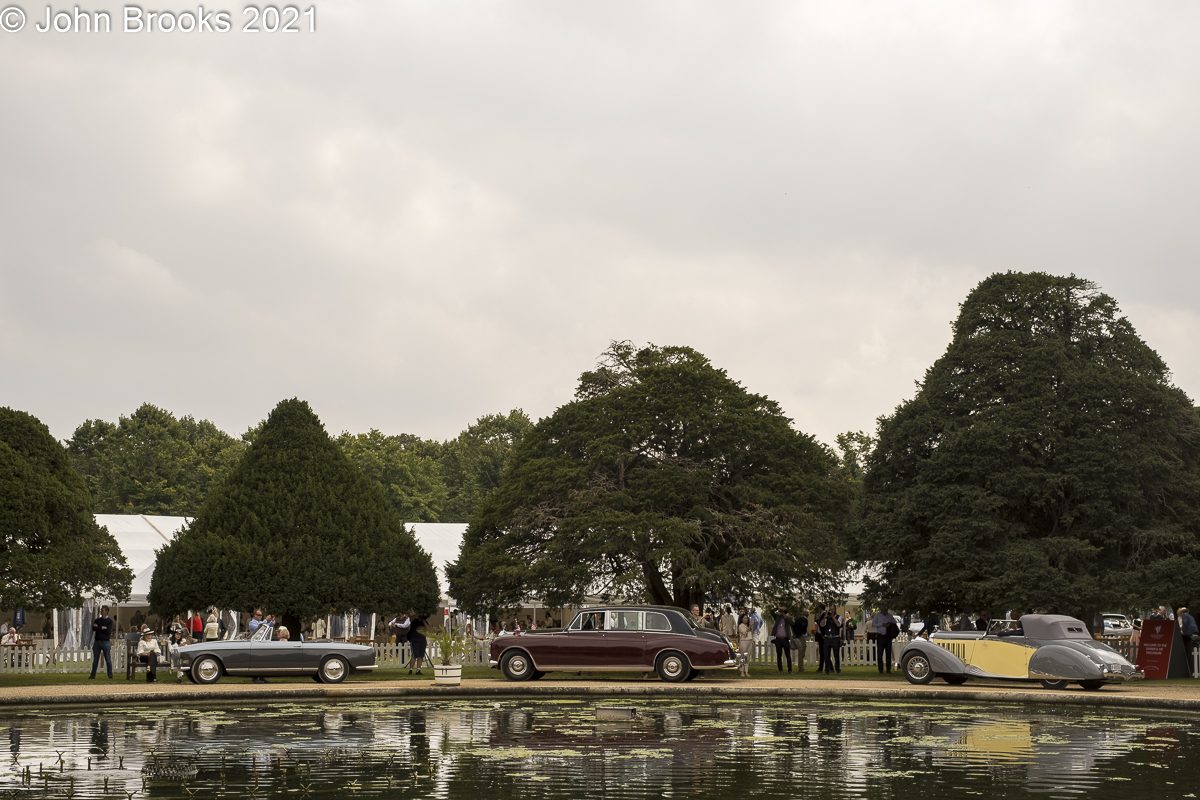
The Concours of Elegance is on today and tomorrow at Hampton Court Palace, a fantastic collection of some of the finest cars on the planet. If you can attend, I strongly suggest that you do.
John Brooks, September 2021

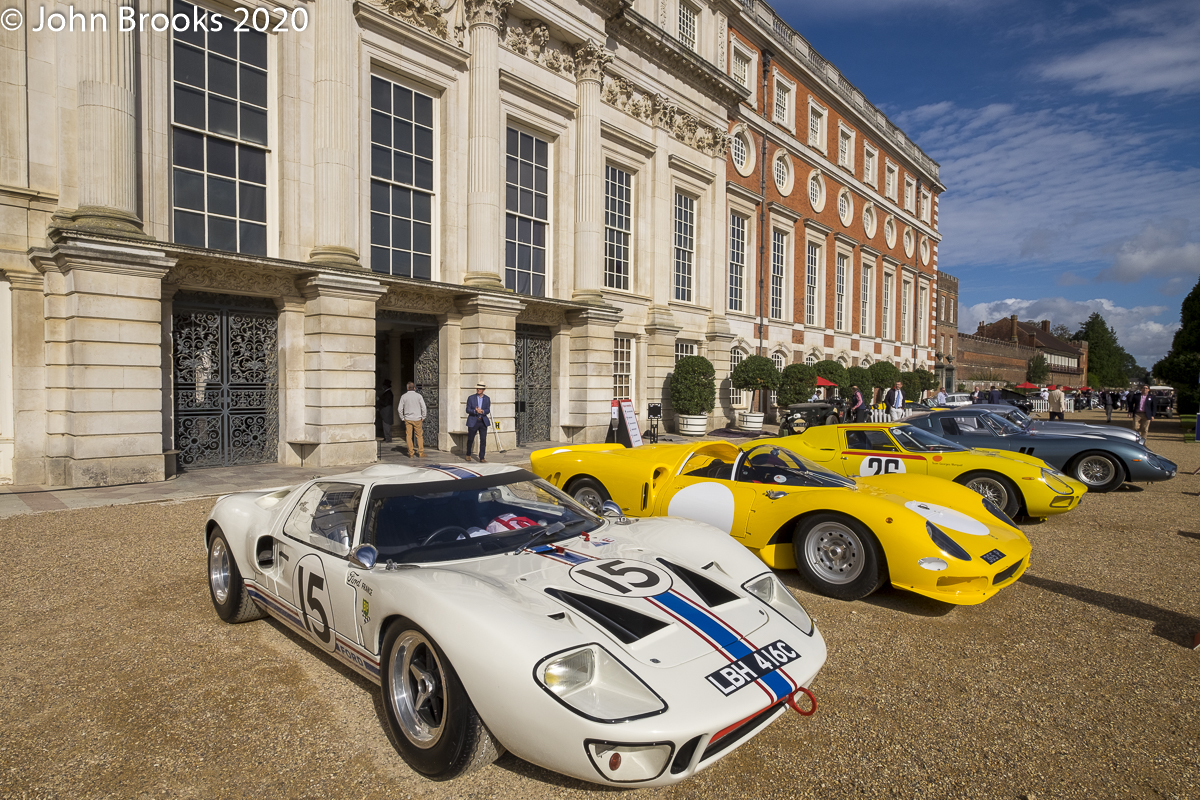
September has arrived heralding the onset of autumn to be followed, no doubt, by winter. No one needs to be reminded that the pandemic has not only attacked humans but also has decimated the normal calendars of culture and sport, life itself appears to have been on hold during 2020.
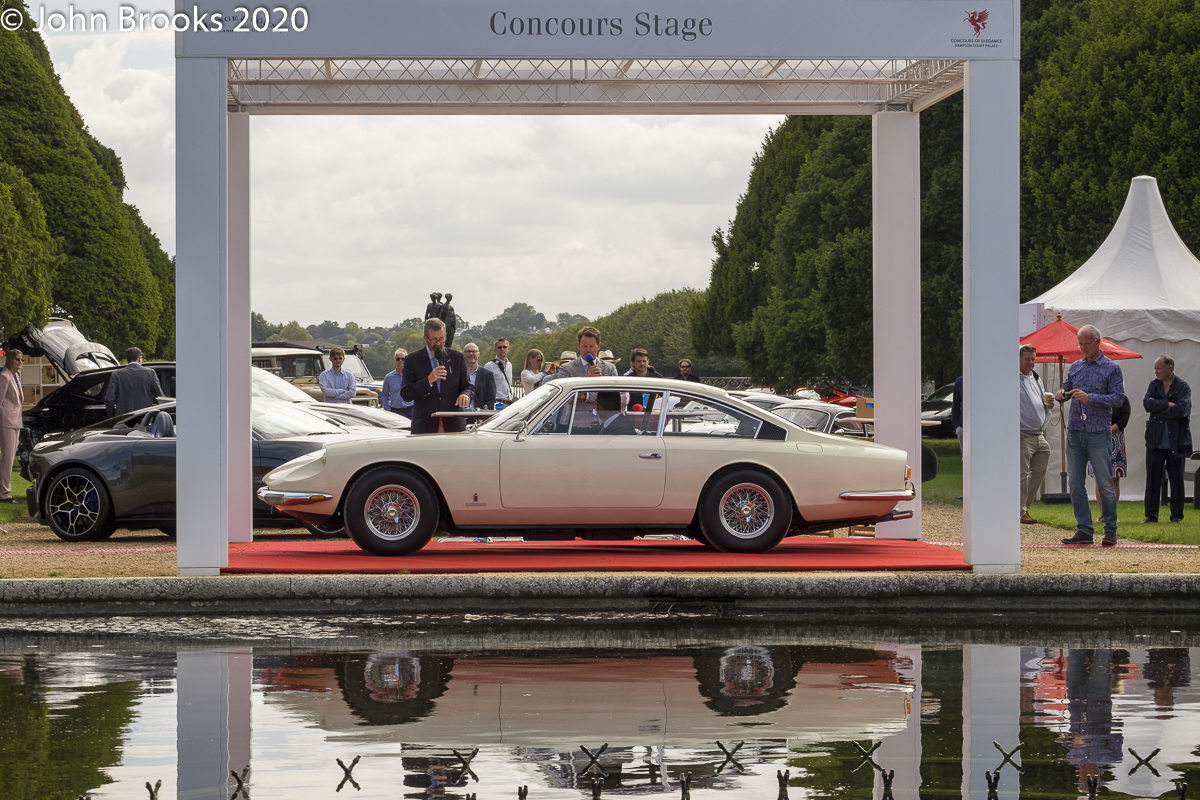
The only appropriate response to this disruption is to be stoic, the disappointments of missing events or holidays are nothing compared with the devastation suffered by those who have been struck down, not to mention their families and friends.
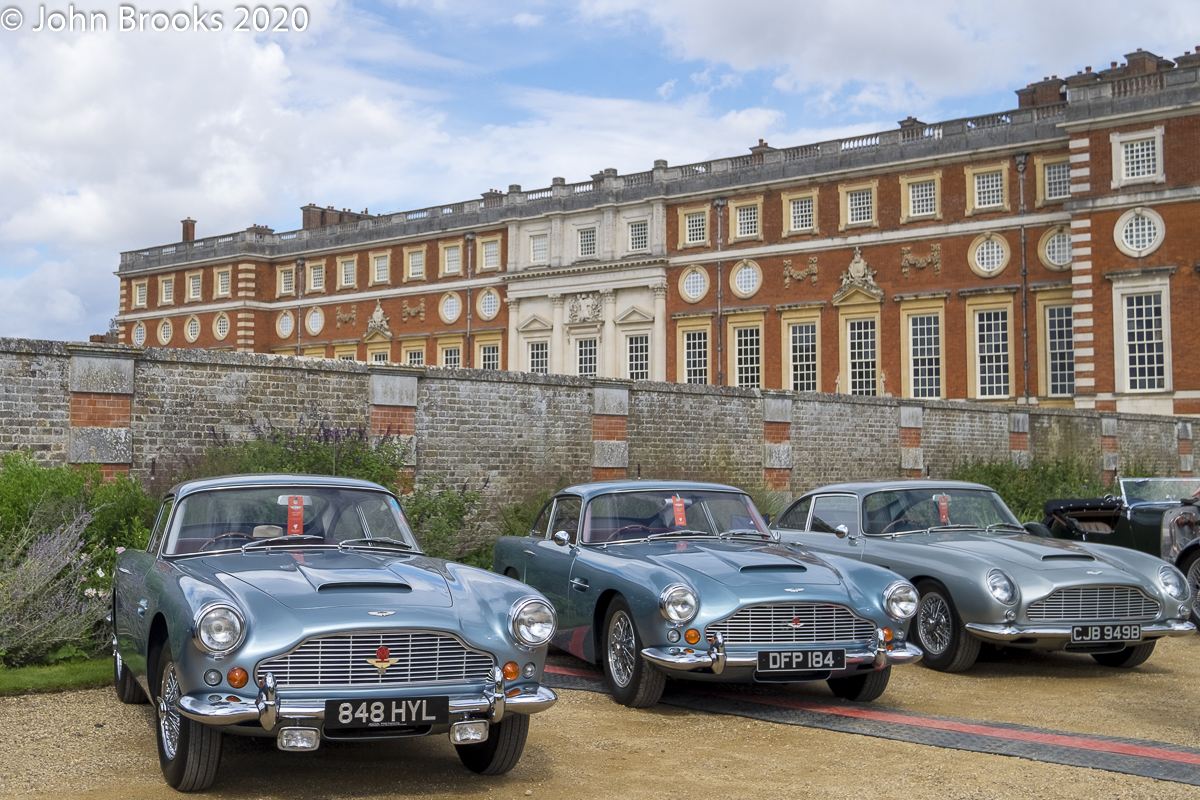
However, we would be less than human if we tried to hide our enthusiasm when some small part of the real world surfaces. Concours of Elegance at Hampton Court Palace is firmly established as one of the highlights of the motoring year. After what can only be described as an astounding effort it took place earlier this month, even more incredible was that the show matched the virtuoso levels of previous years. Chapeau!
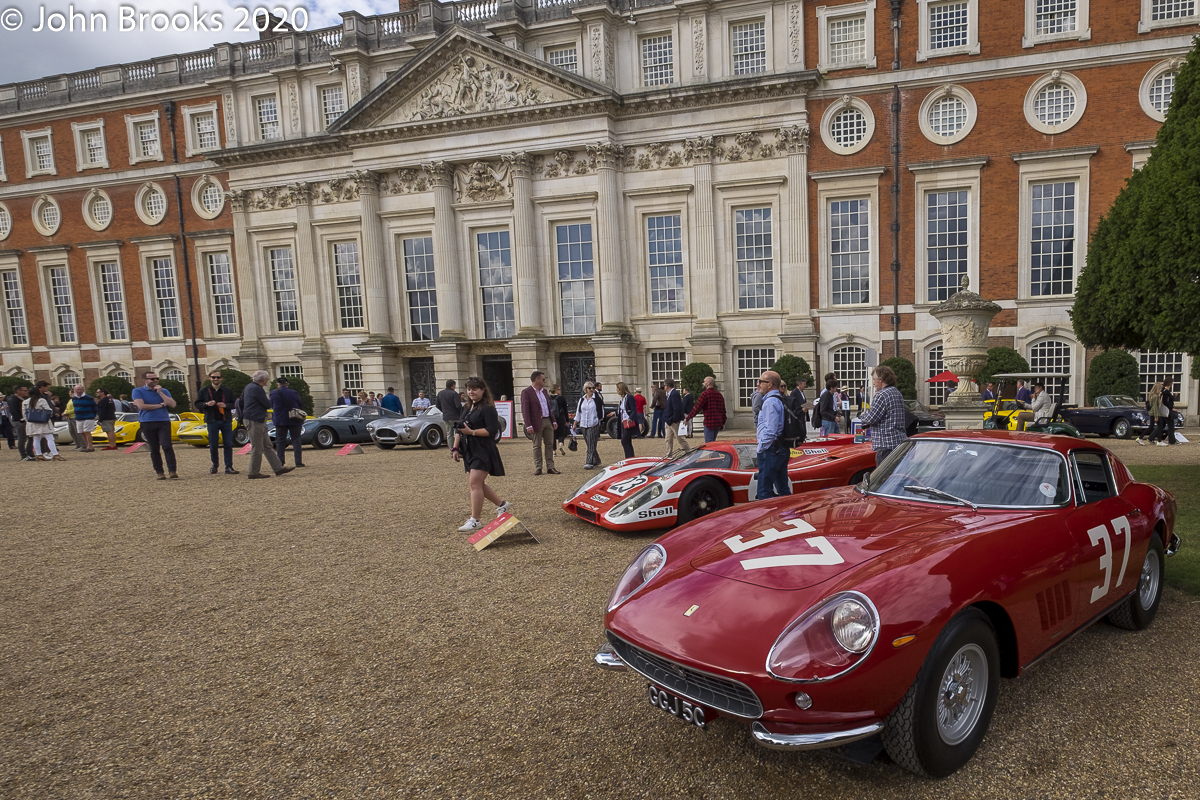
So it is now left to me to try and describe some of the highlights for those not fortunate enough to attend in person, I hope my efforts do the Concours some form of justice.
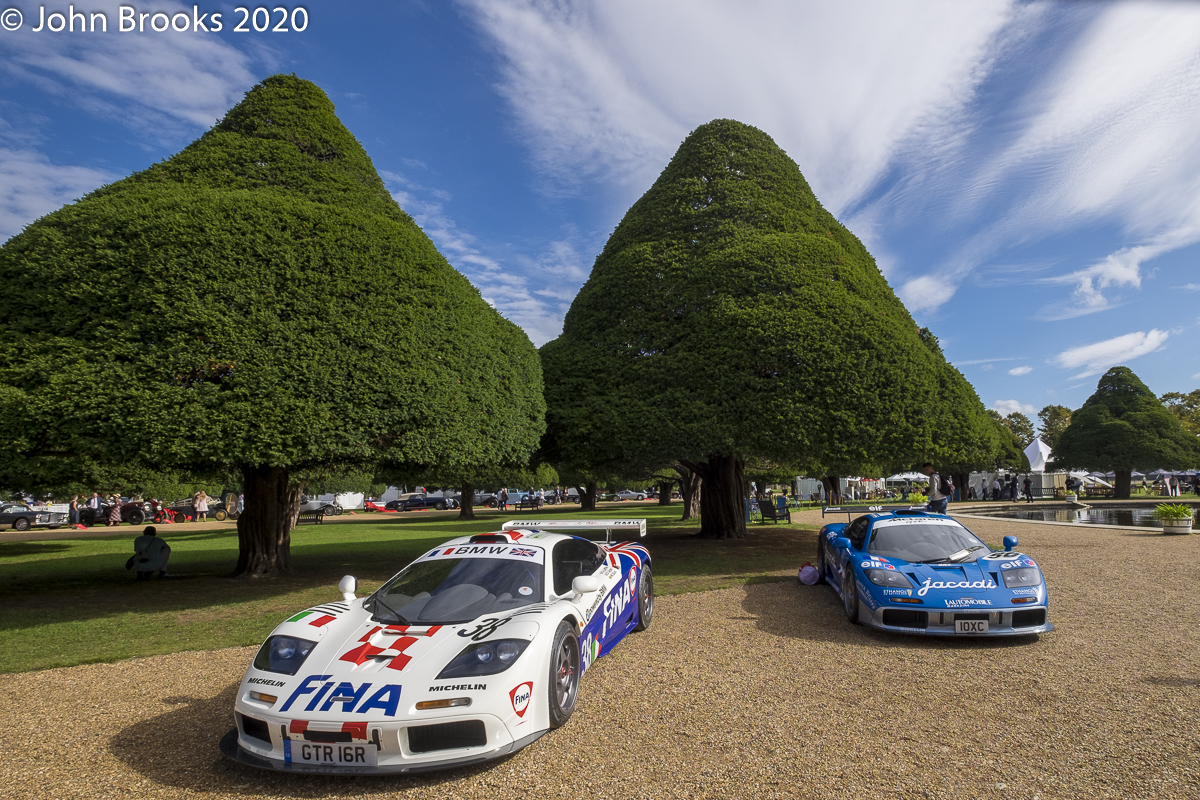
Twenty-five years have passed since the F1 GTR burst on to the endurance racing scene, dominating the BPR Global GT Endurance Series and taking the top spot at Le Mans on McLaren’s first attempt to achieve glory at La Sarthe. If one ignores the winner of the first race in 1923, only one other marque has achieved this result, Ferrari, back in 1949. Ironically that actual car was at the Concours last year and I looked at it HERE
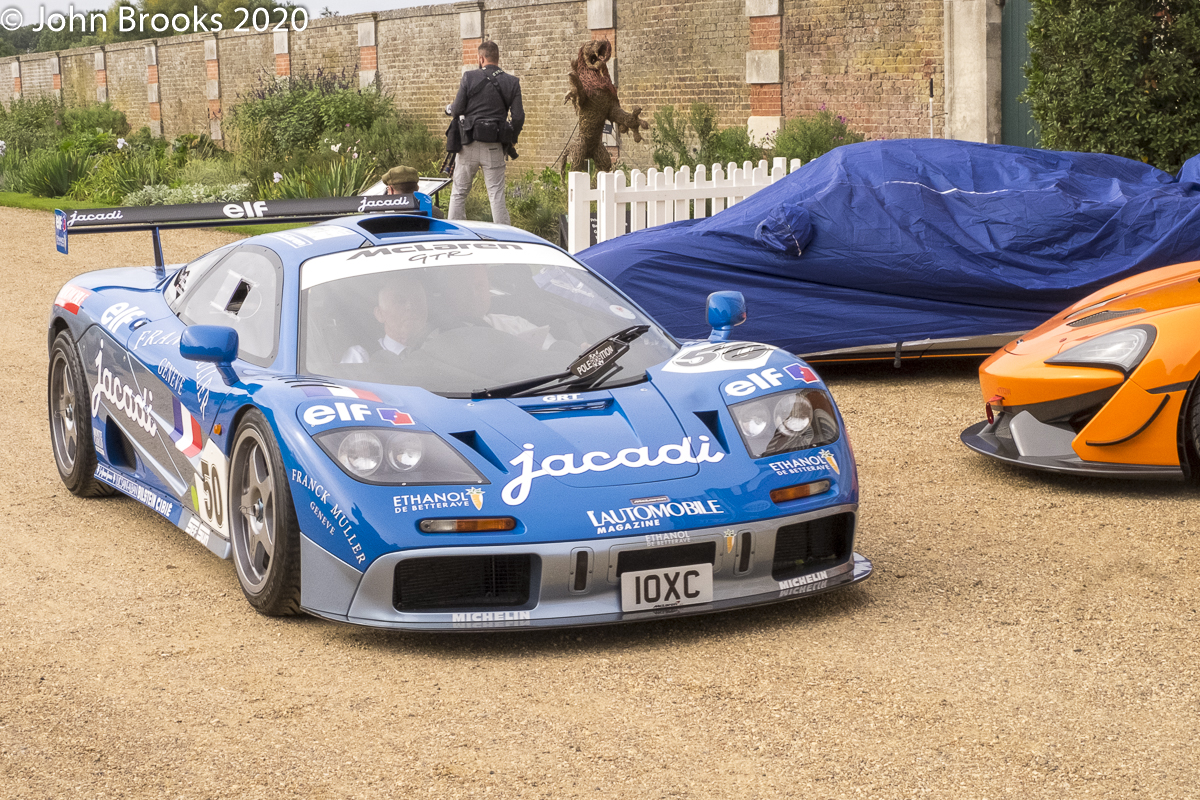
The 1995 winner, #01R, was due to make an appearance but a last-minute change of plans prevented that happening. So just two examples of Woking’s finest were on display, #07R, from 1995 and #16R from the following year. The blue #07R came close to glory several times during the BPR season, leading races and scoring second place at Jarama and third at the Nürburgring. At Le Mans it had additional sponsorship from Ethanol be Betterave and the fuel for its BMW V12 engine was a synthesis of beetroot-derived alcohol. There was disaster for the car at the beginning of the race when the starter motor failed and the team replaced it. Further problems with the unit cost #07R an additional 18 minutes in the pits during the opening hour, blunting their challenge. Subsequently the F1 GTR had a largely trouble-free run and recovered to fifth at the finish, the best result ever scored by a ‘green fuel’ car at La Sarthe.
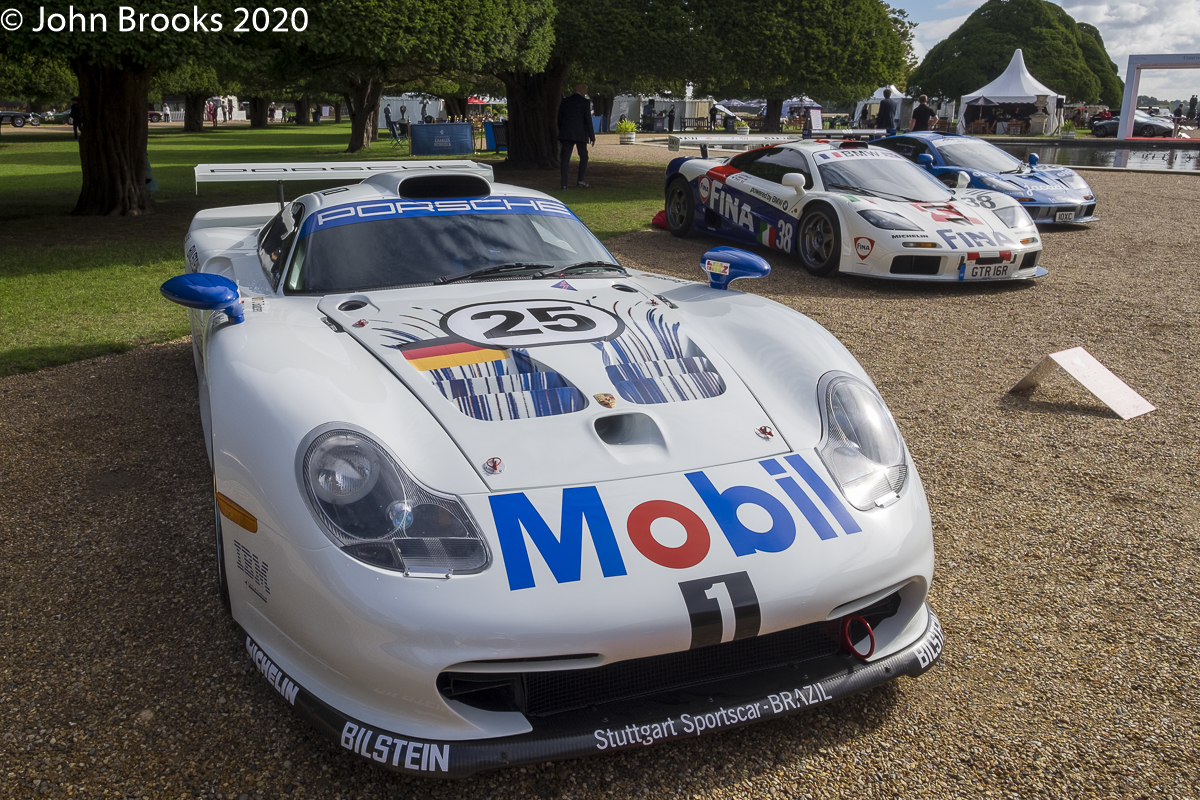
Another veteran of the Le Mans 24 Hours was this Porsche 911 GT1 that came close to winning the great race in 1997. Porsche AG initially concentrated their efforts that season in trying to win Le Mans, only a last minute decision was made to enter the inaugural FIA GT Championship. The Werks squad were running One-Two as dawn broke on Sunday with Thierry Boutsen, Hans Stuck and Bob Wollek leading. Wollek was in his twenty-seventh contest at La Sarthe and must have harboured thoughts that, finally, this would be his year. Just before 07.30 he attempted to pass Jean-Marc Gounon’s McLaren and was held up for three laps. Under acceleration out of Arnage, still stuck behind the F1 GTR, Wollek lost control of the Porsche and clattered the Armco head-on and rear, hitting both sides of the track. A broken driveshaft meant that his attempts to get back to the pits were punctuated by two further spins and he was forced to abandon the car and his quest for victory. At the subsequent meeting with the press he blamed himself entirely, he had made a beginner’s mistake as he declared. “Si vous n’avez jamais vu le roi des cons, vous l’avez devant vous.”
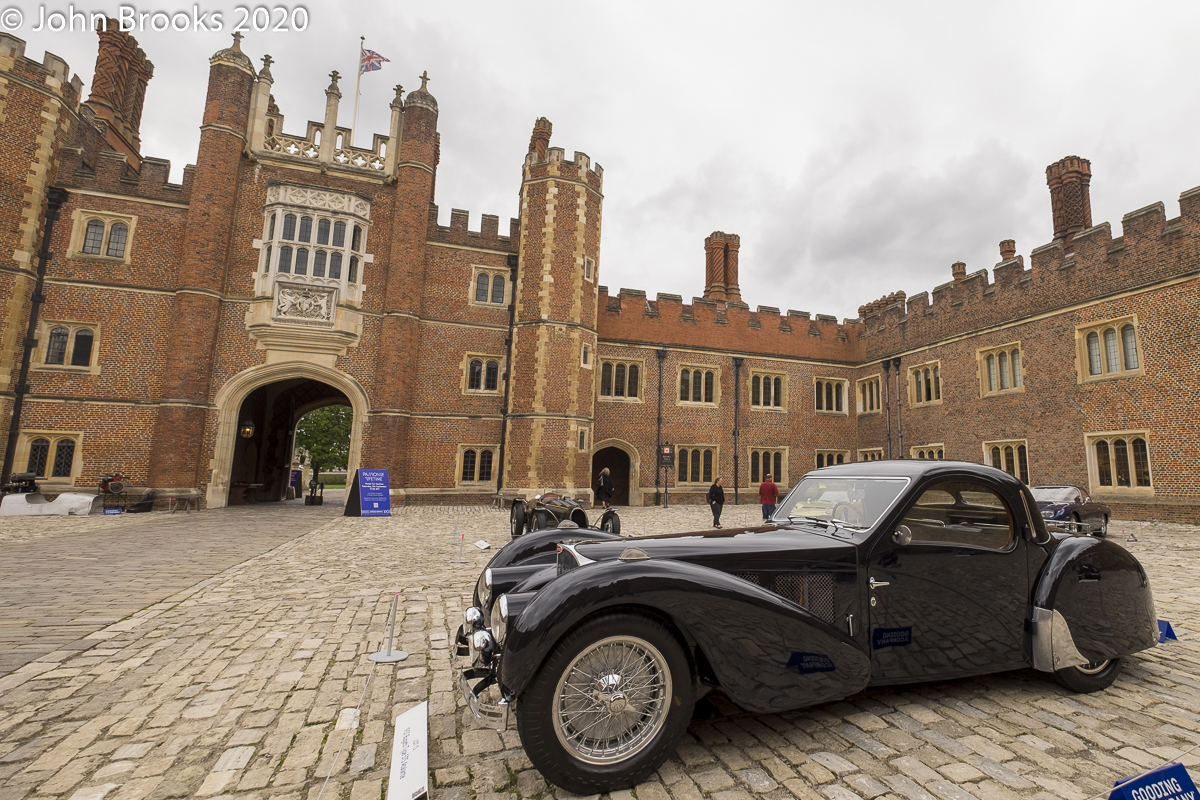
A special event taking place in this year’s Concours was the “Passion of a Lifetime” auction. Gooding & Company were forced to postpone their first-ever sale outside of the USA so the Concours of Elegance at Hampton Court Palace was just the right level to act as the venue. Elegance was to be found in spades in the Tudor Courtyard; even Henry VIII, might have lusted after this Bugatti Type 57S Atalante, more than he did with Anne Boleyn.
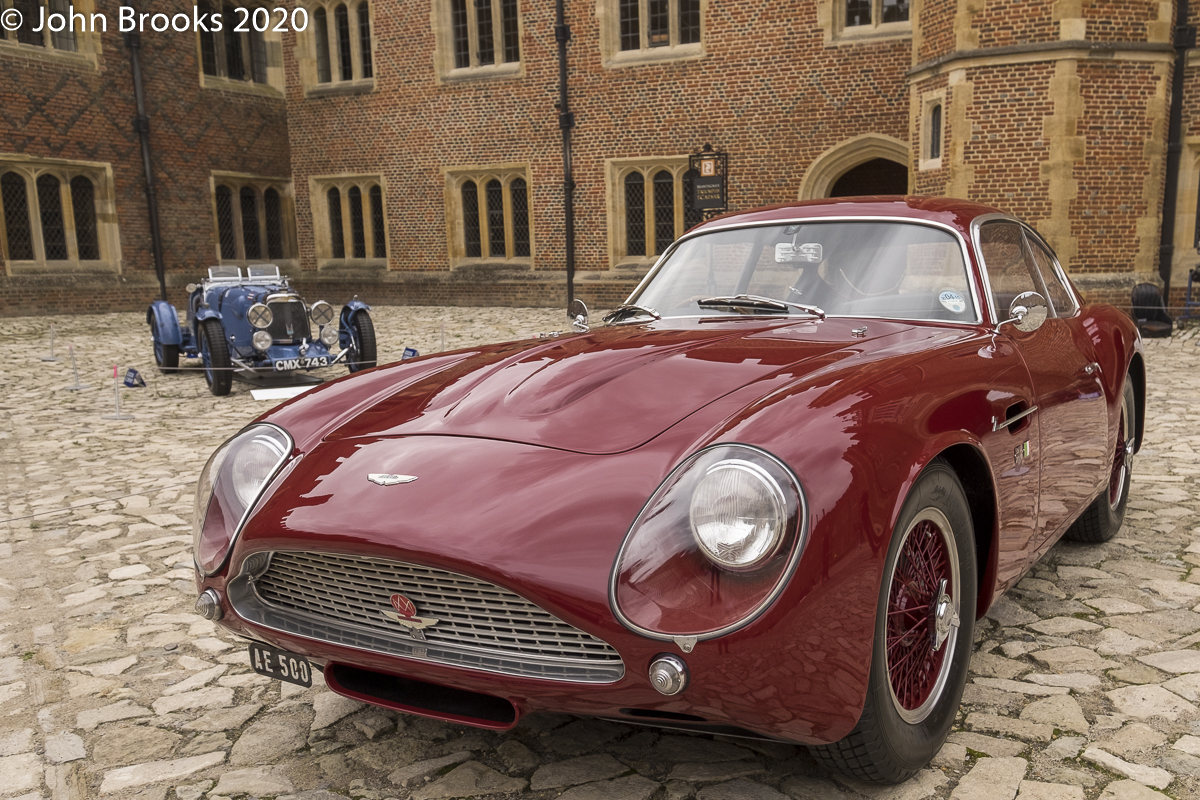
There were just fifteen cars in the sale but all were ultra desirable. This Aston Martin DB4GT Zagato is one of only nineteen examples produced and lists former Aston Martin Chairman, Victor Gauntlett, as one of its four previous owners. Its breath-taking and timeless styling, courtesy of Ercole Spada, renders it as a piece of modern art of the highest level. Weirdly this was the only car not to sell, failing to reach the £7 million expected.
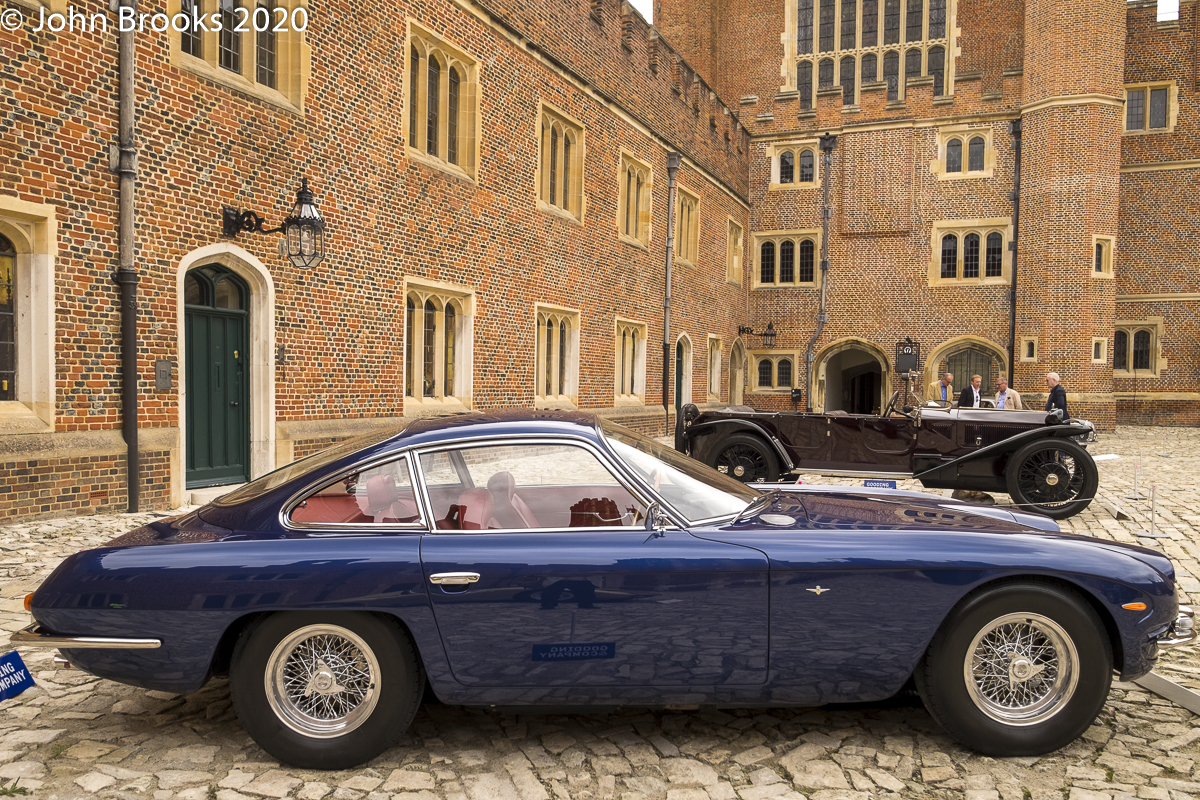
More ’60s Italian flair was to be found in this Lamborghini 350GT, the epitome of Gran Turismo motoring, I have always had a soft spot for this model.
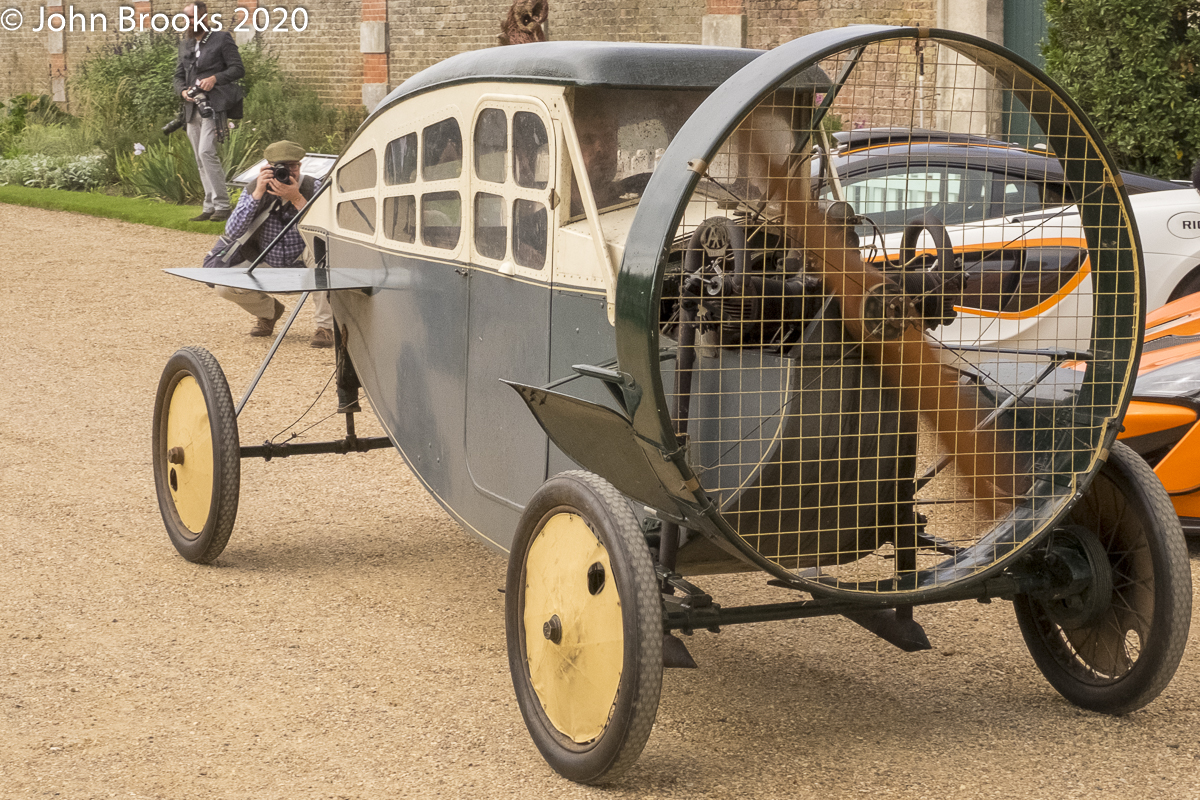
A serious candidate for the most unusual item at the Concours was this replica of a 1921 Leyat Hélica. Carrying the nickname “the plane without wings” its creator, Marcel Leyat, was seeking to simplify personal transport as there would be no rear axle or transmission. The body made of plywood was extremely light and the whole machine weighed under 300kg, some 400kg lighter than the contemporary Ford Model T. Powered by an 8bhp Scorpion engine the Hélica was recorded at 106mph in 1927 at the Linas-Montlhéry circuit. Just 30 examples were built. I encountered the two remaining Hélicas at Rétromobile a few years back, they can be seen HERE
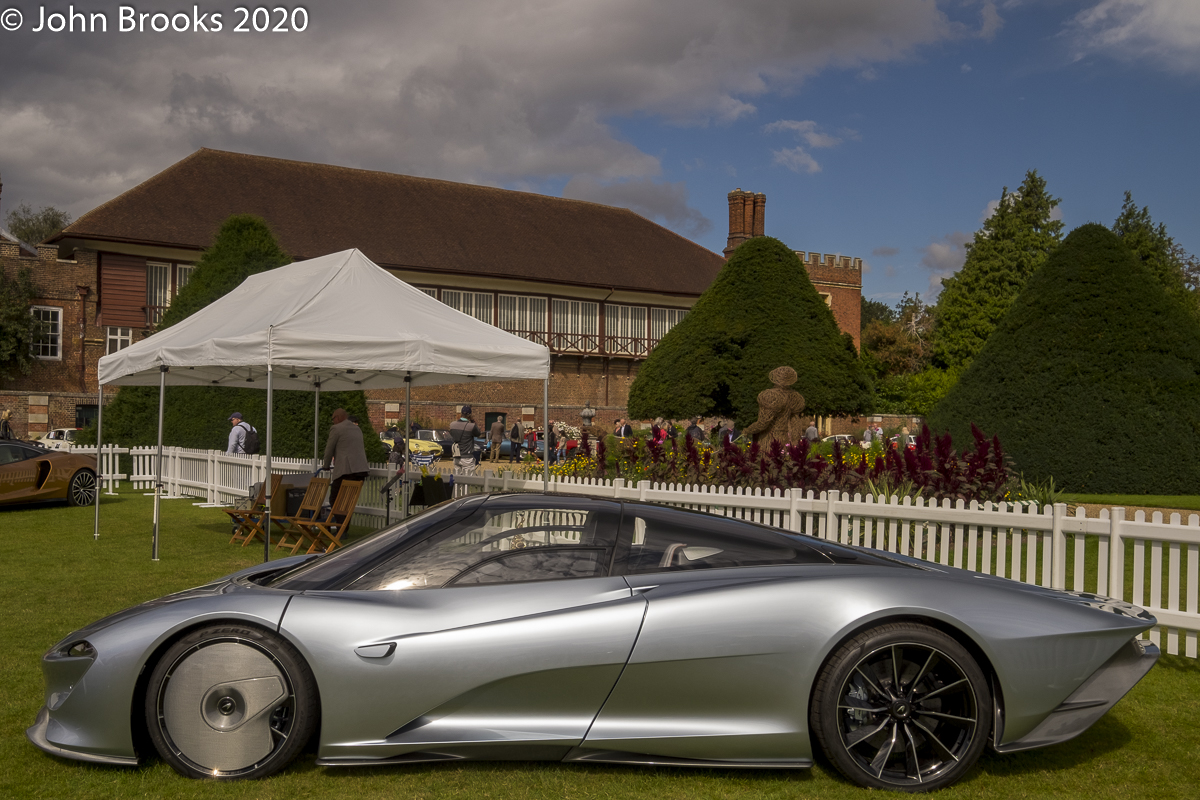
At the other end of the evolutionary scale to the Hélica is the McLaren Speedtail, now the fastest ever road car from Woking, a cool 250mph, eclipsing Andy Wallace’s famous 240mph run in the F1 GTR back in 1998.
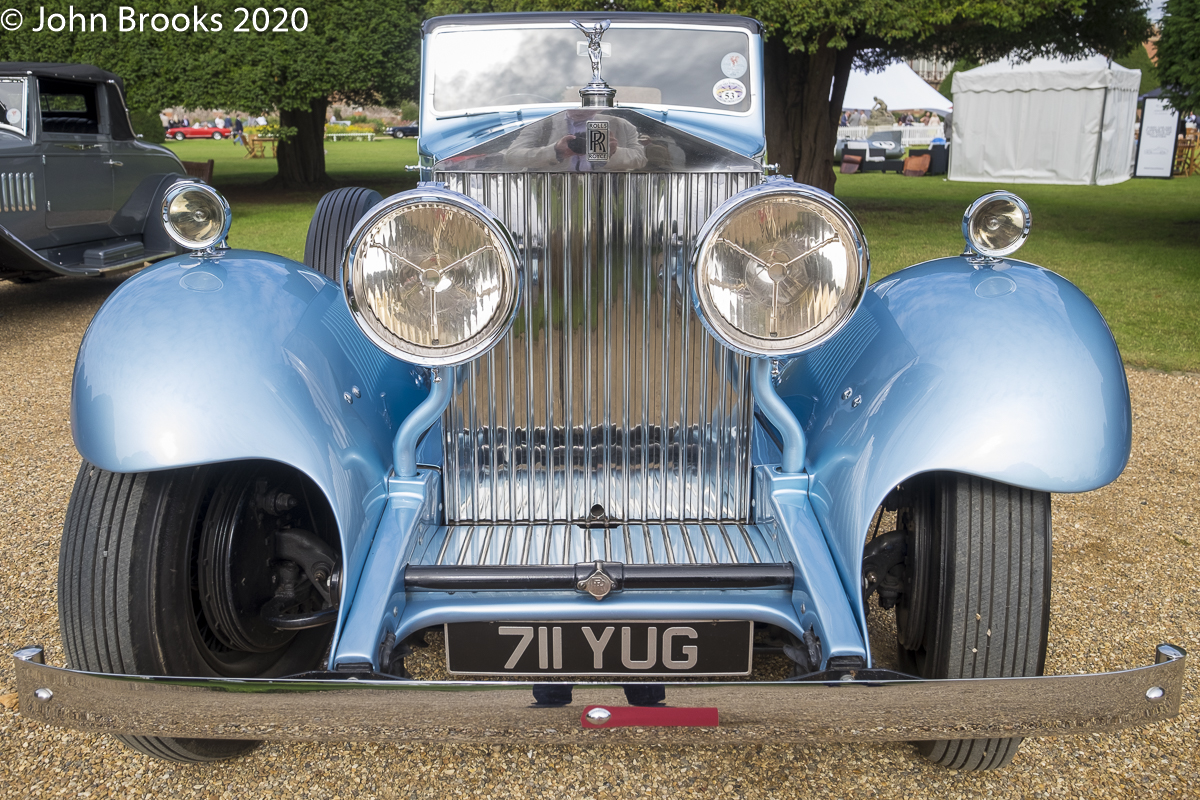
Record breaking is also in the DNA of this Rolls-Royce Phantom ll Continental, one of a trio of Rolls-Royces owned by Sir Malcolm Campbell. He purchased it at the height of his fame for setting world speed records on land and water. Indeed a few months after acquiring the Phantom ll he set his final land speed record at the Bonneville Salt Flats, on 3 September 1935, becoming the first person to drive a car over 300 mph.
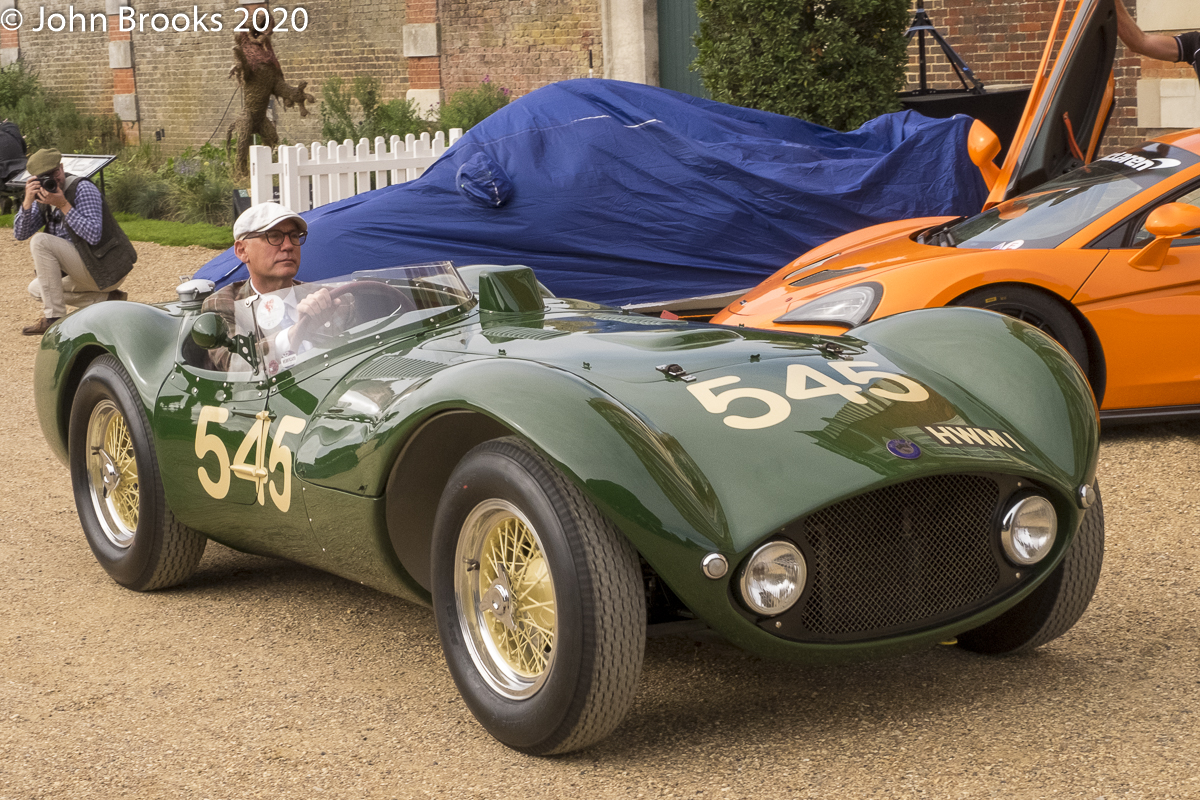
The Chairman of the Concours Steering Committee, Gregor Fisken, drives his HWM Jaguar to take its place around the Great Fountain. This purposeful racer has a dark side to its history. John Heath, co-founder of HWM, was killed in the 1956 Mille Miglia when HWM1 left the road in treacherously wet conditions just north of Ravenna. The car was repaired and raced on successfully for many years.
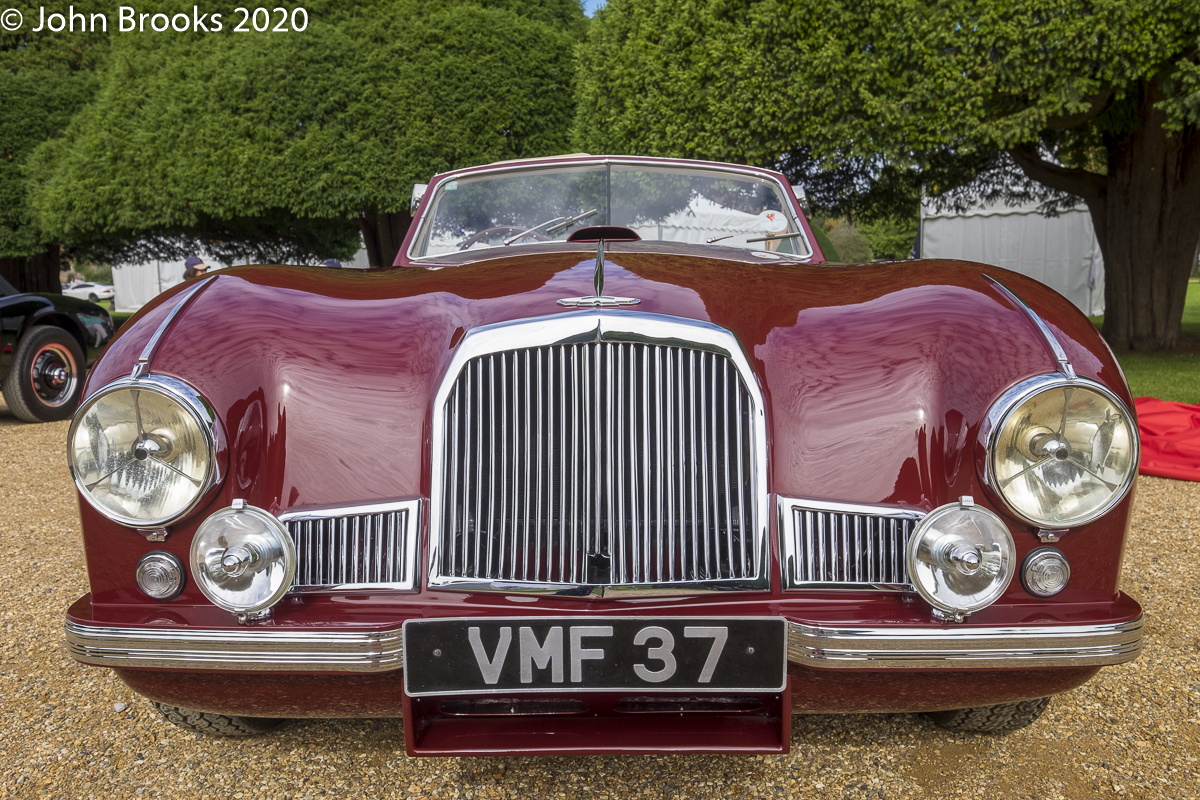
This is the development Aston Martin DB2 Drophead that was driven for a good part of its early life by the company’s owner, David Brown.
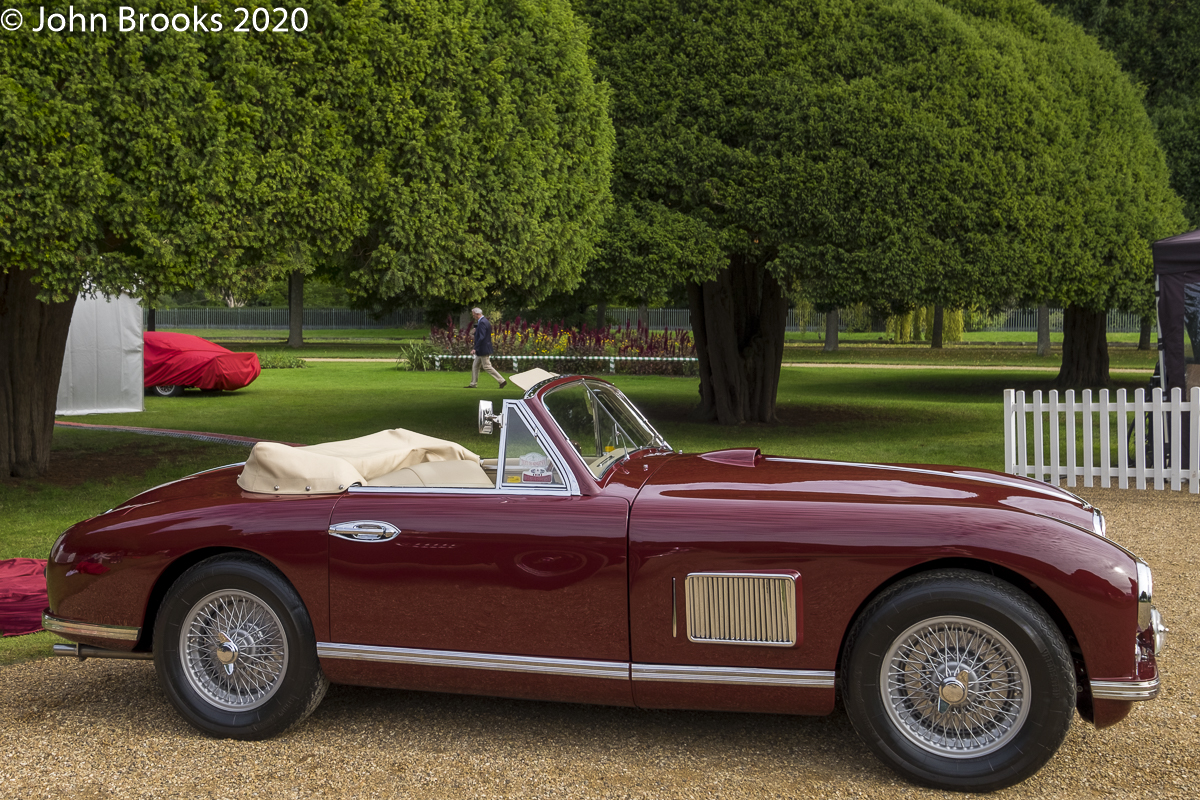
It was also used a press demonstrator, though I expect that the likes of Roy Lanchester, of Sniff Petrol fame, would have been not allowed to get away with antics such as THIS in the Boss’s car.

The Land Rover has been a familiar and comforting part of the British motoring landscape almost forever it would seem. This example is very special, being the first production car. Originally destined for His Majesty King George VI, it ended up in the development department at Rover. Subsequently it was acquired by a Northumberland farmer, David Fairless, in 1970. It remained on the farm for nearly half a century before the family sold it.
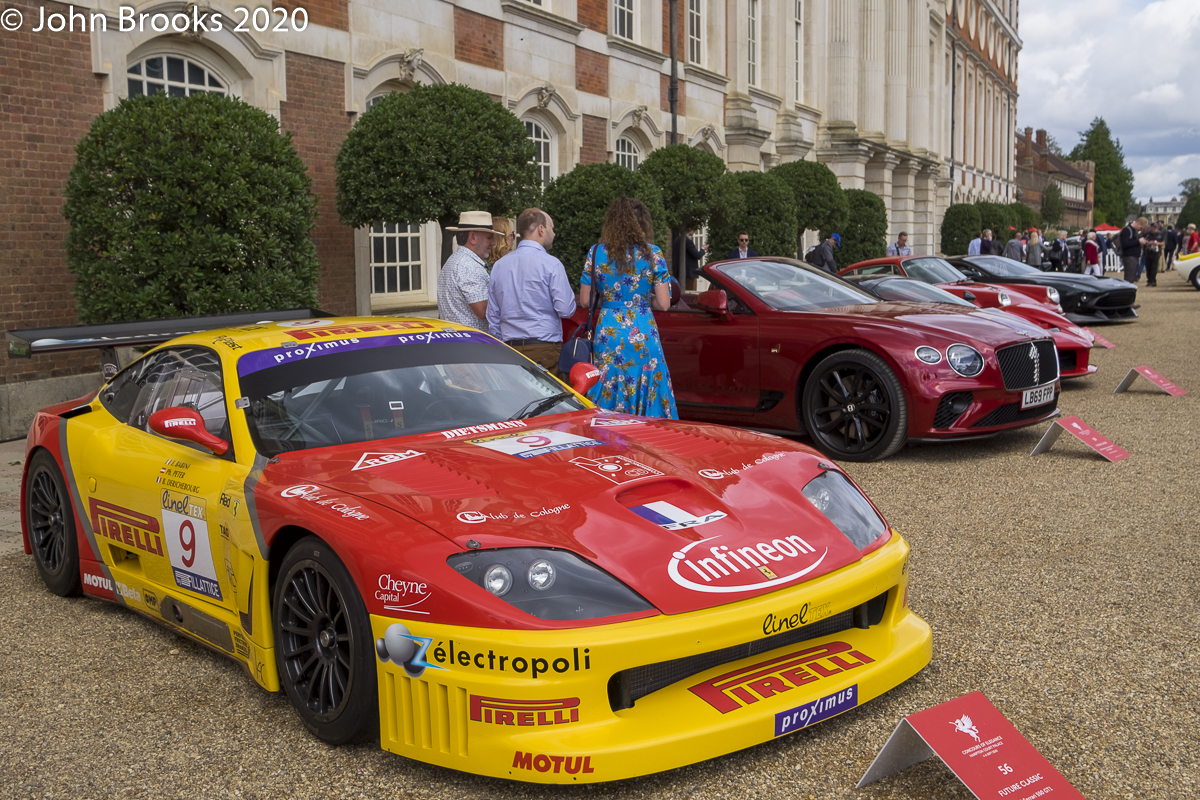
This startling creature is one of two N-Technology 550 Maranellos built to compete in the 2003 FIA GT Championship. Both have very disappointing records, especially in comparison with the Prodrive 550 Maranellos that swept all before them in the GT universe. The main achievement of the N-Technology 550s was to act as a test bed for the 575 Maranellos that followed, though these too were not successful against the “British Ferraris”.
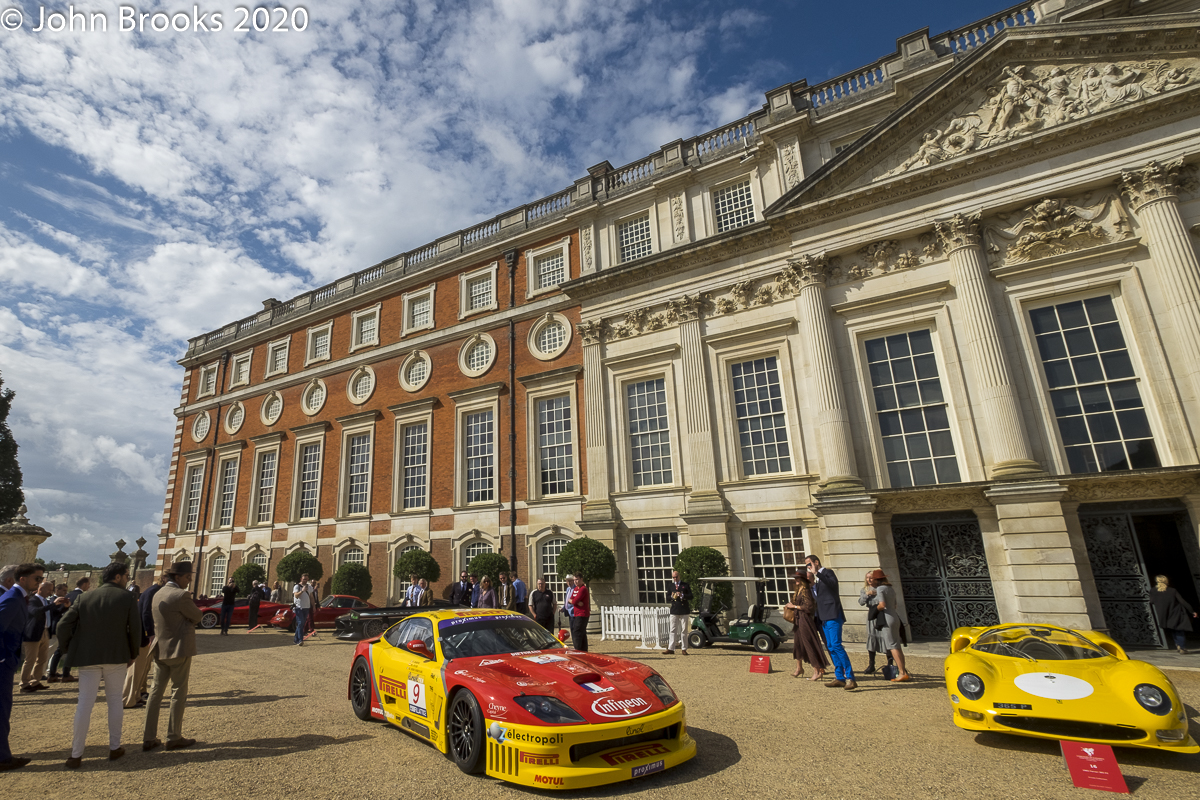
After leaving the FIA GT Championship this example was purchased by Piero Nappi who competed in the Italian Speed Hill Climb Championship till 2016, winning the title three times.
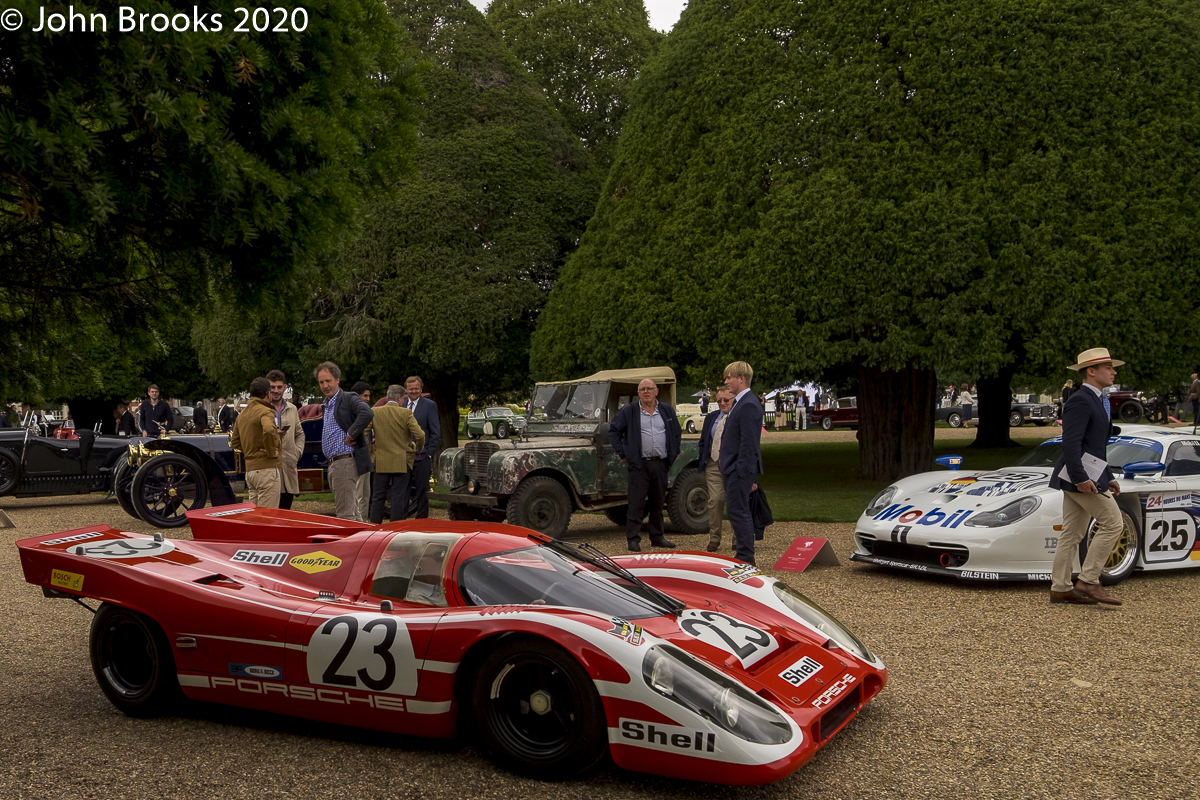
A legend in every sense of the word is the Porsche 917K-023. Its competition career only comprised of seven races. A second place in the deluge conditions of the 1970 Brands Hatch 1000kms for Vic Elford and Denny Hulme was followed by a third at Spa with Kurt Ahrens partnering the Brit. As a member of the armada of Porsche 917s that contested Le Mans that June, it was something of an unfancied runner, with an old-spec 4.5 litre engine. The race, immortalised by Steve McQueen’s iconic movie, was another washout and one by one the favourites dropped out. Wily old campaigners Richard Attwood and Hans Herrmann grabbed the lead in 023 after midnight and held on to score Porsche’s first outright victory at La Sarthe. The story of the car’s post-race career is almost as exciting, with chassis plates being swapped, identities being confused and false liveries applied; it reads more like a spy novel than an auction catalogue. Eventually the whole story came out and now this legend, properly authenticated, resides in California.
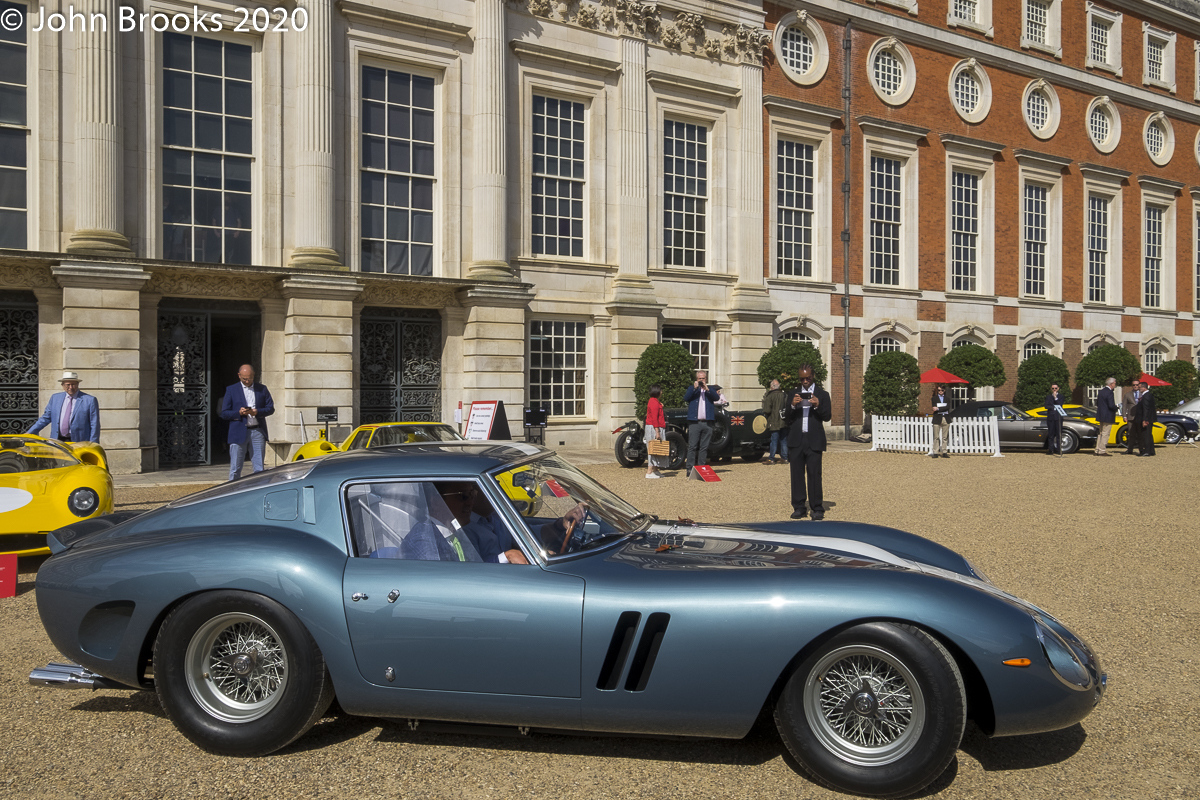
This Ferrari 250 GTO #3387 was the second chassis completed. It was used at Maranello to develop the final specification of the car. It was then sold to Luigi Chinetti whose NART team entered it in the 1962 Sebring 12 Hours with Phil Hill and Olivier Gendebien on driving duties. They won the GT class and finished second overall.
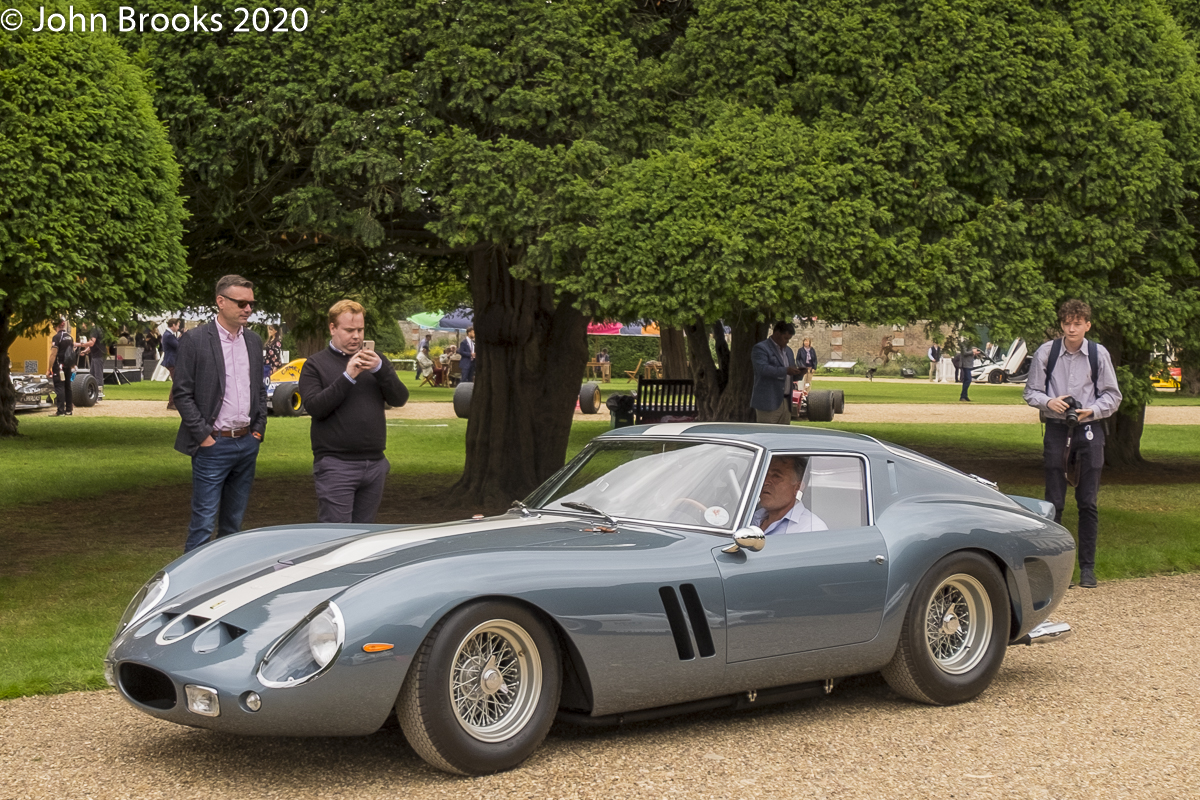
Following this success the 250 GTO was sold to New York businessman, Bob Grossman, who entered it in that year’s Le Mans 24 Hours. With his renowned NASCAR co-driver, Glenn “Fireball” Roberts, they finished sixth overall, a strong result. The Ferrari continued to be raced for a number of years and after retirement became a prized possession of several lucky owners till it crossed back over the Atlantic to be restored by Joe Macari, who is seen parading this motoring gem around the Great Fountain.
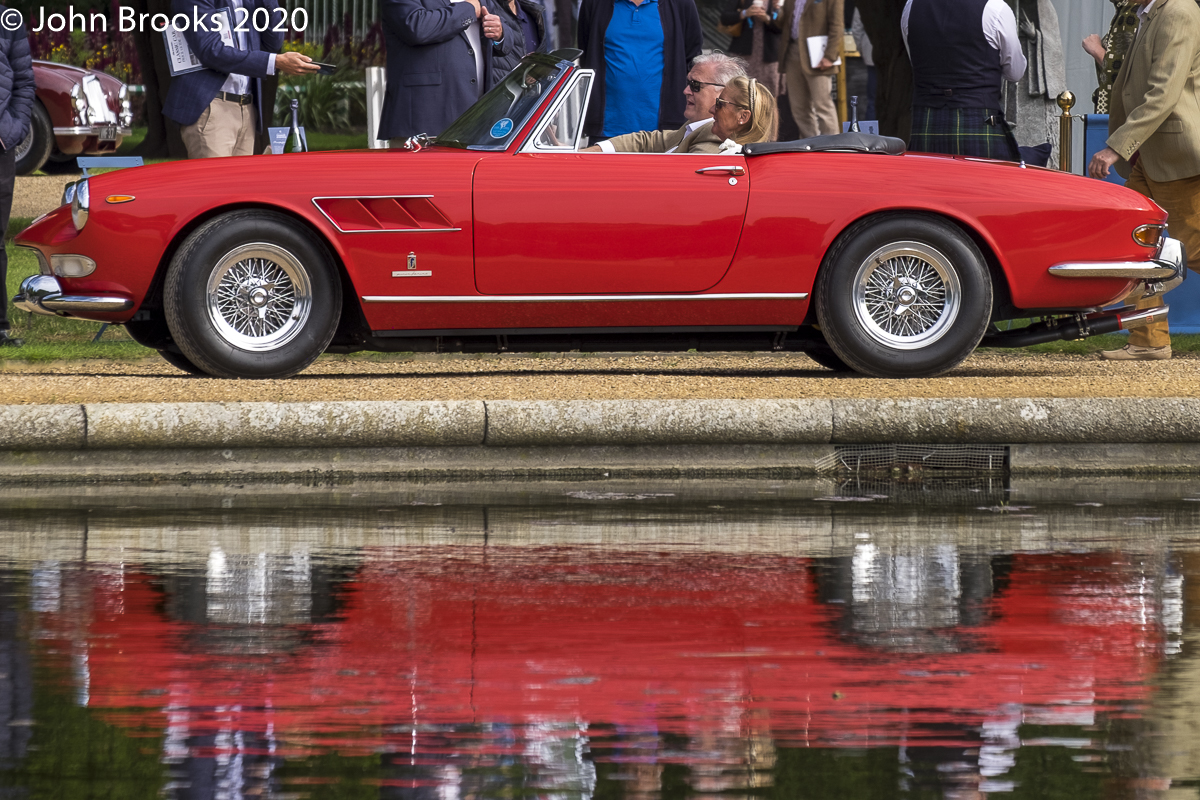
Speaking of motoring gems, I found this sublime Ferrari 275 GTS as a hot contender for best in show, even in the face of such a cornucopia of automotive desirables. Looking through the excellent Ferrari reference website barchetta.cc it appears that the 1980 F1 World Champion, Alan Jones, was a former owner. One of the best features of the Concours of Elegance is the arrival each morning of a new set of cars from the various car clubs. It adds a spice to the already rich mix and ensures that no two days are the same.
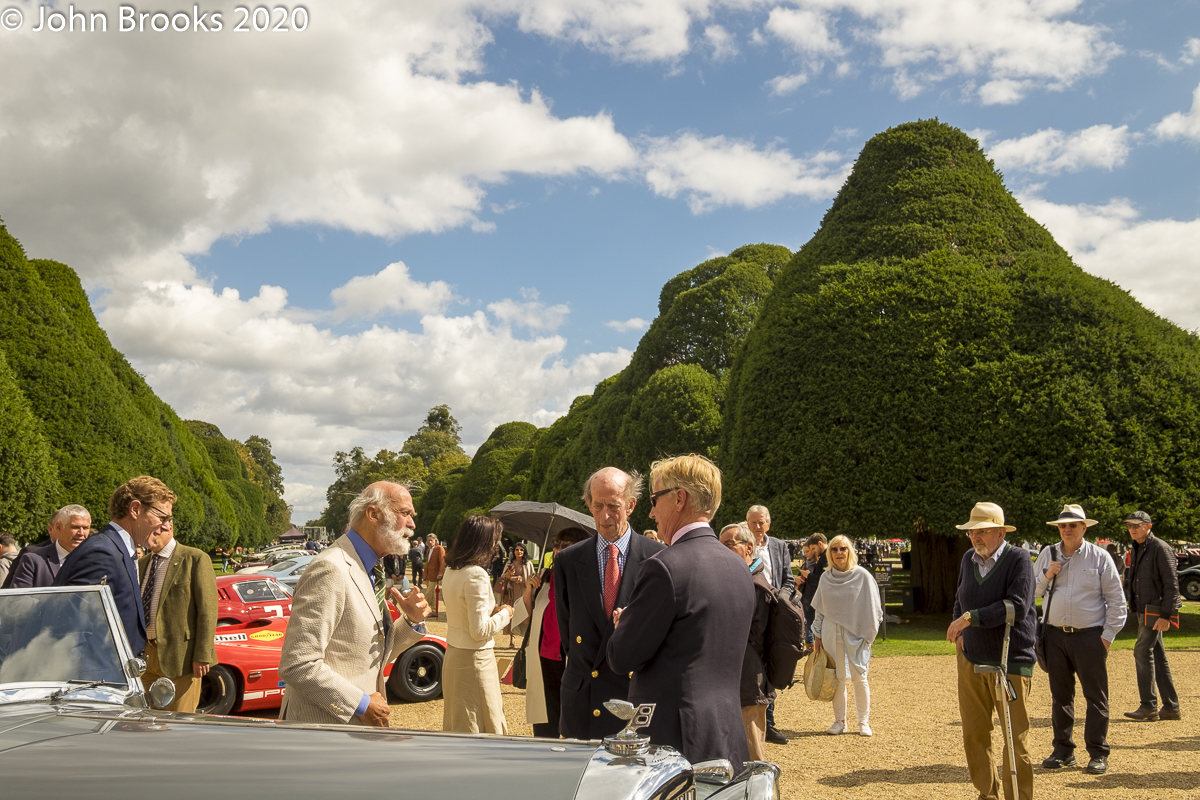
The setting of a Royal Palace for the Concours of Elegance has been one of the features that set the event apart right from the first show. Windsor Castle, St. James’s, Palace of Holyroodhouse have all played host before Hampton Court Palace became the “home” of the Concours. There is a strong connection to the Royal Family, with HRH Prince Michael of Kent acting as Patron, and on the Saturday he brought along his elder brother, HRH Duke of Kent, to enjoy the spectacle.
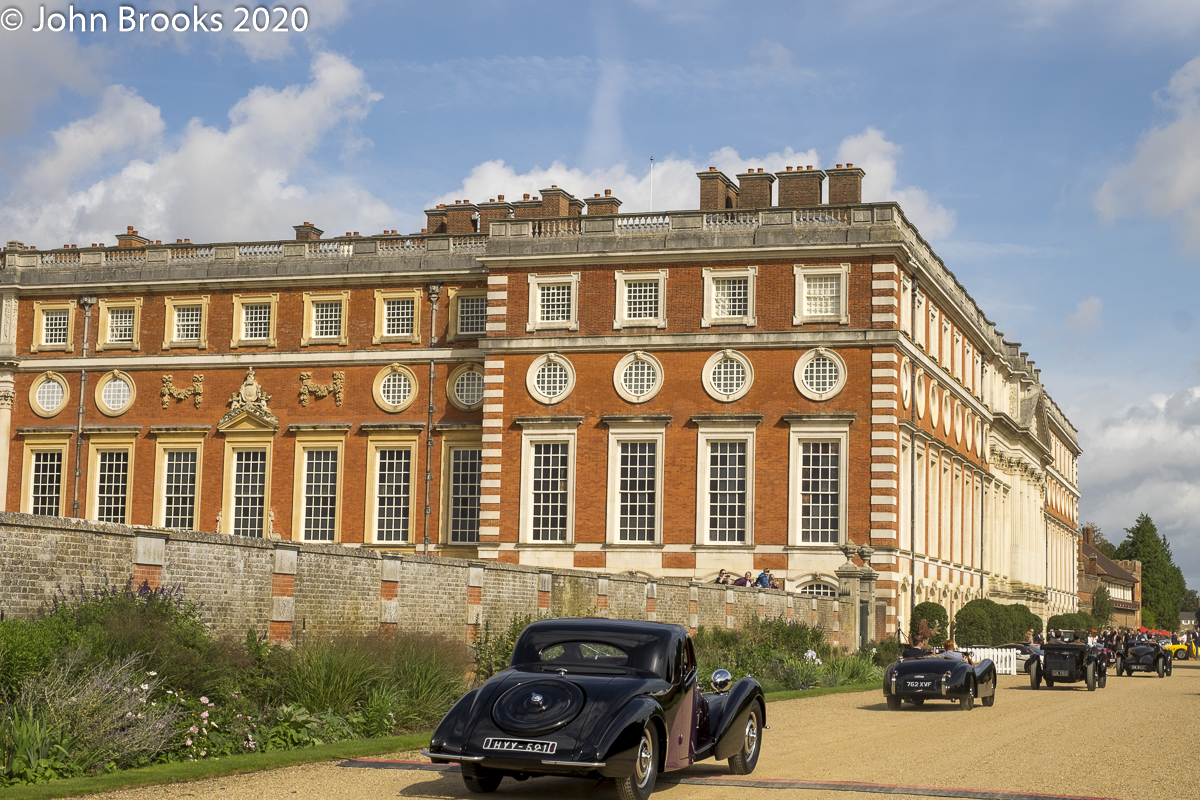
The ninth edition of the Concours of Elegance was held under the most difficult of circumstances but the organisers and owners rose to the challenge and provided a rich celebration of motoring for us lucky ones to savour.
John Brooks September 2020
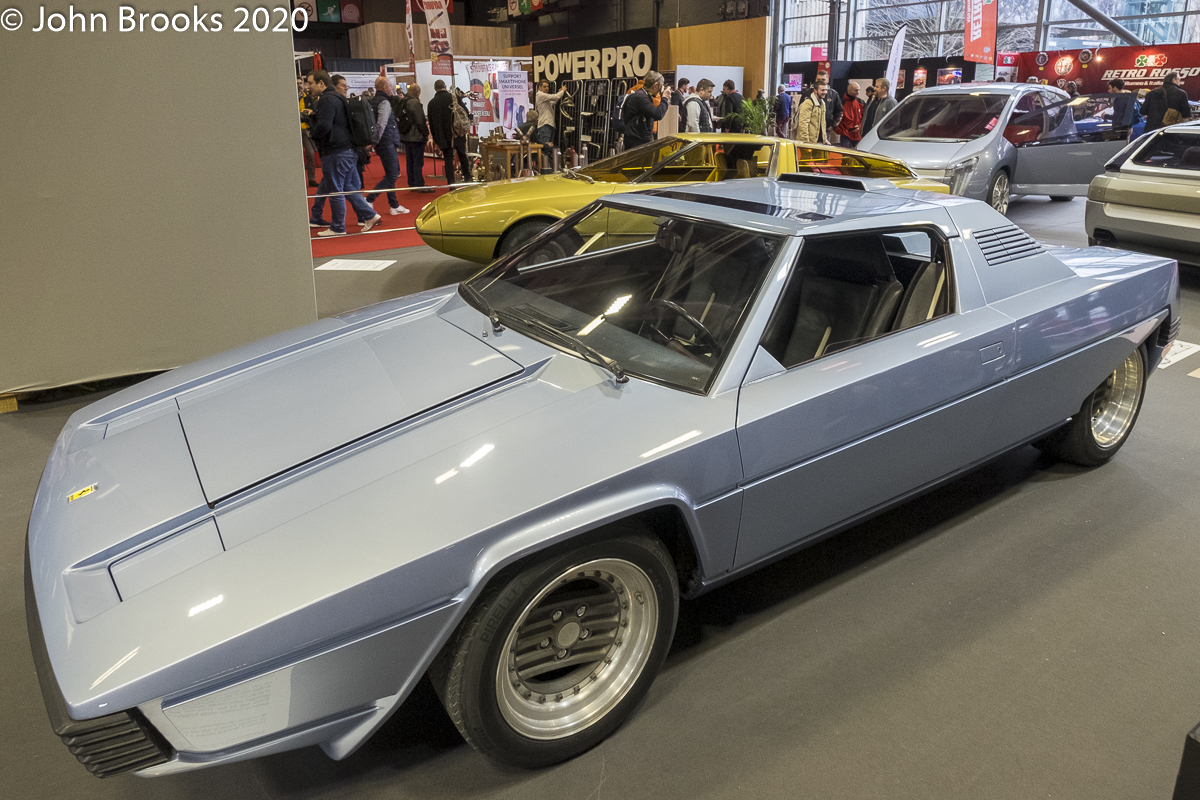
The 2020 Rétromobile will prove to be even more special than normal, it actually took place! Months have passed under the pandemic cloud and the distant rumbles currently being experienced do not give any assurance that we will return to normal, or what passes for that state in 2020, any time soon. So let’s take the opportunity to have a look back at the annual Parisian automotive festival.
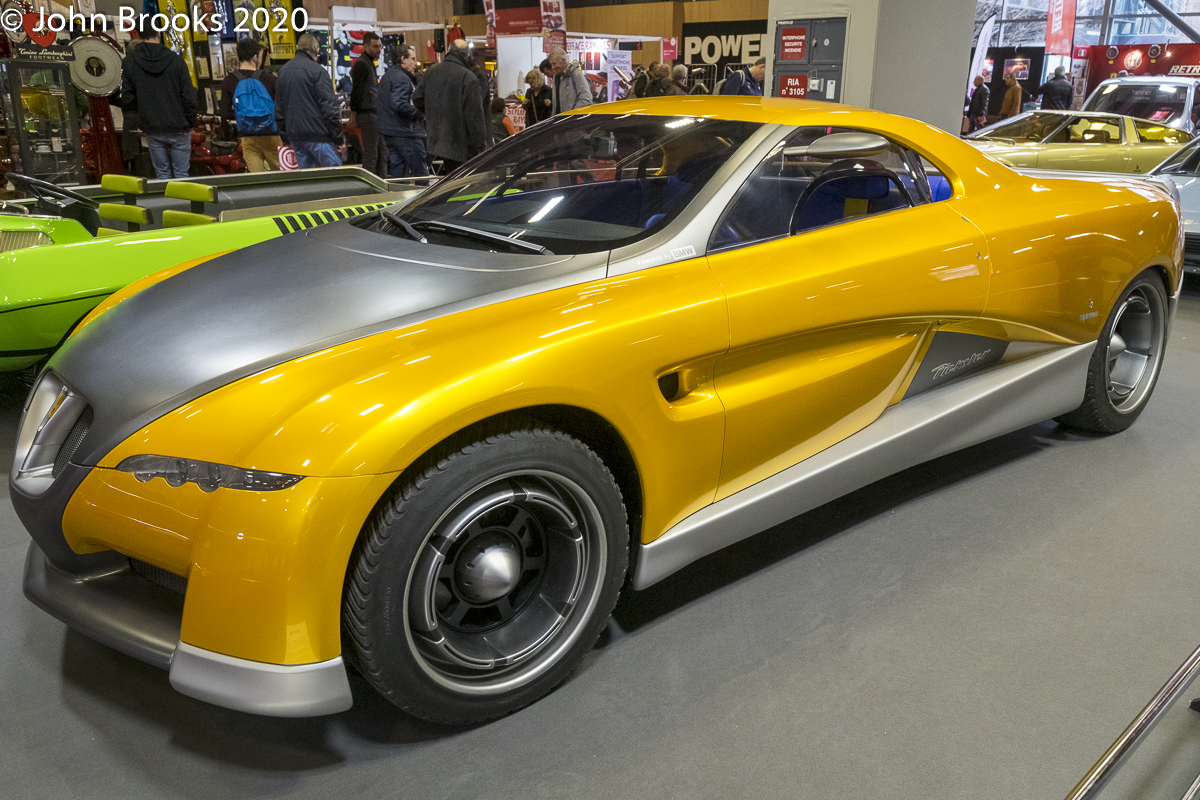
For the best part of a century Bertone were princes of the motoring world, their distinctive style seen on many important cars. A changing business landscape could not be accommodated and the organisation filed for bankruptcy in 2014, the end of the road. They had accumulated a collection of their work and this was eventually taken over ‘for the nation’ by Automotoclub Storico Italiano. The cars are usually on public display at the Volandia Museum located at Milan’s Malpensa Airport. For the Rétromobile a small selection was allowed out of Italy for our general appreciation.
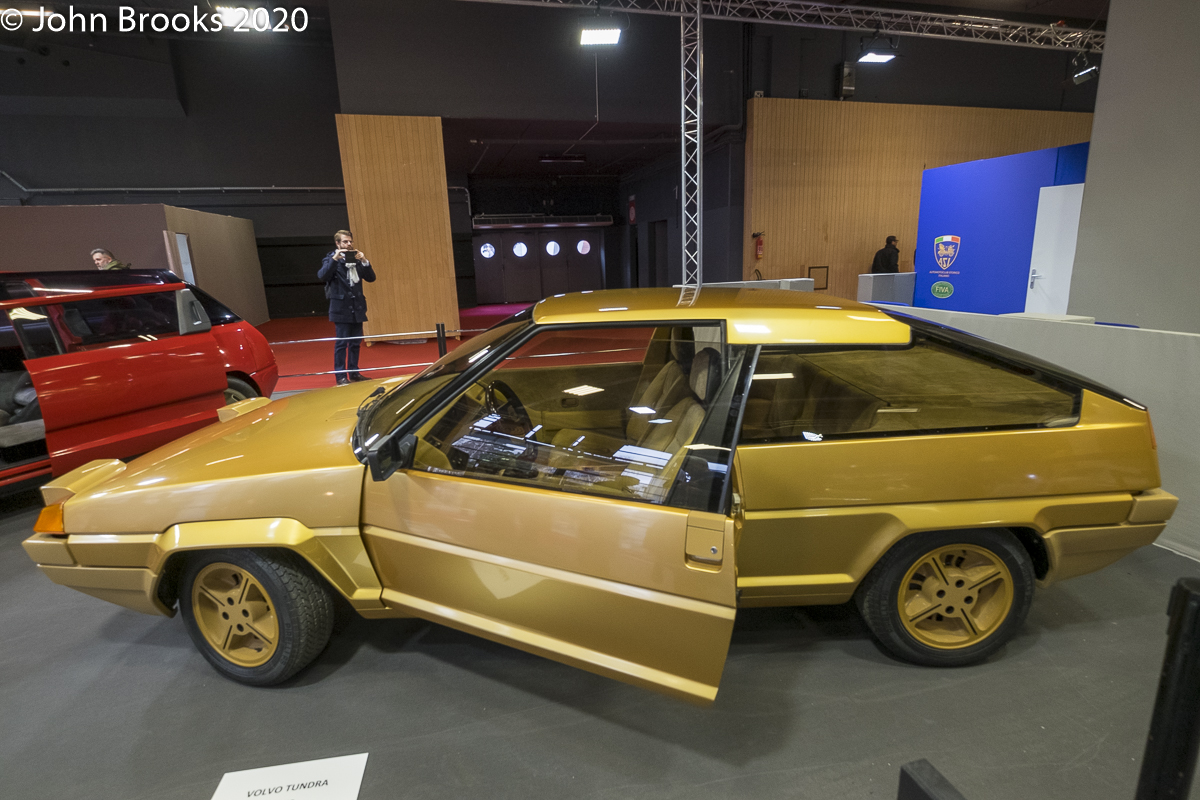
The Volvo Tundra was the work of Marcello Gandini, Bertone’s lead designer for most of the ’60s and ’70s. The concept was based on a Volvo 343, the idea was to generate more business, Bertone having worked on 264TE and 262C, but the concept was rejected by the Swedes. Several design elements would later appear on the Citroën BX.
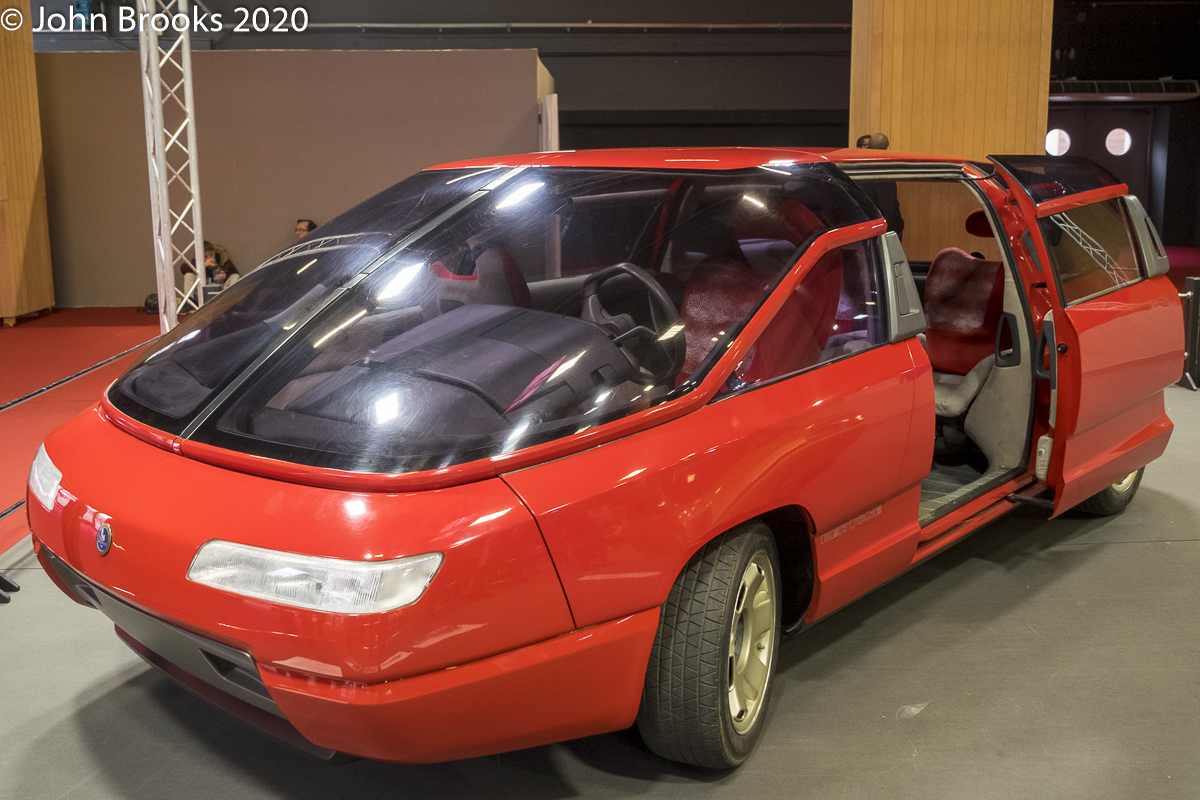
The MPV movement in Europe was in its early stages when Bertone unveiled this unusual concept at the 1988 Turin Motor Show. It featured gull-wing doors hinged at the centre of the windscreen to admit the driver and front passenger, those in the rear would have to use a conventional sliding door, the machine certainly attracted attention. Only able to carry five people the Genesis was already behind the likes of the Renault Espace that could accommodate seven. Perhaps the maddest feature of the exercise was that it was powered by a 5.2 litre V12 Lamborghini engine, normally found in the rear of a Countach. As one authority on Lamborghini’s history, Richard Dredge, put it. “After all, it may have looked great and pushed the the design boundaries but how was anybody ever going to make any money building a people carrier with a V12 engine?”
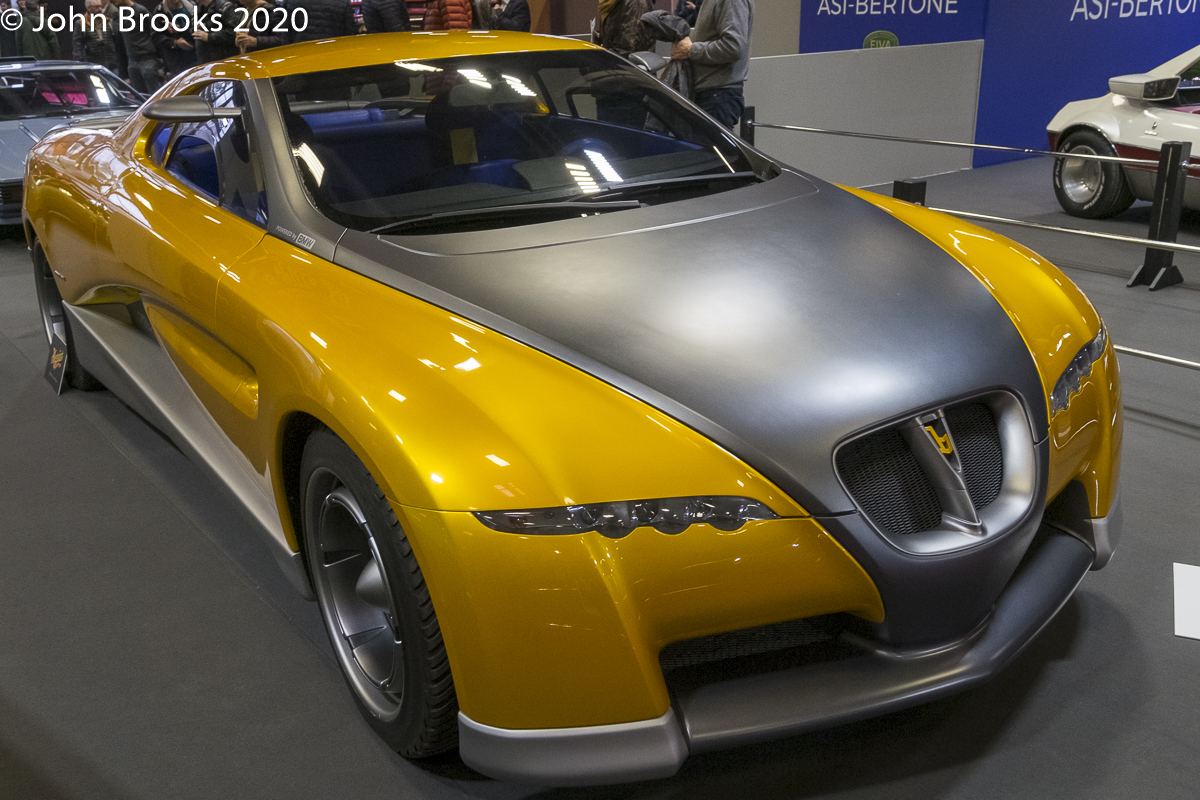
The same vein of crazy what-if thinking that brought forth the Genesis also produced the BMW Pickster. It was based on an E39 BMW 528 with a 3.2-liter straight-six from the M3 to power the pick up truck concept.
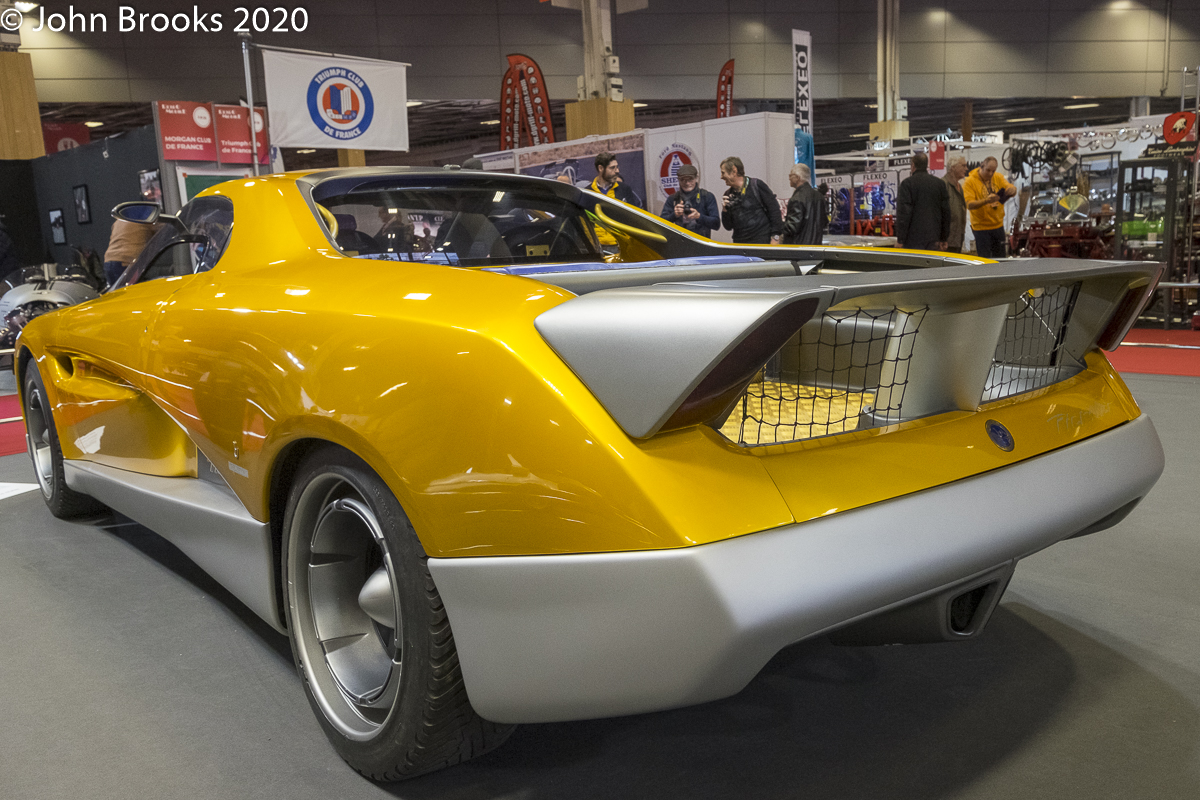
BMW resisted the temptation to take the Pickster and run with it, about the only section of the market that they have not tried to access.
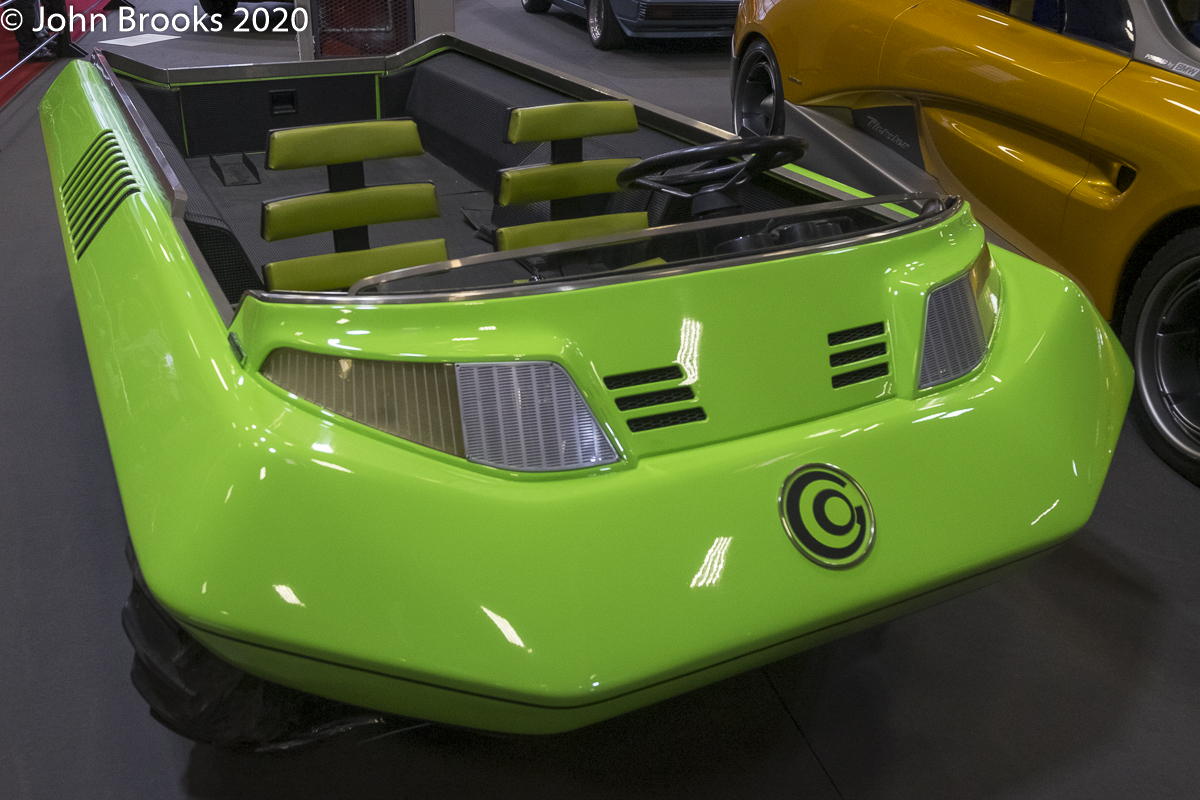
In 1971 Bertone tried to interest Suzuki in an innovative amphibious vehicle, that became known as the Suzuki Go. Gandini was the designer. “I was inspired by the increasingly rubber inflatable dinghy boats.” The two-seater could also accommodate a snow bike or motorcycle in its flat loading bay. It was powered by a three-cylinder Suzuki 750 engine that drove the rear wheels.
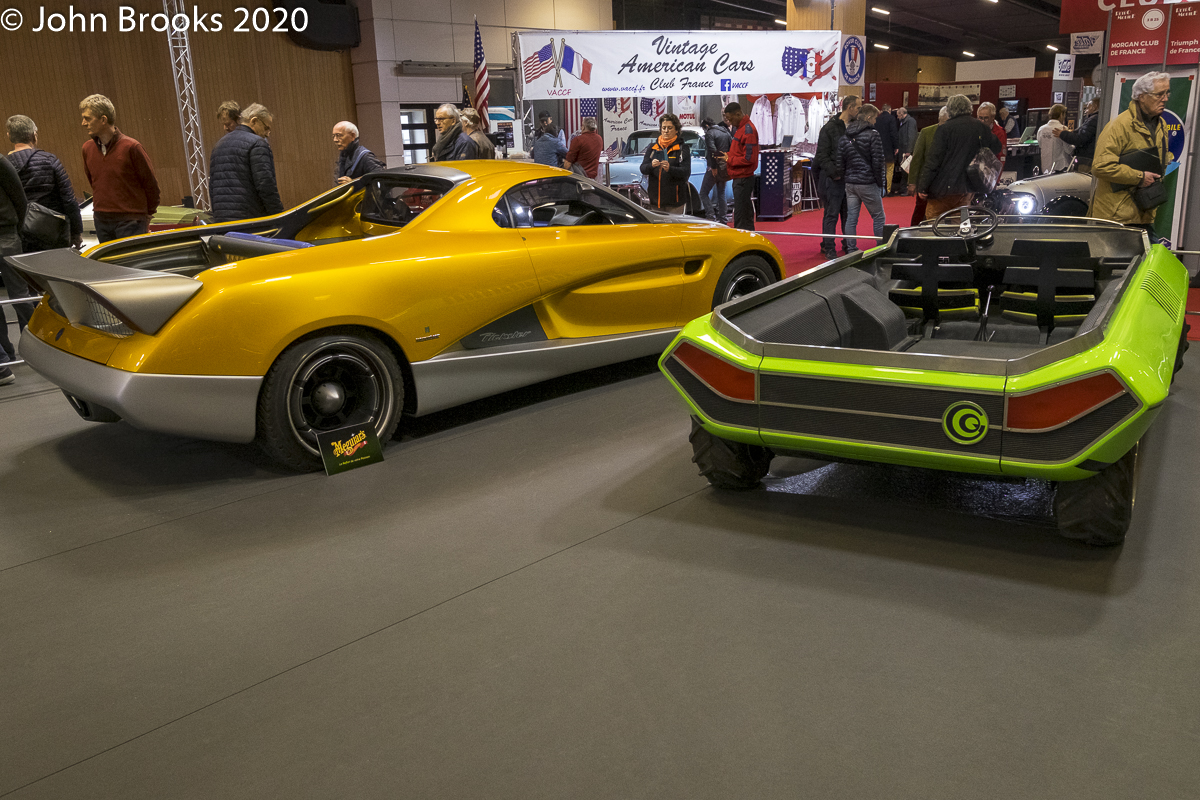
The Go was intended to float and would be powered on water by clamping an outboard motor to the tailgate. The tyres were designed to go off-road and handle dirt tracks and snow with ease.
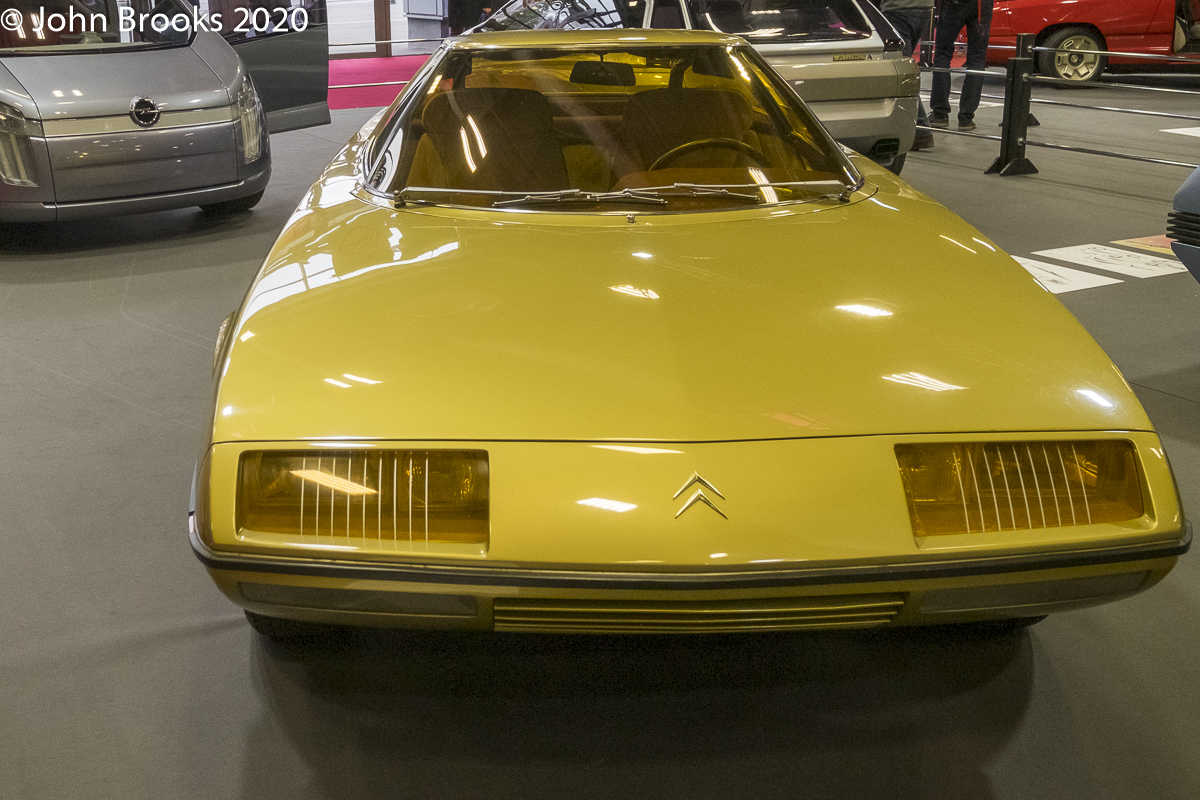
At the same time that Gandini was working on the Suzuki Go he also gave his attention to a development of the Citroën GS, to be known as the Camargue. Launched at the 1970 Paris Motor Show the Citroën GS was technologically advanced for the time, both aerodynamically and mechanically. It had features such as power-assisted disk brakes, front and rear, rarely seen in a car in that market segment. The hydro-pneumatic suspension had been developed since it first appeared on the DS range, giving both a comfortable ride and excellent road-holding. This translated into sales and awards including European Car of The Year. CEO Nuccio Bertone asked Citroën for a car to play with, the French were happy to supply one and Gandini got to work.
Unusually for a Bertone creation there was an absence of sharp edges, more softly curvaceous than angular. The 2+2-seater Camargue coupé was dressed in a metallic champagne colour and was an instant sensation when it was revealed at the 1972 Geneva Motor Show. Citroën also featured the Camargue as its prize exhibit on its trade stand at that year’s Le Mans 24 hours, causing speculation that they were seriously considering the concept for production.
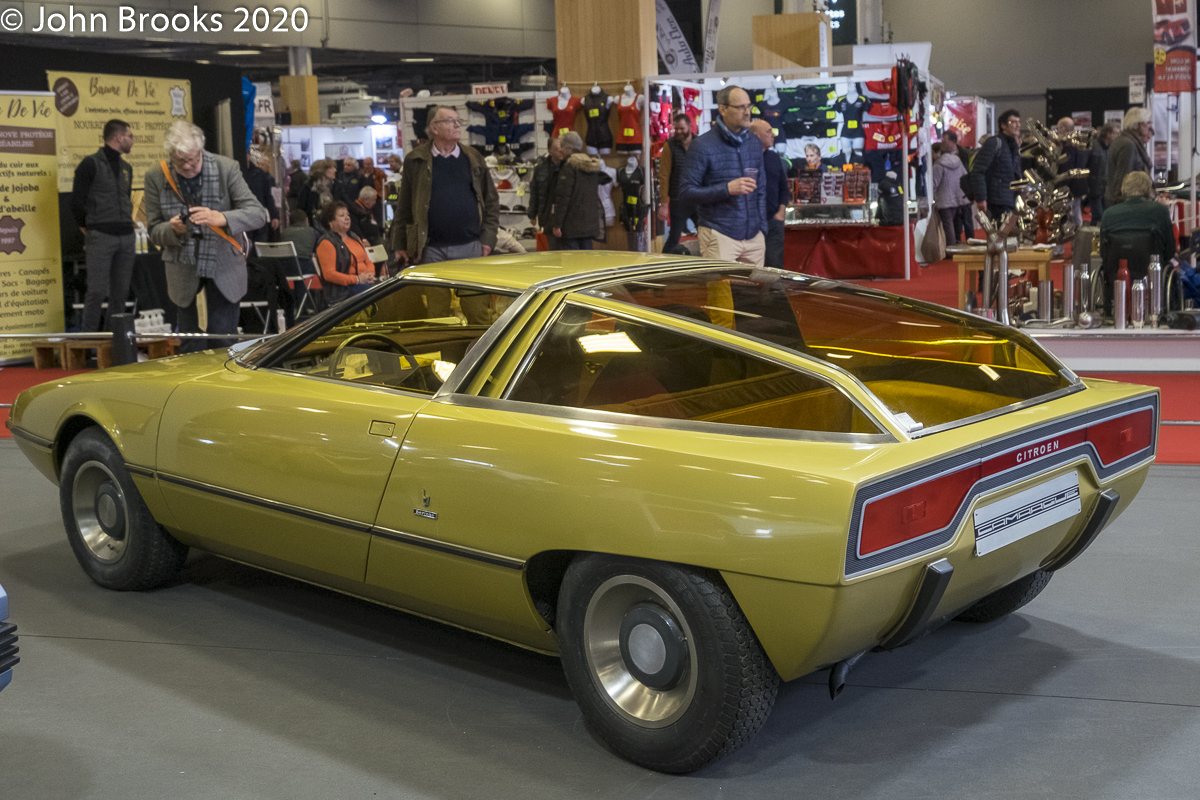
However, events overtook Citroën as the cost of developing the new SM and other products seriously overran and it was the same story with their investment in Maserati. The alliance with Fiat, who had acquired a substantial stake in the French company from Michelin, did not work out as planned. Another expensive, ill-judged initiative, designing and building thirsty, but powerful, rotary engines with NSU, was torpedoed by the Yom Kippur War and the subsequent oil crisis. Fiat sold their share of Citroën back to Michelin who were on a long term strategy of divesting themselves of any holdings in motor manufacturers. Citroën’s failure to have a product in the profitable middle range of cars in the European market meant there were no reserves to fall back on, they were bankrupt. The solution to these conflicting issues was facilitated by the French government and Michelin, Citroën was taken over by Peugeot, and was saved from destruction. Peugeot had no time for niche products such as the Camargue and the attractive concept passed into history, very much a case of what might have been.
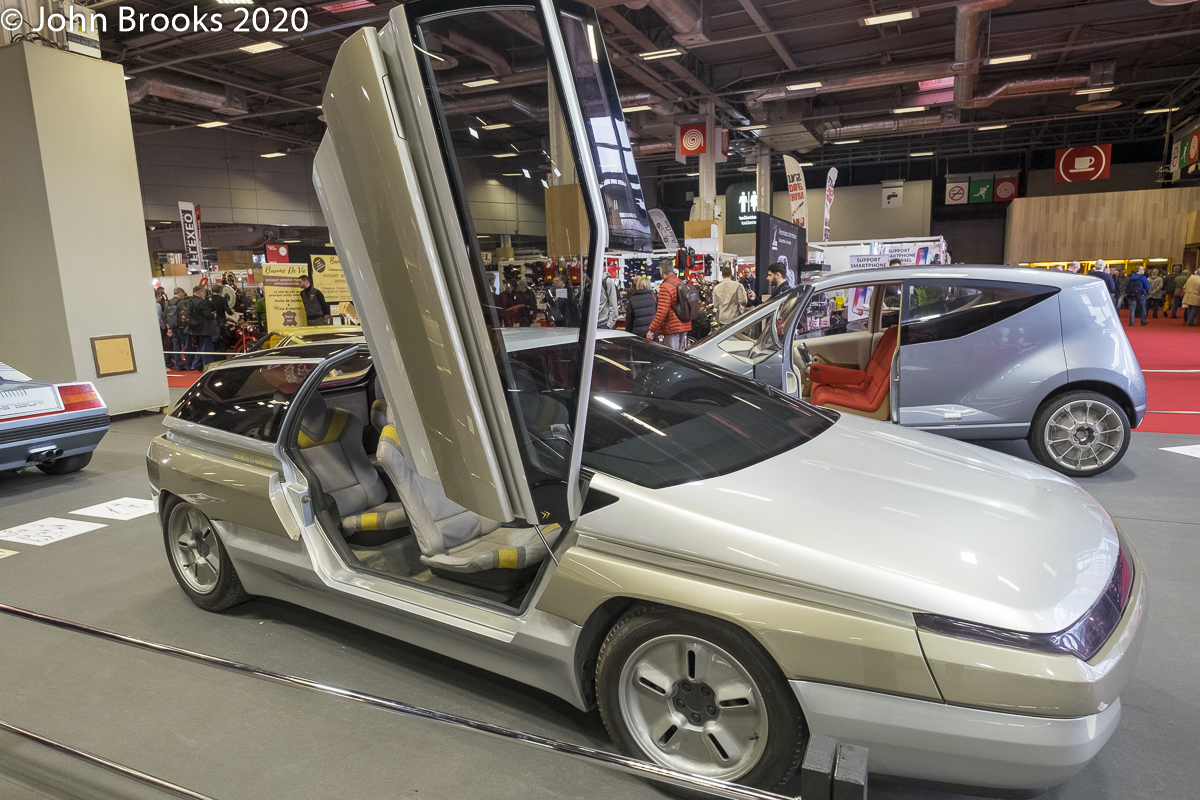
Just over a decade later Bertone and Citroën came up with the Zabrus, based on a BX 4TC. Another 2+2 concept with dramatic scissor doors and a funky interior.
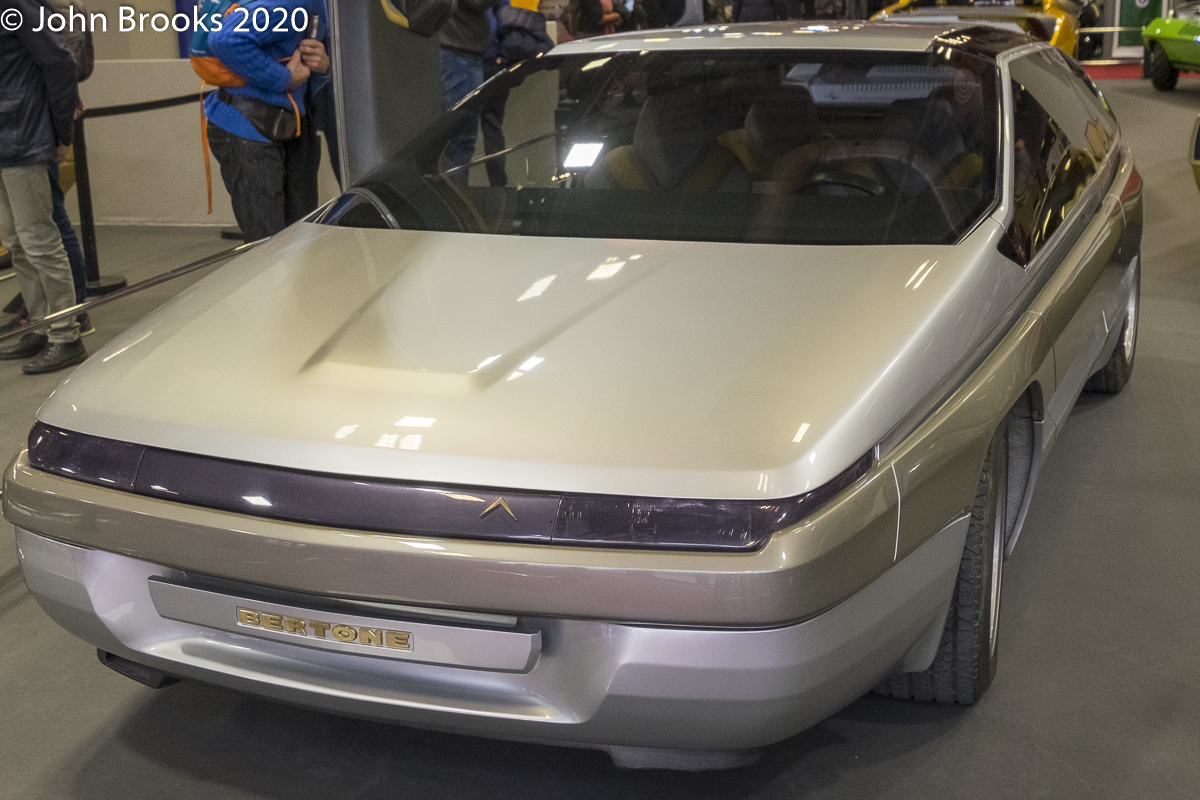
Powered by a 2.2 litre turbocharged 4-cylinder engine that drove all four wheels, both a legacy of Citroën’s recent rally program. The Zarbus did not fit with the product strategy of the time and was not implemented. Various styling elements did appear on the later XM and Xantia models.
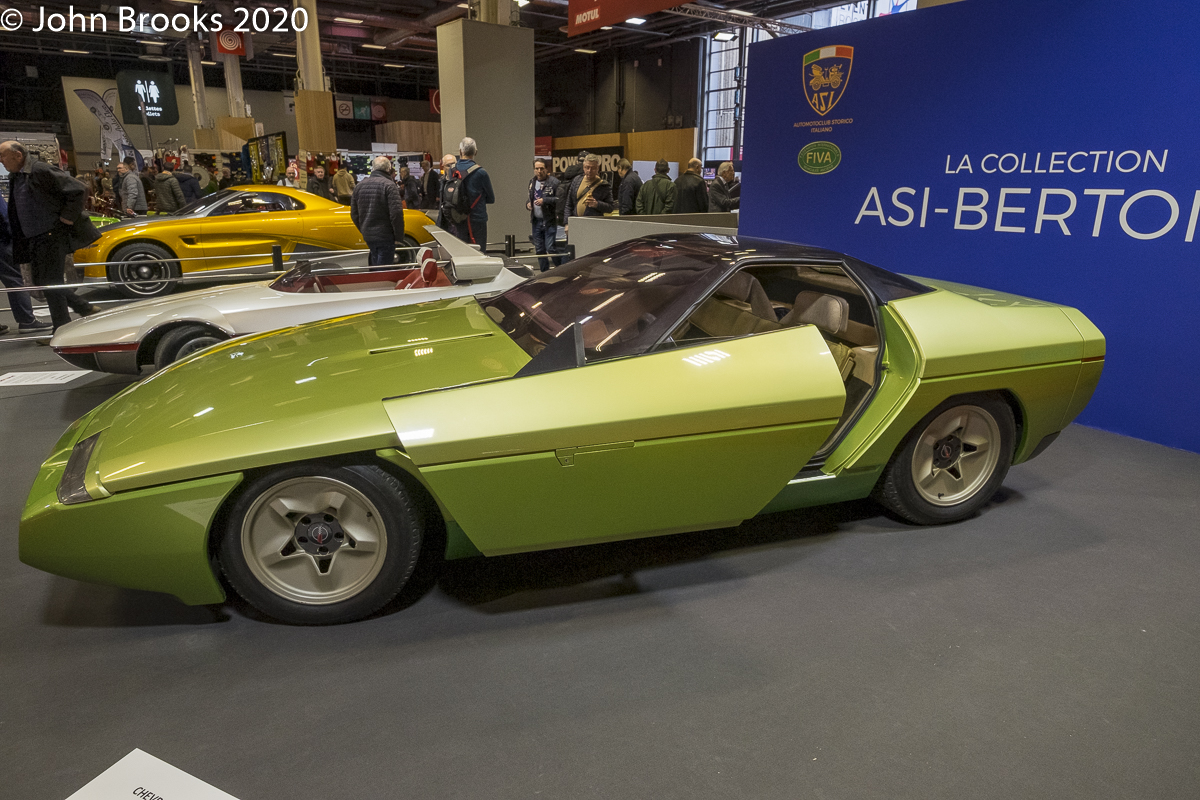
The foundation for the Bertone Ramarro, named after a local lizard, was the recently launched Corvette C4, indeed the car used to create the concept was the chassis that introduced Europeans to the new Vette at the 1983 Geneva Motor Show. Working round the clock Bertone were able to spring the concept on the Americans at the Los Angeles Auto Show.
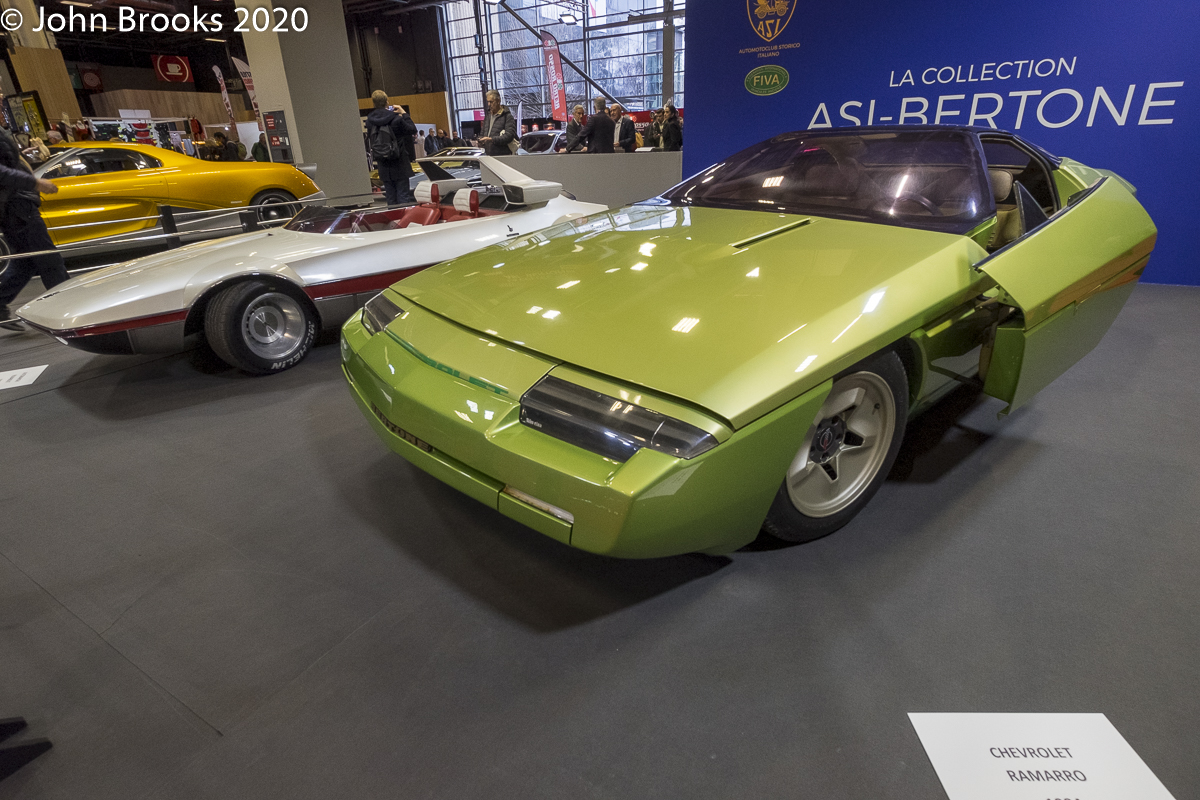
One of the aims of the concept was to celebrate the Bertone brand, the stylist behind so many familiar cars. The Vette’s radiator and air conditioning system were shifted to the rear to allow a more aerodynamic front profile. Another big change from the production car were the doors which were long, consequently their opening arc was very wide. So the designers decided to change them and the doors slid forward which created another set of problems to be solved.
The Ramarro toured round the globe attending motor shows and was a success with both the general public and the media. It received the Turin-based magazine, Auto&Design, 1985 Car Design Award for its “bold ideas,” which gave “the Chevrolet Corvette an entirely new personality.”
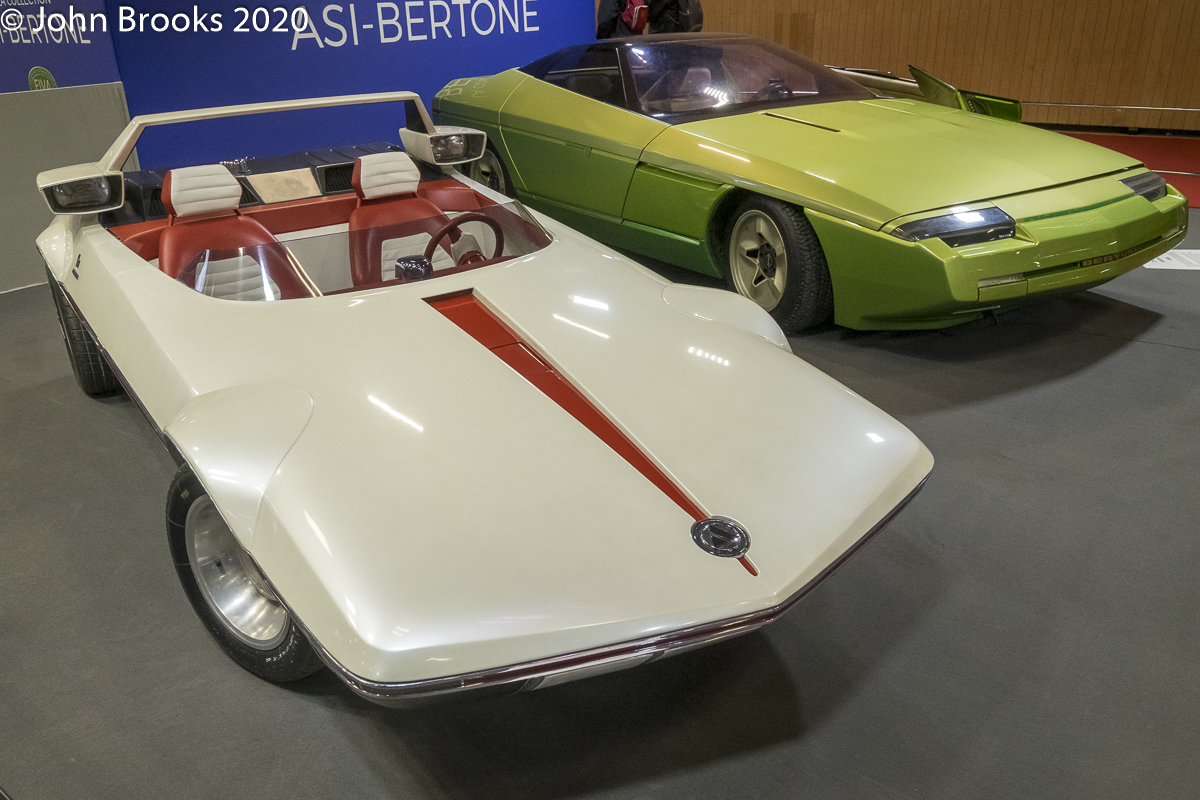
The Autobianchi A112 Runabout dates back to 1969 and was another Gandini design. It was an attempt to convince Fiat that they should consider a mid-engined layout for their budget performance car. This followed a path that had been established by Matra, Lotus and VW-Porsche in the final years of the ’60s. Taking many design cues from the world of speedboats the Runabout was very popular with press and public alike when unveiled at the Turin Motor Show. This helped to convince the Fiat management and the result was the Fiat X1/9, a best selling sportscar.
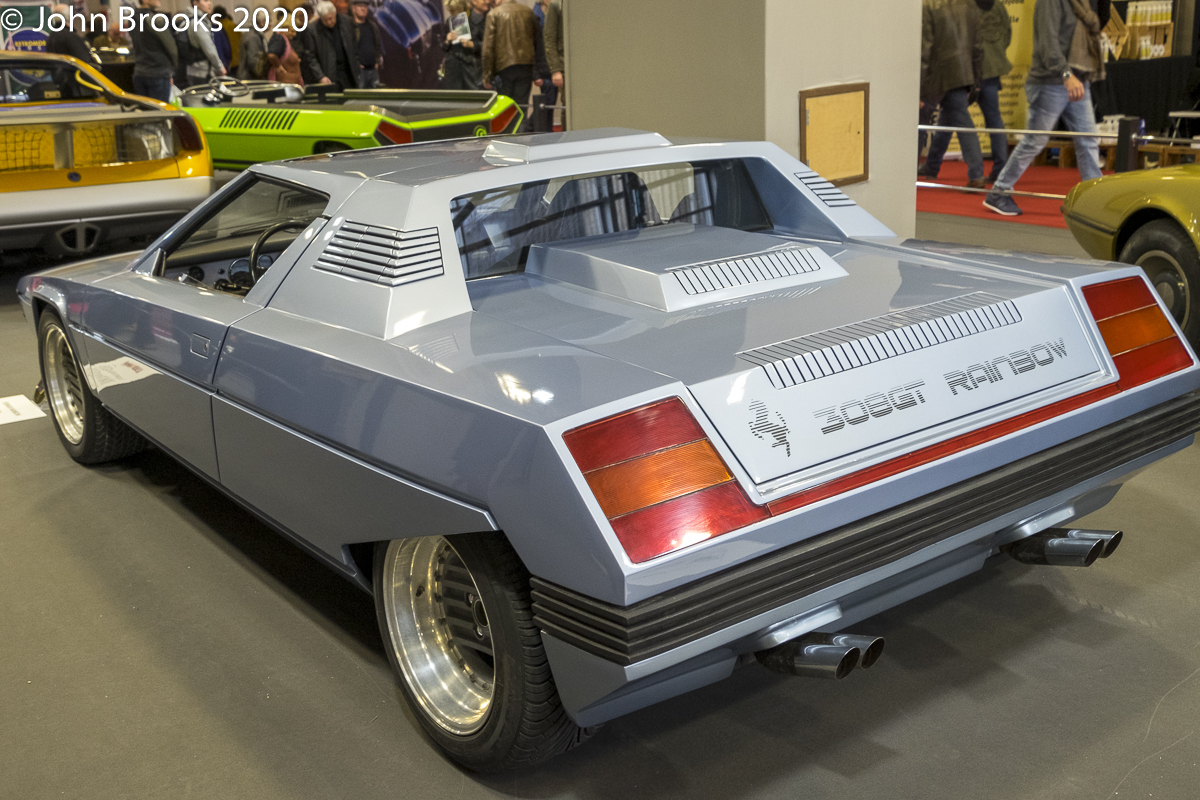
The Ferrari 308 GT4 was a major departure from Maranello’s normal protocols. It was the first Ferrari mid-engined 2+2 and the first to be powered by a transverse mounted V8 engine. Even a casual glance would reveal that this was not the customary collaboration between Ferrari and Pininfarina, it had Bertone and Gandini’s fingerprints all over the coachwork, looking more like a Lamborghini than a Ferrari. Although sales were better than the 246 Dino it replaced, the 308 GT4 was never loved in the way that most of Maranello’s finest are. It was no surprise to see Pininfarina back at the drawing board for the successor, the 308 GTB.
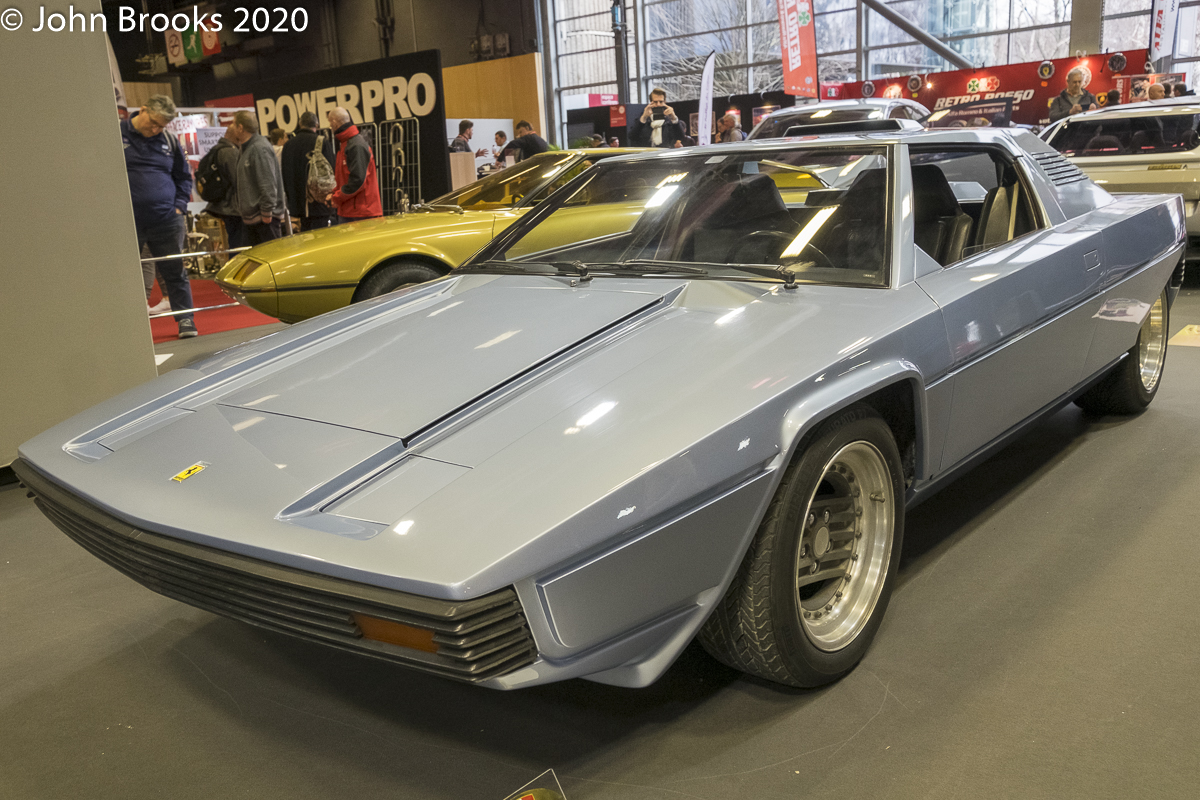
Bertone continued to manufacturer the 308 GT4 bodies but it was clear that there would be no future business with Ferrari, as the two organisations had a widely differing sense of styling. Gandini expressed it succinctly. “I did not see much point in designing a Ferrari concept that looked like a Ferrari, as the designers at Pininfarina and others were very much capable of doing so. If we had to do a concept on a Ferrari base, I believed that we needed to look at something that would be radically different to that what would be expected.”
At the 1976 Turin Motor Show Gandini and Bertone revealed their solution as to how the future smaller Ferrari should look, the Ferrari Rainbow was their answer. Angular and aggressive , it was unlikely to ever find favour with Maranello but perhaps that was the intention. One innovation that Ferrari eventually followed was the retractable targa top roof that would fold down behind the rear seats, it was an ingenious way of having both a coupé and a spider in the same car.
John Brooks, July 2020
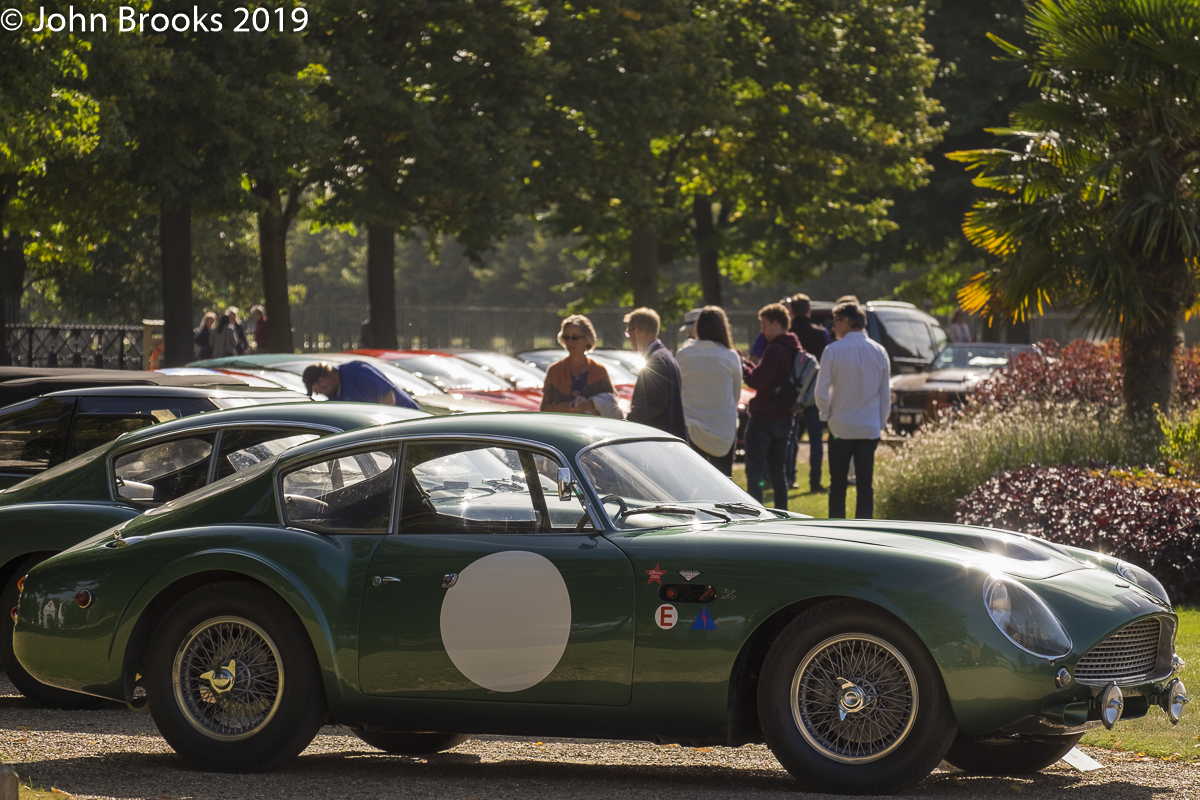
Time to leave the Concours of Elegance behind.
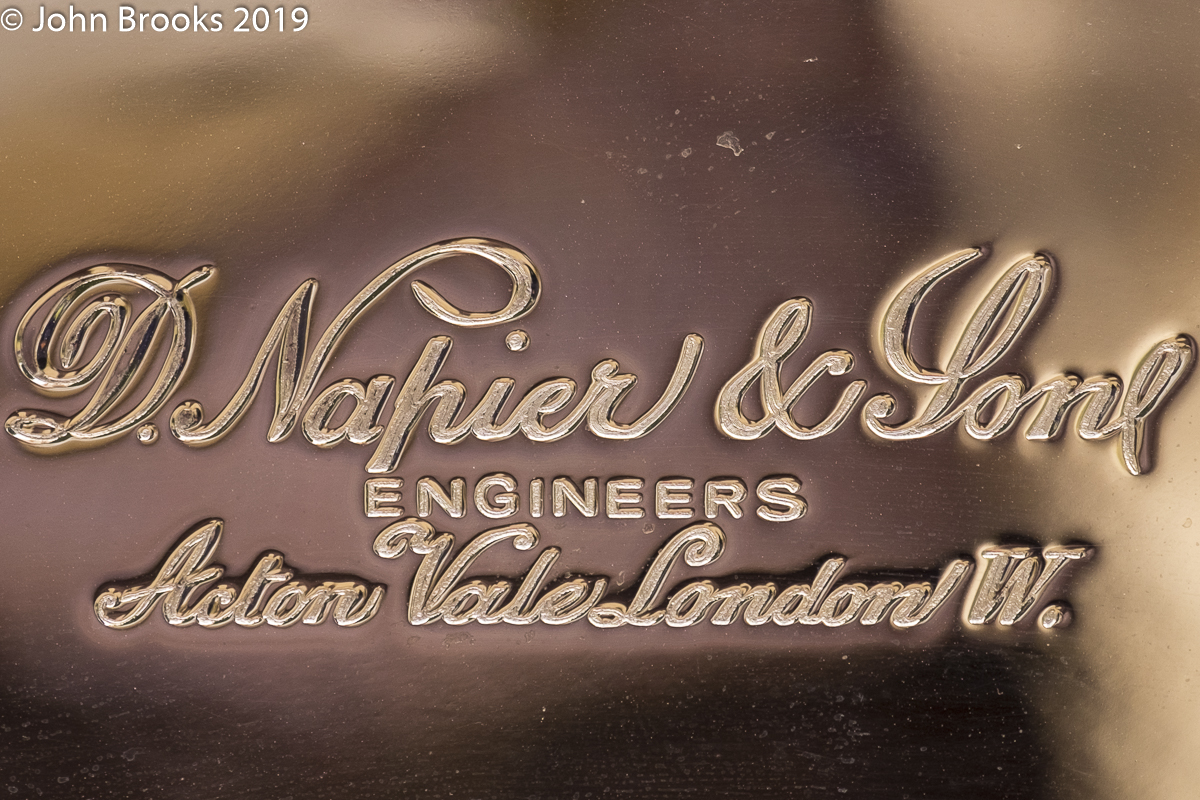
Here is a final glance back to a glorious three days.
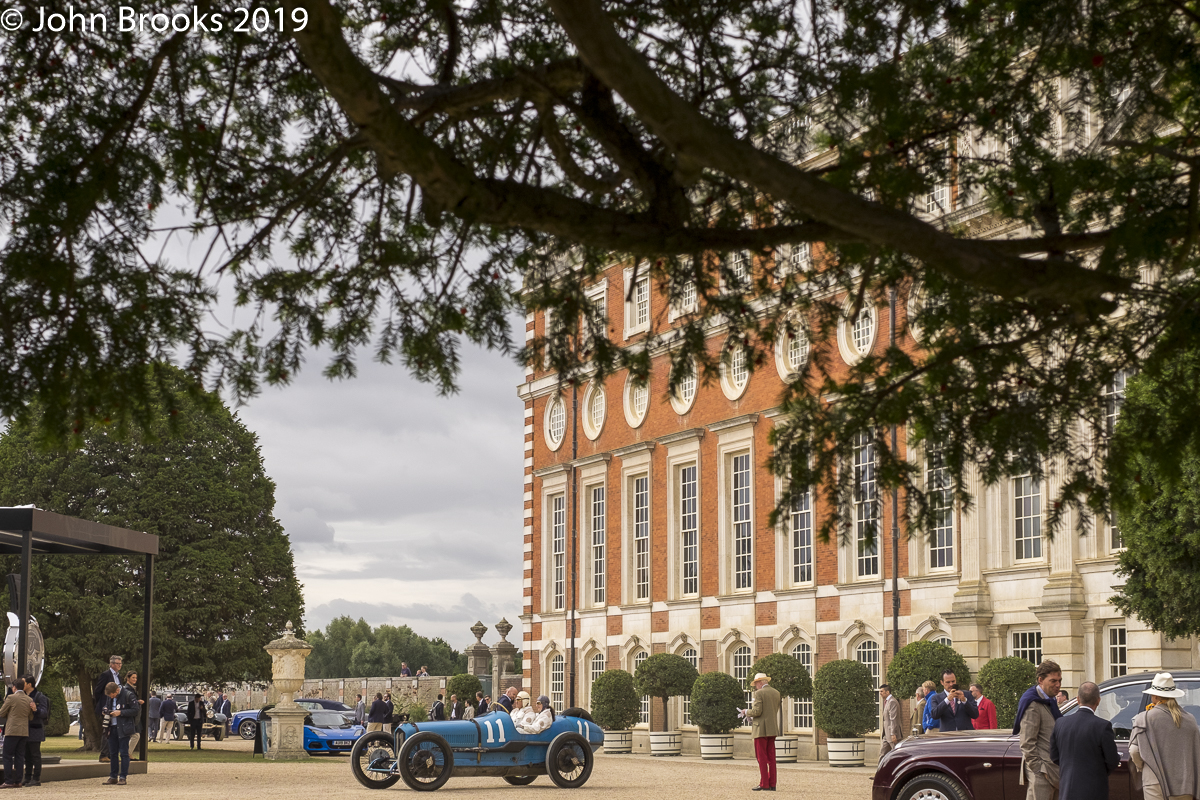
In month or so we will reassemble in the shadow of Hampton Court palace.
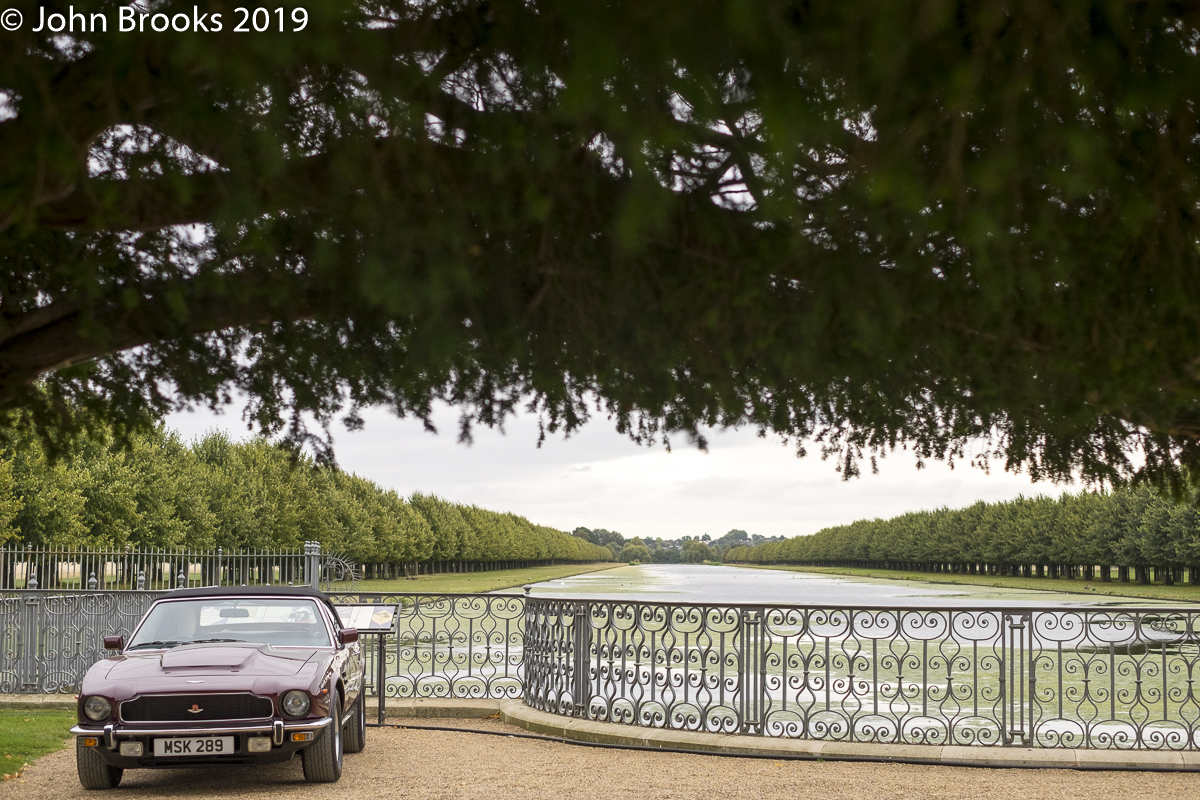
There will be much to enjoy together, a feeling that has been in rather short supply during a good part of 2020.
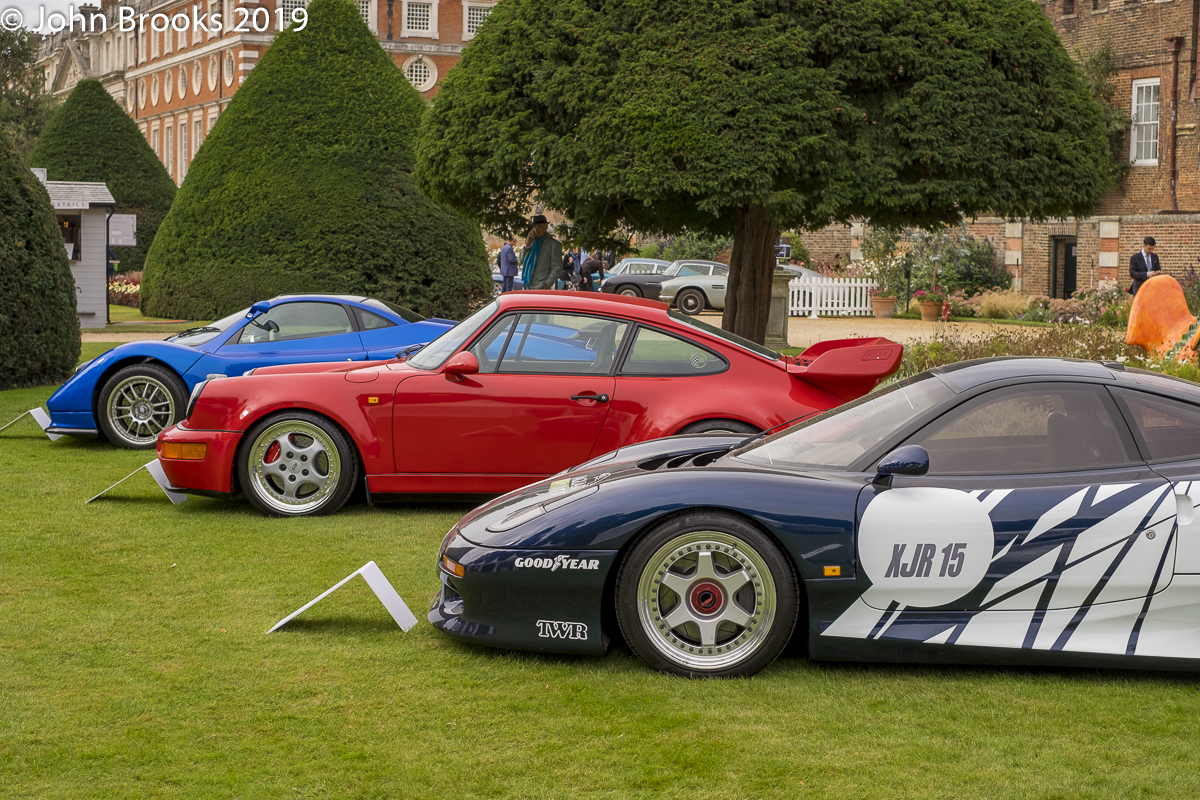
So, let’s look forward to September 4-6 and put the band back together.
John Brooks, July 2020
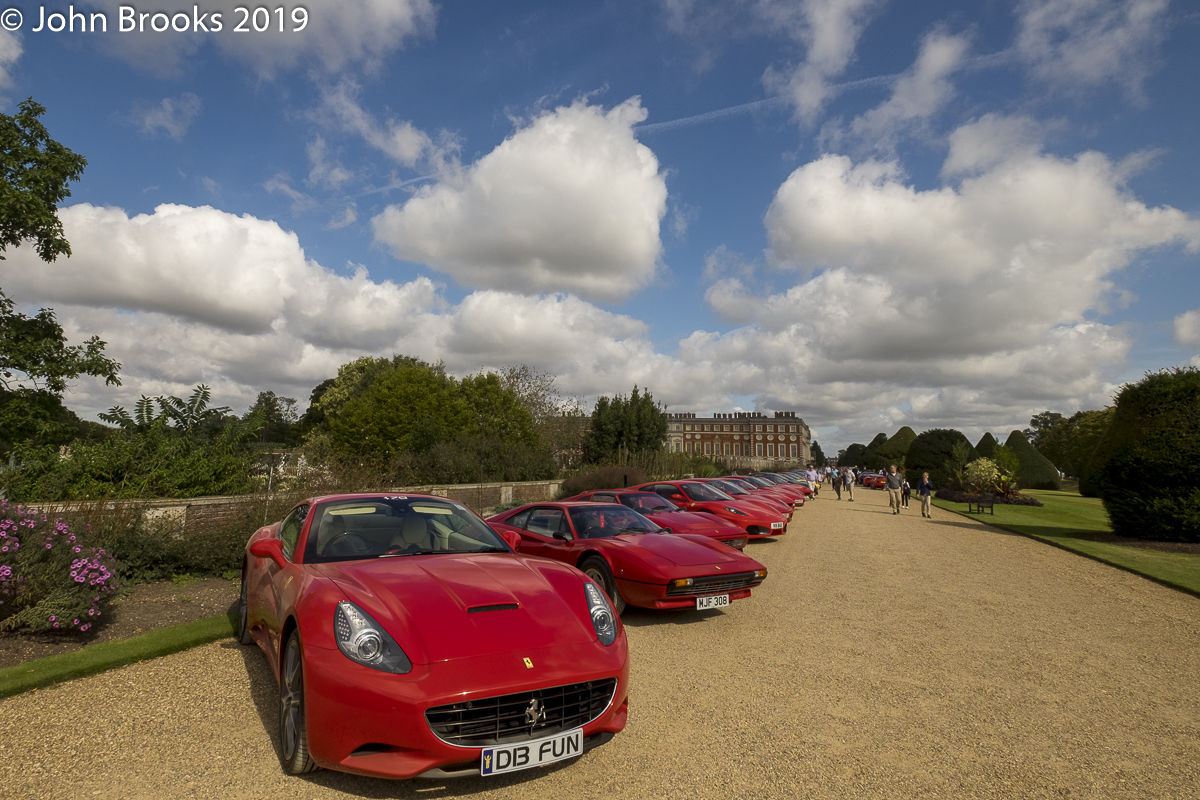
The influence of Italy on the automobile has been immense, particularly in the performance and style areas. So, when considering the the rich tapestry of cars on display at an event like the Concours of Elegance, it pays dividends to seek out the Italian element and give it the due attention it deserves.
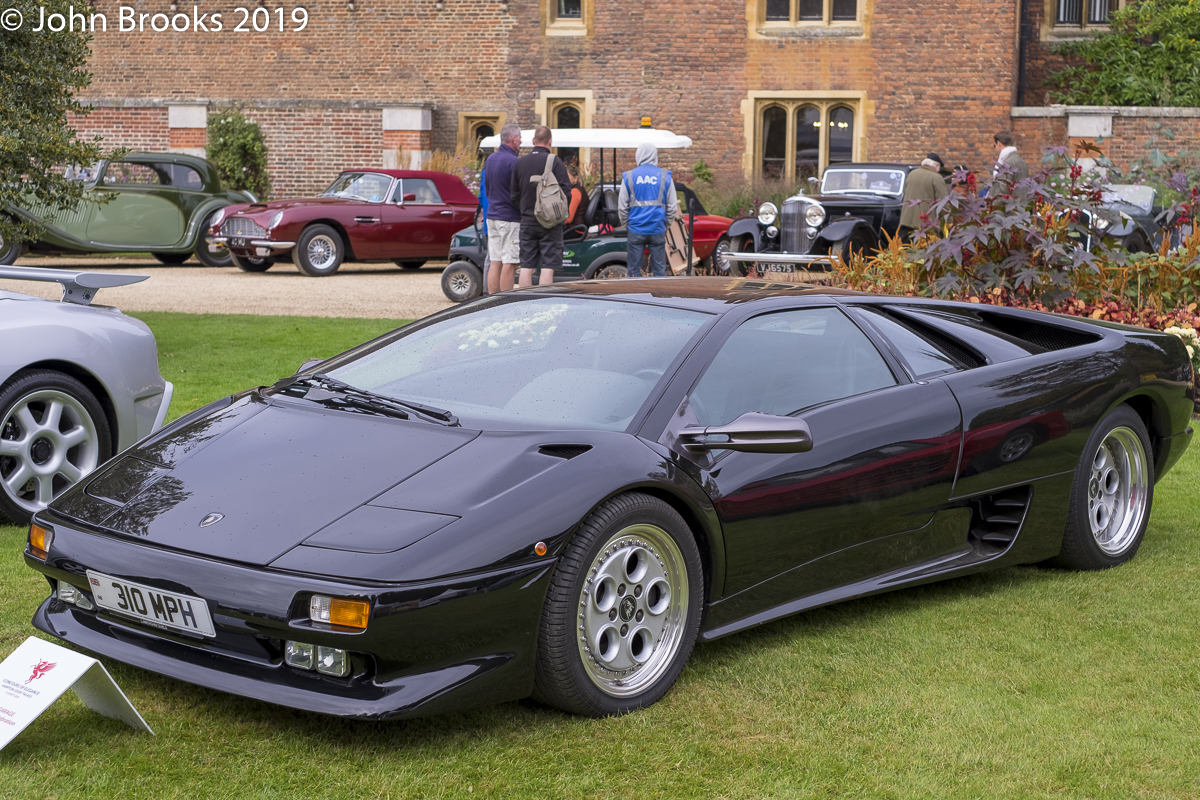
Within minutes of entering the Great Fountain Garden I stumbled across two Italian classics, this Lamborghini Diablo, the answer from Sant’Agata Bolognese to the Ferrari F40. At this point in time Lamborghini had just been acquired by Chrysler, the deal was done the day after the first Diablo prototype ran. Thirty years on and the Diablo still creates an impact when encountered.
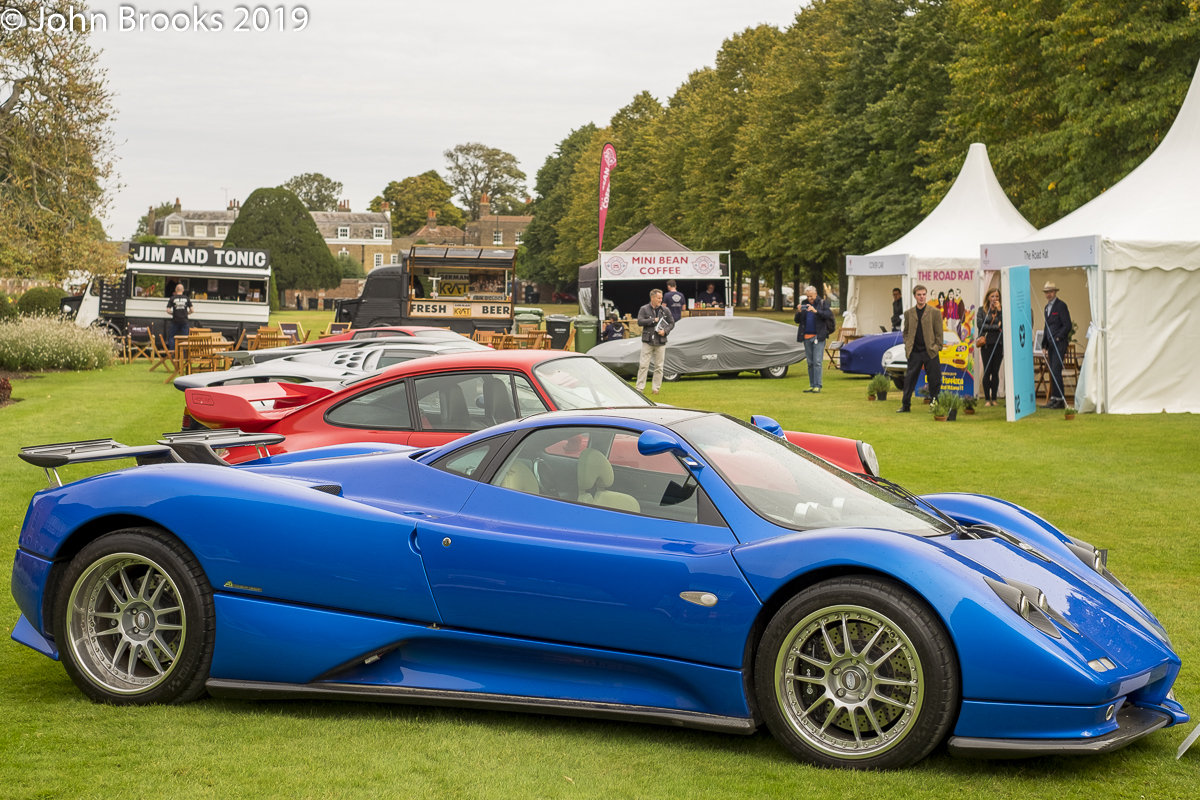
The same can be said of the Pagani Zonda, perhaps even more so, given the rarity of the beast. Just around 150 examples are thought to have emerged from the factory at San Cesario sul Panaro. This is located in the mechanically fertile territory between Modena and Bologna, not far from Lamborghini’s factory.
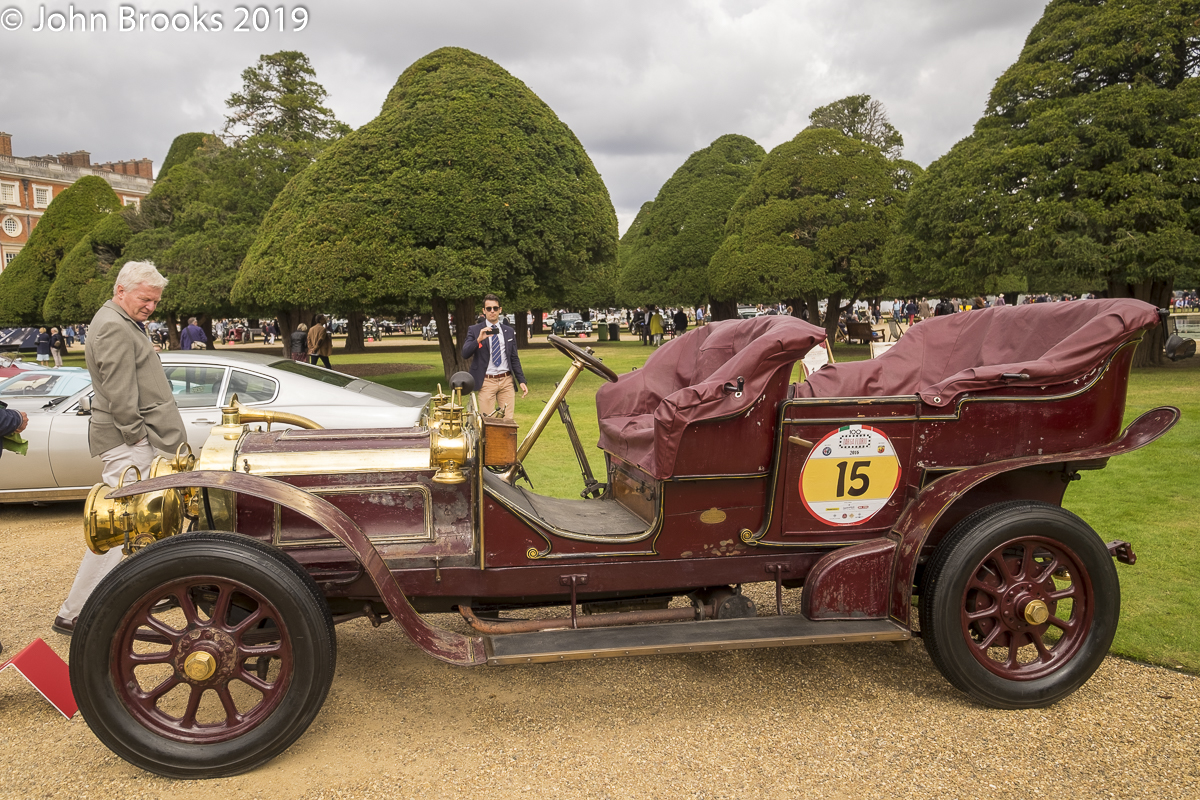
A complete contrast is the 1907 Diatto A Clément, it being the only known survivor of this model. It was the result of a partnership between the Turin coachbulider, Diatto, and French entrepreneur, Adolphe Clément-Bayard who was involved in the design of bicycles, tyres, aeroplanes as well as cars. He was a pioneer in motor sport entering three cars in the 1906 French Grand Prix, held near Le Mans, generally agreed to be the first Grand Prix. His son, Albert, finished third in the race but was killed in a crash during practice for the same event in 1907.
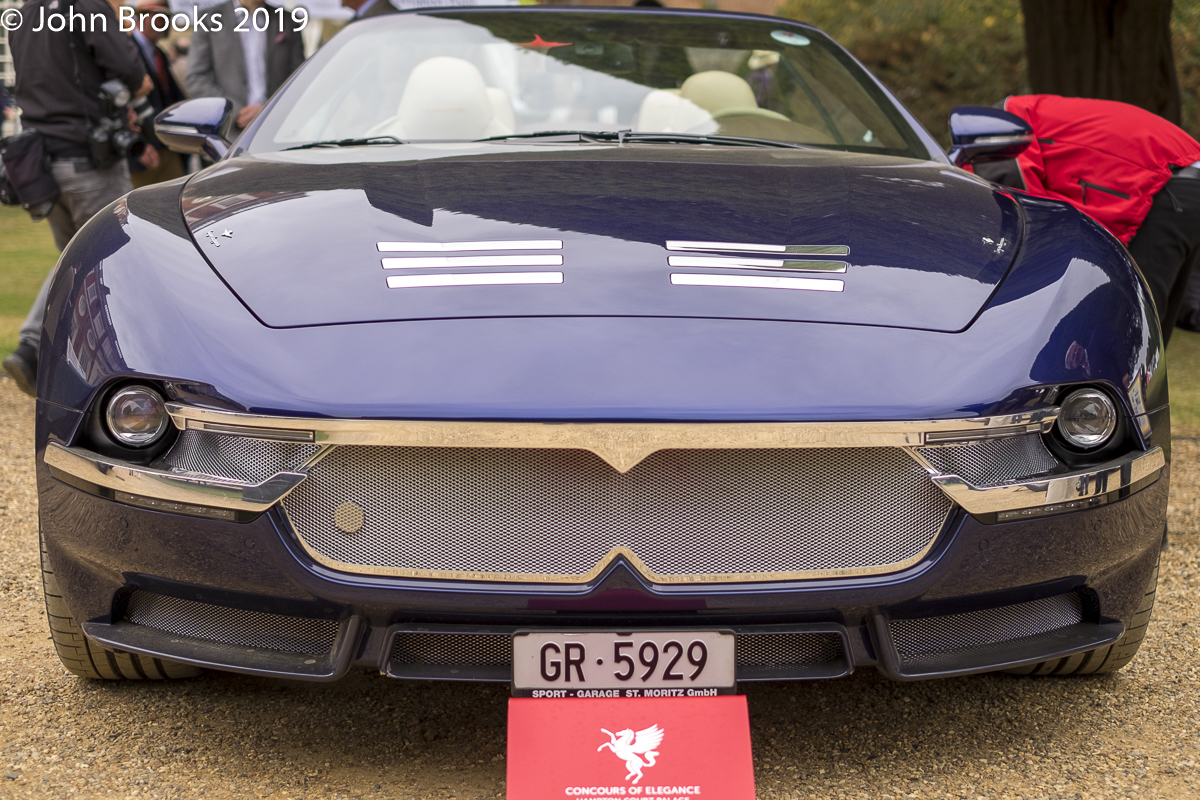
Bang up to date is this salute to the past. In 1959 the Shah of Persia ordered a very special Maserati, a development of the 3500 GT, with a larger V8-engine to power it and various bespoke features to distinguish it from lesser mortals’ cars ; it was the quickest GT of the time. Fast forward seventy years and Touring was modifying a Maserati once more. The Touring Superleggera Sciàdipersia (Shah of Persia) Cabriolet was the result. Based on a current Maserati GranCabrio, the Sciàdipersia is a throwback to the days when a manufacturer would supply a chassis and powertrain, then a coachbuilder would style and fit out the car to the customer’s individual specification.
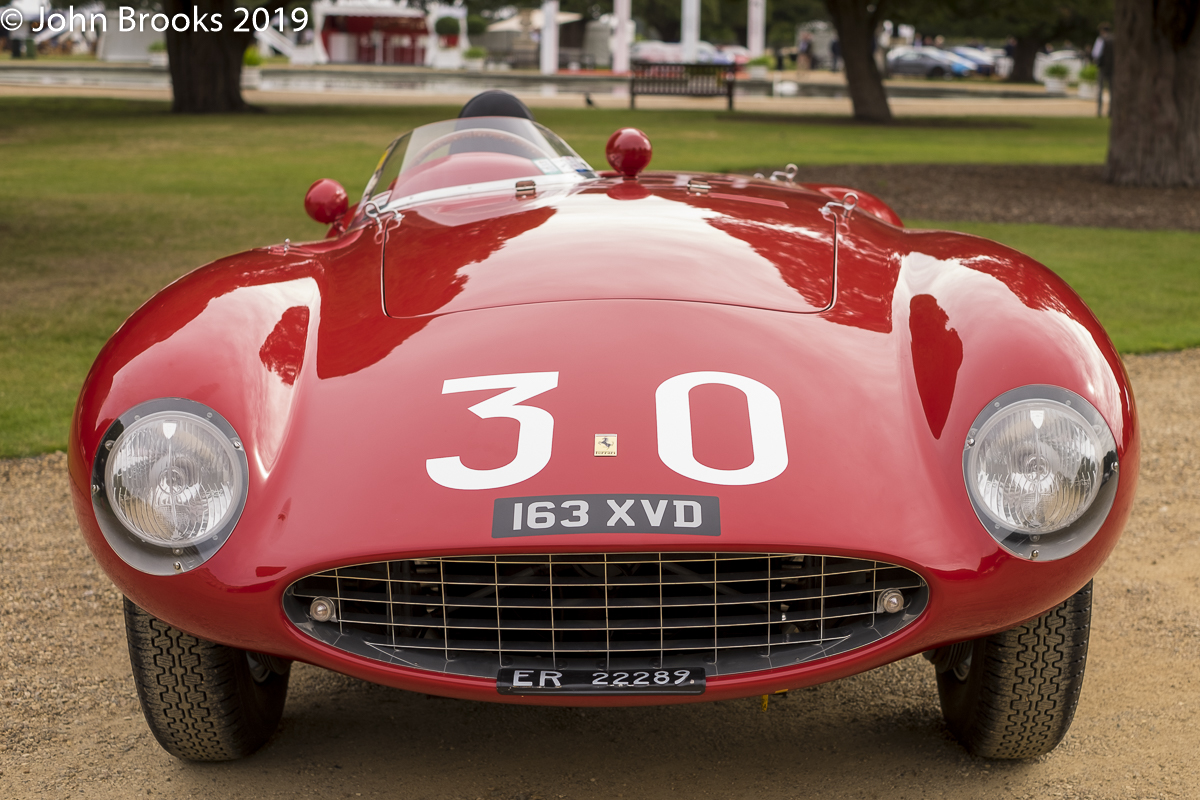
This Ferrari 500 Mondial is a Series I car that was bodied by Scaglietti on drawings made by Dino Ferrari, one of five such examples. It was purchased from the factory by Guido Petracchi who entered it in the 1955 Ethiopian Grand Prix which he won. It was later displayed in the Italian pavilion at the Silver Jubilee Fair of Addis Ababa. It had another outing at the Cote de Asmara race in 1956, where it took overall victory with Gaetano Barone behind the wheel. Two further victories came shortly after, but then the car was put into long-term storage in Ethiopia. In 1970, car collector and dealer Colin Crabbe was on vacation in Asmara, Ethiopia, when a local led him to a small lock-up containing the totally original 500 Mondial – Crabbe bought it on the spot.
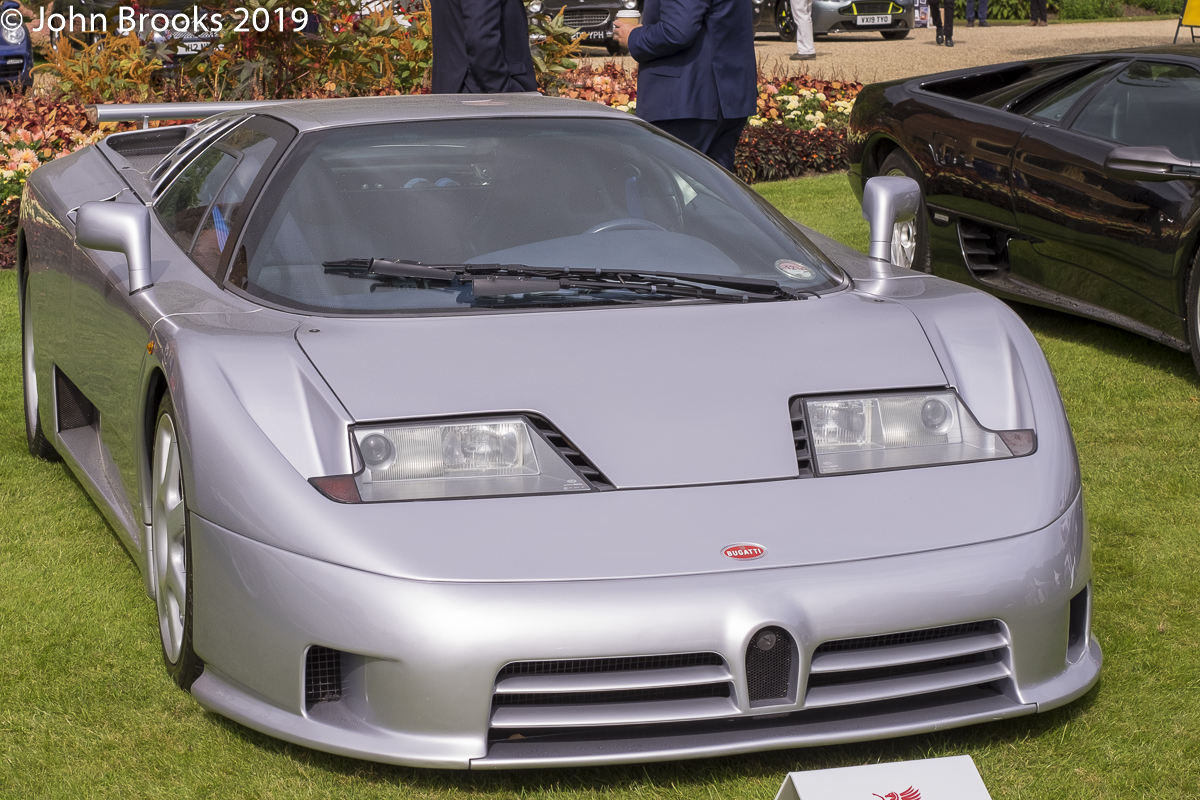
Another striking Italian is this Bugatti EB110…………..I looked at this episode in Bugatti history a while back HERE
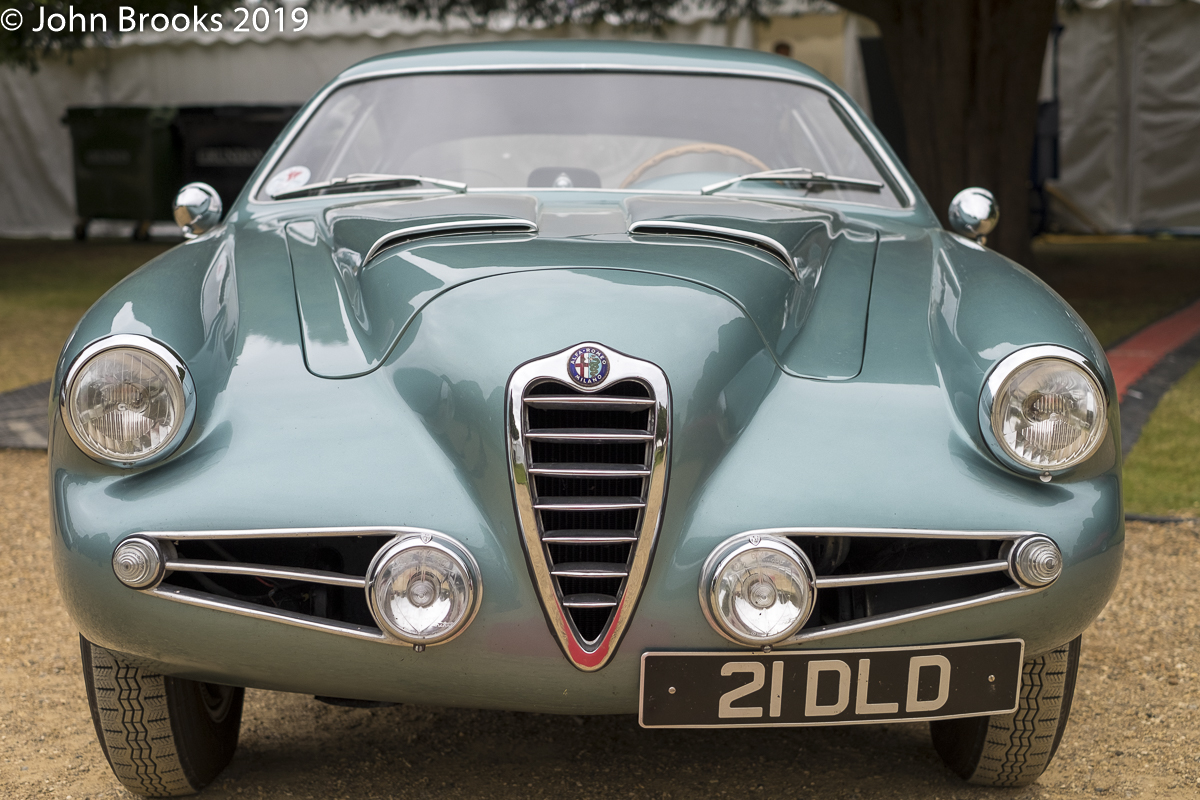
This elegant 1954 Alfa Romeo 1900 C SS Zagato has a proper race pedigree, being owned from new by Jo Bonnier, who would go on to have a successful career in F1 and endurance racing. In the three races that he started with the Alfa he would take class honours each time, winning the 1955 Swedish Grand Prix outright.
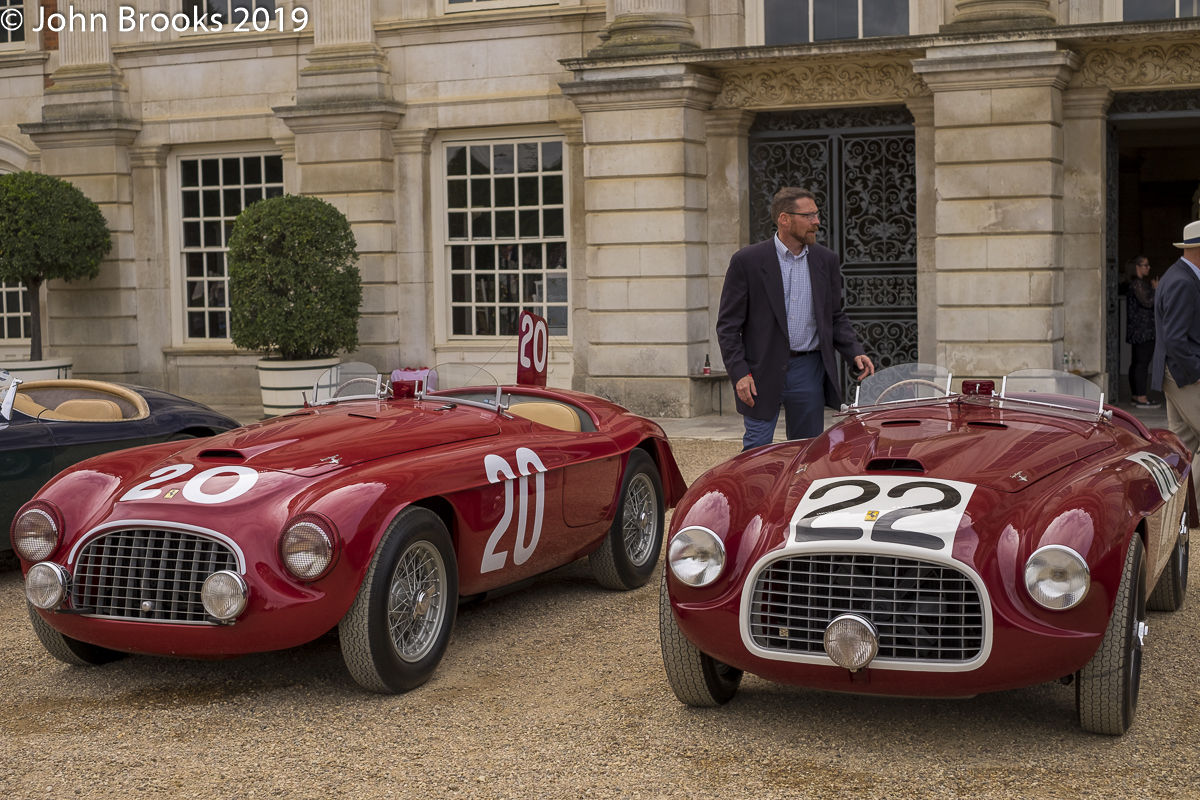
1949 was a most significant year for Ferrari. Victories in the Mille Miglia and both the 24-hours of Le Mans and Spa established Ferrari at the very summit of endurance competition. Amazingly these two 166 MM Barchettas achieved the three triumphs and both were at Hampton Court for our appreciation.
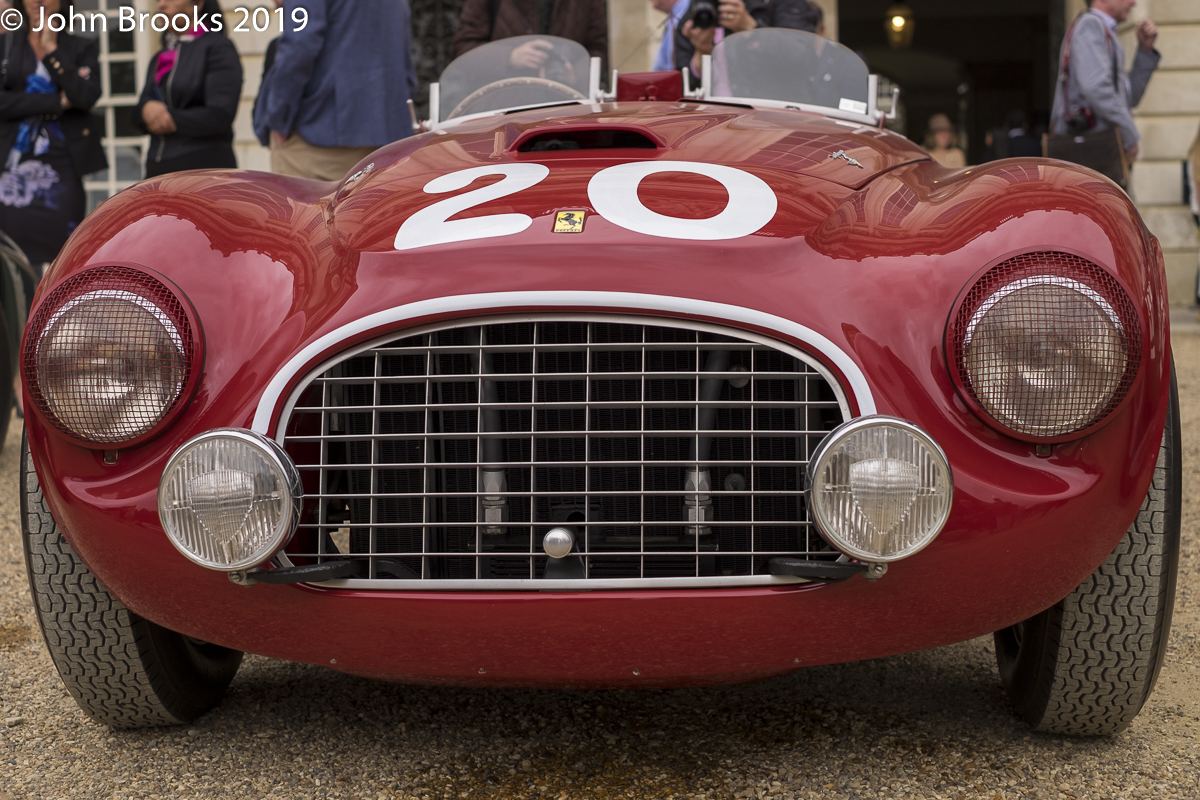
Chassis #0010M was entered in the 1949 Mille Miglia but there is some dispute as to whether it was the Felice Bonetto and Carpani car that finished second overall after leading to Rome. Some sources declare it was the Piero Taruffi and Sergio Nicolini car that retired with a broken transmission at Ravenna. It was then sold to Luigi Chinetti who entered it at Le Mans for Jean Lucas and ‘Ferret’ (Pierre Dreyfus). All went well for the pair till it got dark on the Saturday evening. Dreyfus overturned 166 MM, without injury, at White House Corner, their race was over.
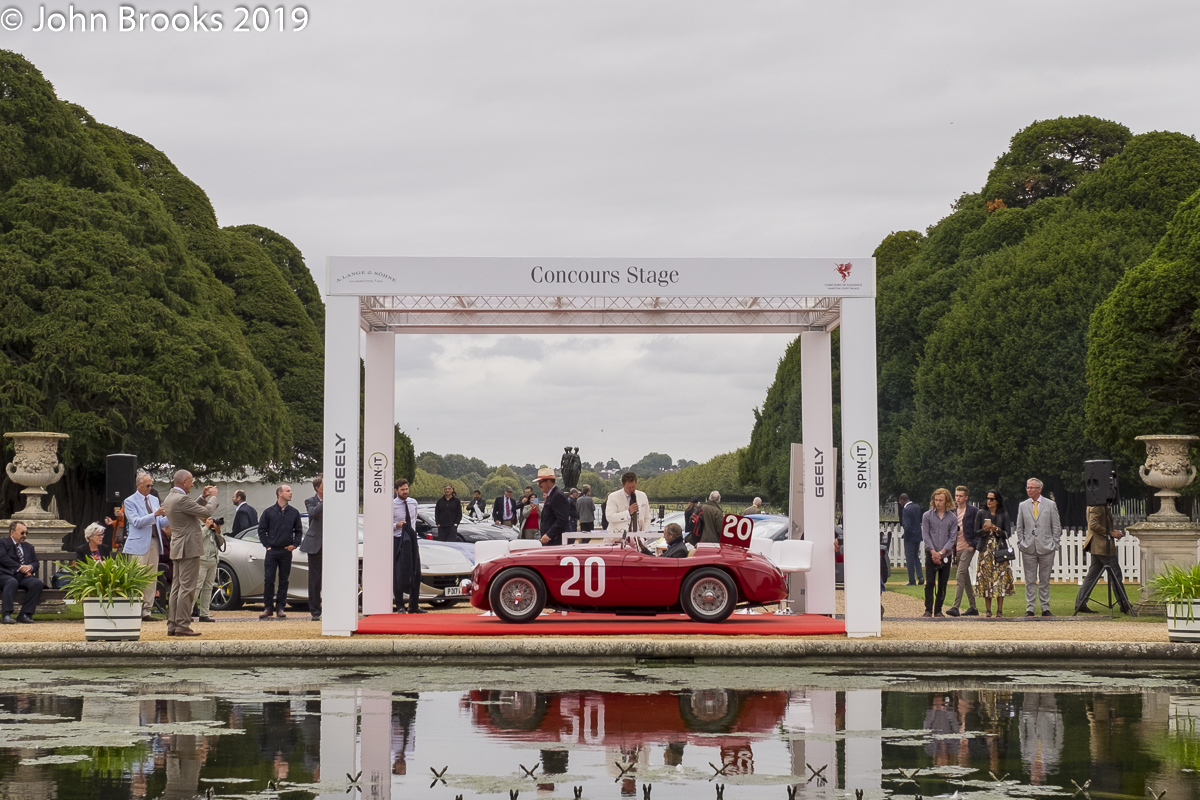
A few weeks later the Ferrari was entered in the Spa 24 Hours with Chinetti and Lucas on driving duties. At the halfway point they assumed the lead and were cruising towards an easy victory till drama hit in the very final stages of the race. Motor Sport described the scene. “Louveau’s Delage had motored faultlessly, so that it really looked as if the Le Mans maladies had been cured. Then, after some 23 1/2 hours, oil began to stream from the engine. Louveau went on gingerly to his pit, intending to wait and coast over the line after Chinetti had been flagged the winner. Reminded that this would disqualify him, he set off, almost at a walking pace, to complete his last lap in the stricken Delage. Meanwhile, Chinetti, doubtless a trifle weary, came on to the oil patch flung by Louveau’s sick car at Hallowell Corner. The Ferrari slid out of control, knocked down a woman spectator and hit a house. Shaken but still irrepressible, Chinetti leapt out, rendered the unfortunate woman first-aid, got in again and drove slowly to his pit. There the leading Ferrari was hastily examined and then sent out to limp round for the two more laps necessary to win the race.“
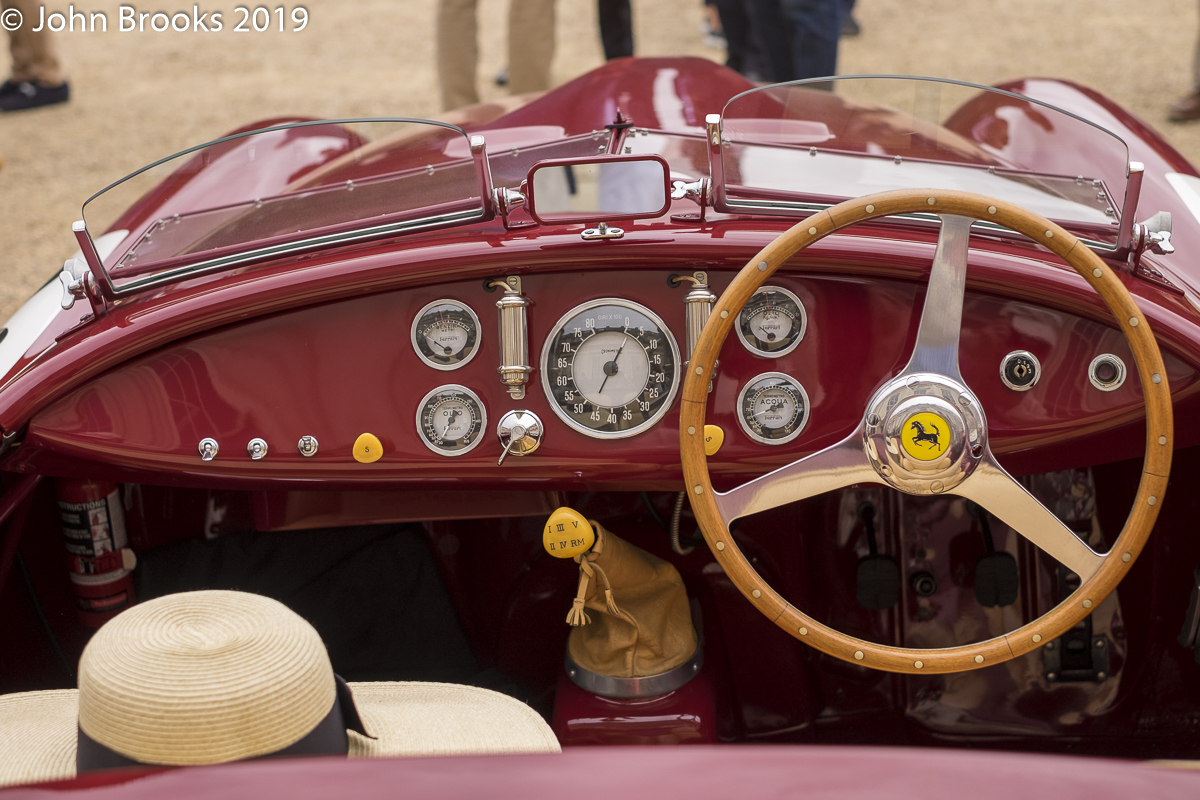
Only one car has won both the Mille Miglia and the Le Mans 24 Hours, a feat that can never be equalled. This Ferrari 166 MM is that car, chassis 0008M, and it was also at the Concours of Elegance. In April 1949 Clemente Biondetti and Ettore Salani gave Ferrari its second win on the Italian road racing classic, after Biondetti had won the previous year.
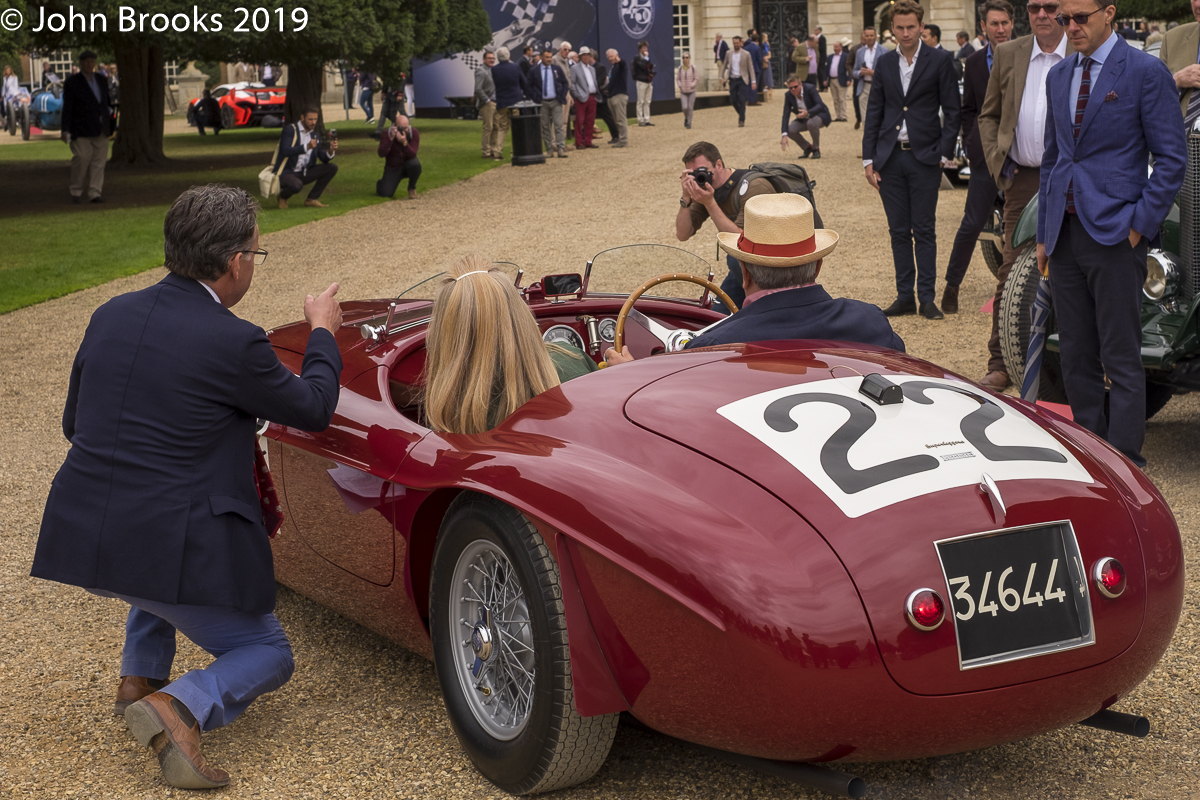
Lord Selsdon purchased the car and invited Luigi Chinetti, already a two-time winner, to drive with him the 1949 Le Mans 24 hours, the first post-war running of the event. Chinetti kept in touch with the faster Delahayes for the first quarter of the race. Then the Ferrari was delayed allowing the other 166 MM, featured above, to grab the lead. That car had an accident and one of the Delahayes struck problems, allowing the Ferrari to build a lead during the brief hours of darkness at La Sarthe.
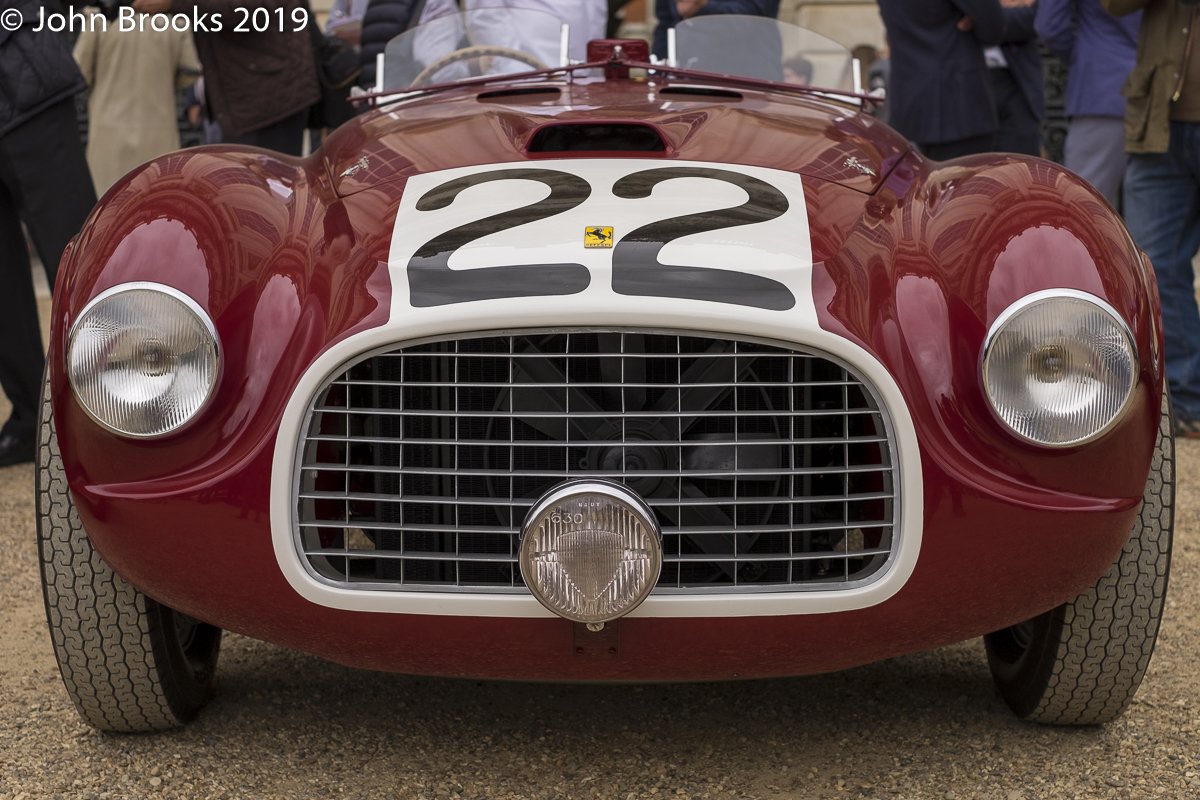
Motor Sport’s correspondent followed the race closely. “The crowd on the balcony clapped — at 4.26 a.m., mark you! — as Selsdon took over the leading Ferrari from Chinetti, who had driven the car continuously up , to this point.“
The Ferrari kept its lead over the faster Delahaye as it encountered fewer problems and spent less time in the pits. Then Delahaye retired and the Ferrari came under pressure from Louveau’s Delage. Then came the next twist in the race. “Came drama! Louveau brought the Delage in in dire trouble, but went on. Shortly afterwards Chinetti was stationary at his pit, with Louveau in again. On his first stop the plugs had been replaced, water added, and the rear wheels changed, so we knew, now, that something more serious was amiss. The work was good, calm, but half-an-hour was lost while extensive work was done on the engine, concluding with more new plugs — as with Gérard’s Delage, too much oil seemed to be getting “upstairs.” The Ferrari left first, but it, too, lost much time, work apparently being done on the front of the chassis, necessitating attempted removal of a headlamp.“
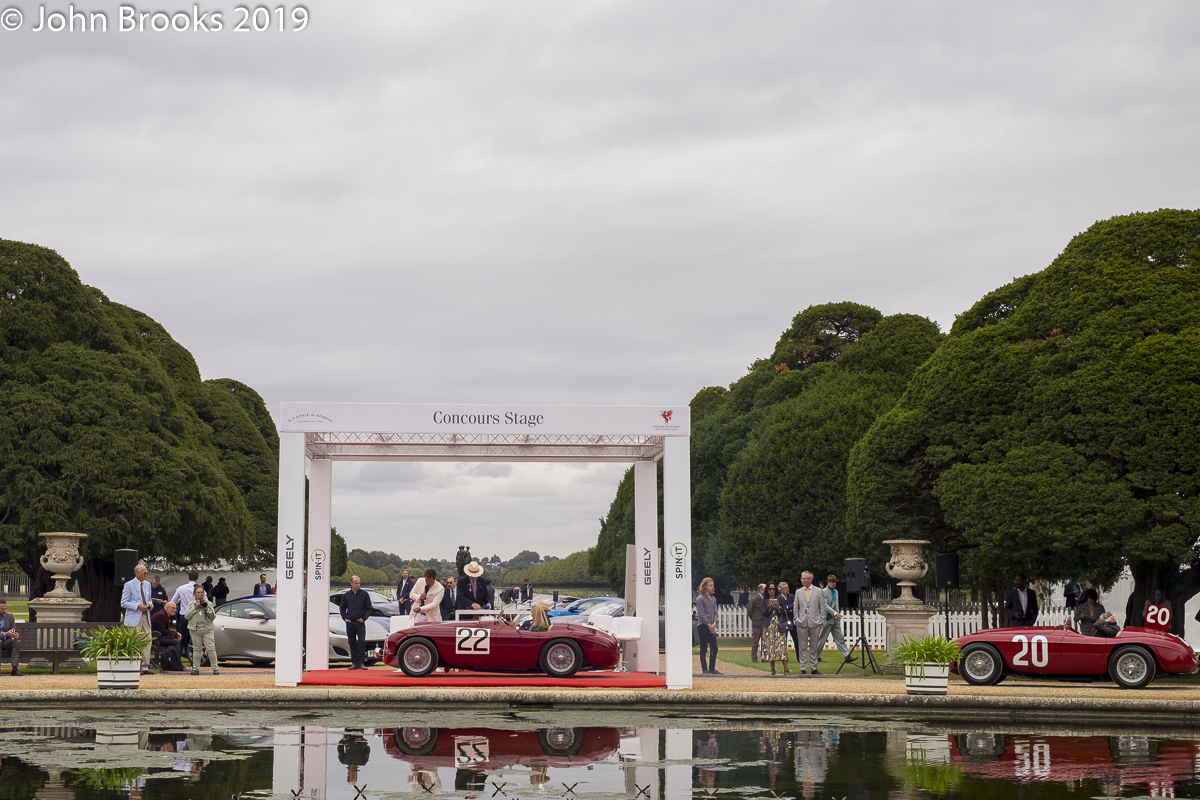
The race ground on to the finish as it usually does at Le Mans. Chinetti had to be helped from the Ferrari after spending more than 22 hours behind the wheel, a truly heroic performance. The Italian, who now lived in the United States, had scored his third victory in the great race. Selsdon and Chinetti received their trophies from Vincent Auriol, sixteenth President of the French Republic, the first time that the head of state had attended the race; it would be twenty-three years before a French President returned.
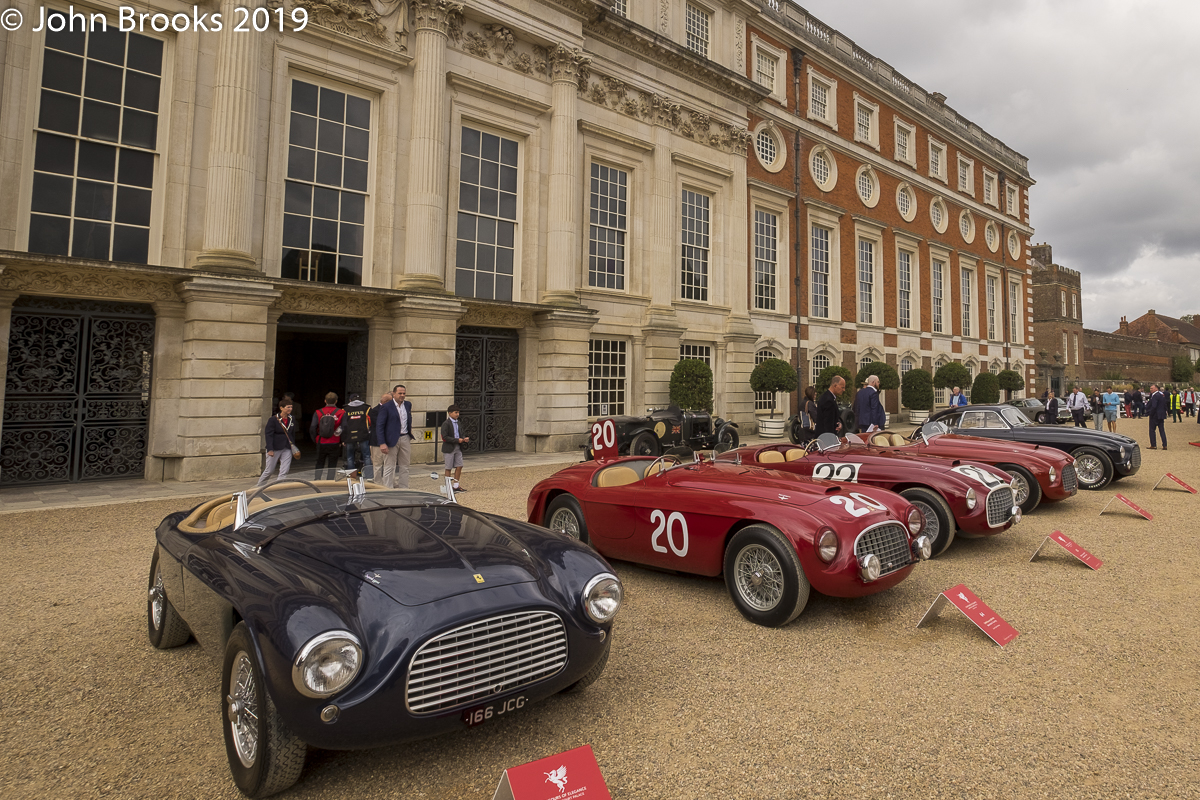
The Italians at the Concours of Elegance provided a rich and sumptuous confection for those lucky enough to attend, roll on 2020!
John Brooks, July 2020
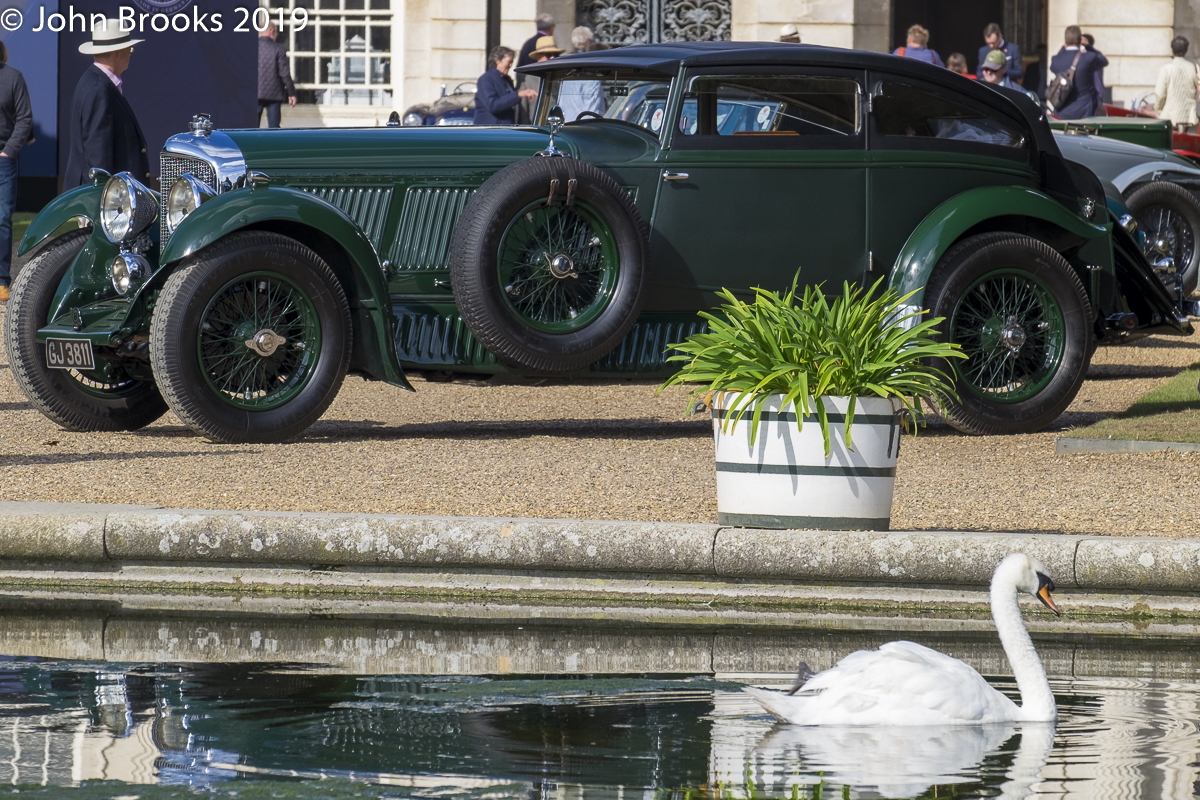
There are a few events in the course of a year that fall into the ‘must attend’ category, for example Rétromobile. The Concours of Elegance, now resident at Hampton Court Palace, is certainly also in that rarefied class, missing it would be a serious reverse.
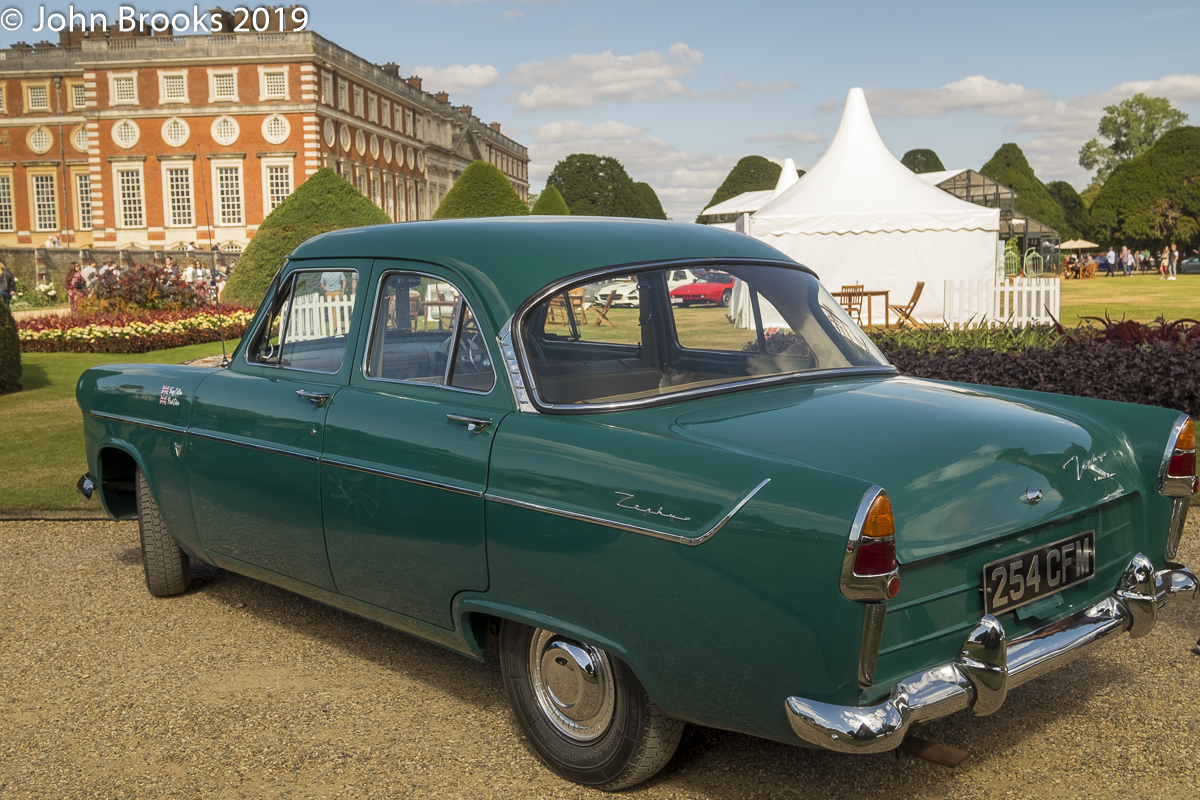
The setting is majestic and the atmosphere informal, a gentle gathering of motoring enthusiasts, lucky enough to have some great cars to consider and appreciate. A number of factors have meant that my look at the 2019 show was not completed at the time but better late than never.
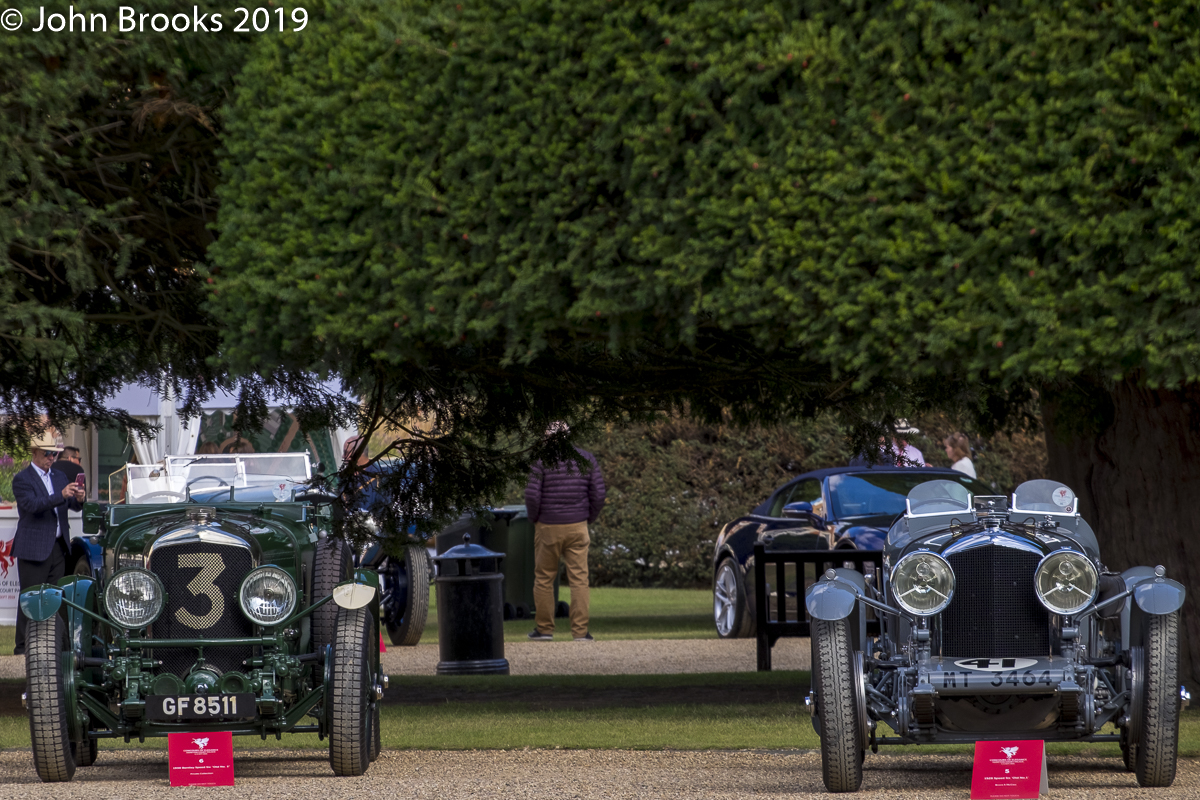
1919 saw the birth of a marque that was to become synonymous with the Le Mans 24 Hours in the race’s earliest days. Here are two legendary Bentleys; on the left, ‘Old Number Three’ and on the right ‘Old Number One’, both of these Speed Six model raced at Le Mans in 1930 with very different outcomes. ‘Old Number Three’ was disputing the lead in the early stages of the race in the hands of Sammy Davies. After twenty laps he handed over to co-driver, Clive Dunfee, who proceed to crash the car on his opening lap, forcing retirement.
‘Old Number One’ had triumphed at Le Mans in 1929 when driven by Woolf Barnato and Tim Birkin. Barnato was back in 1930, partnered this time by Glen Kidston, and he repeated his victory, his third in a row. ‘Old Number One’ had also made history being the first car to score a second win at La Sarthe, only three others have matched this feat in almost a century of competition.
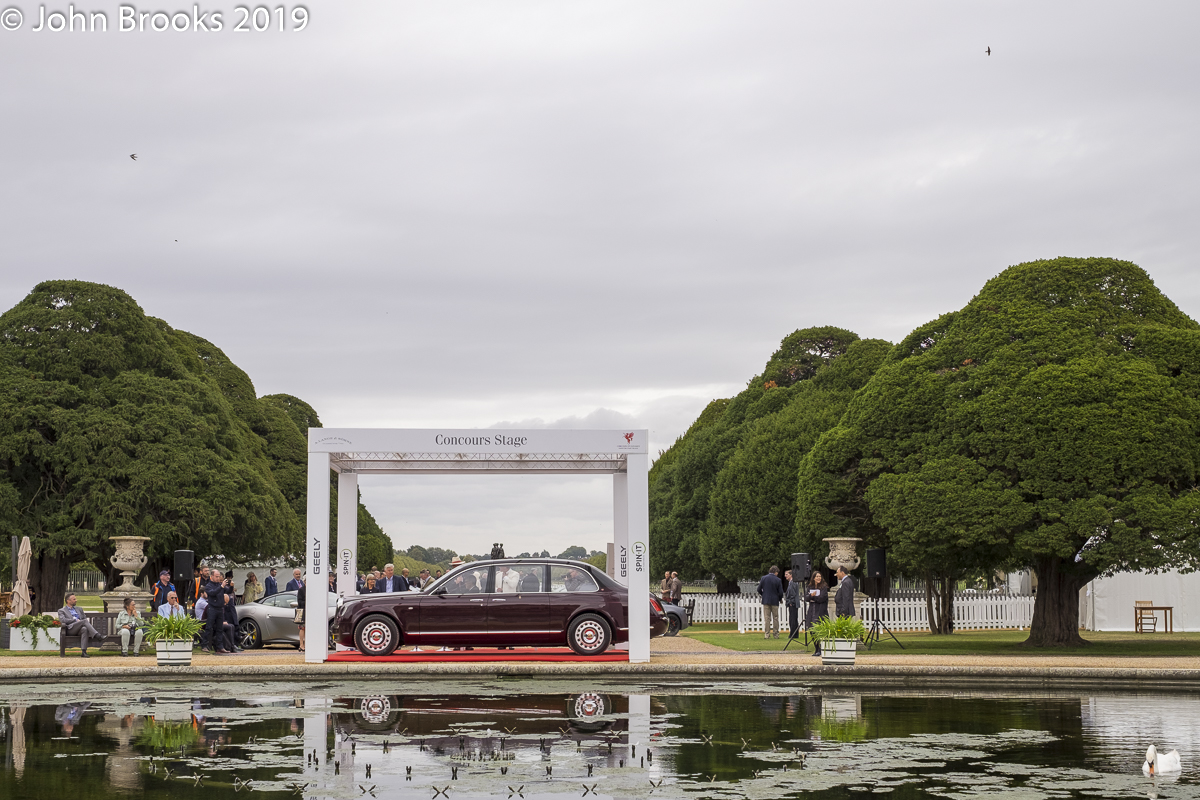
At the other end of the story is the Bentley State Limousine, first presented to Her Majesty Queen Elizabeth II on the occasion of her Golden Jubilee in 2002. Only two were built and both are in the Royal Mews.
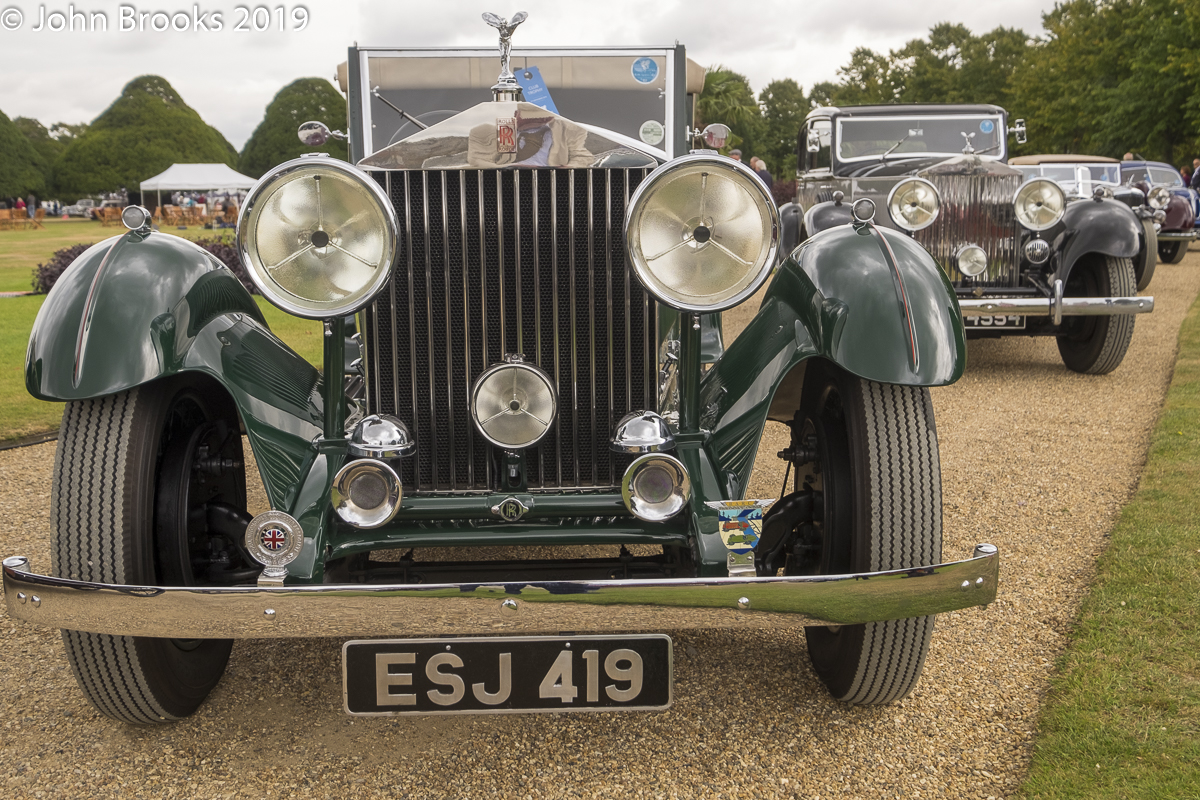
On each of the three days of the concours a different set of car clubs bring their amazing cars to add to the already rich mix. This 1931 Rolls-Royce Phantom II Continental is good example of the fine vehicles that grace the Great Fountain Garden during the show.
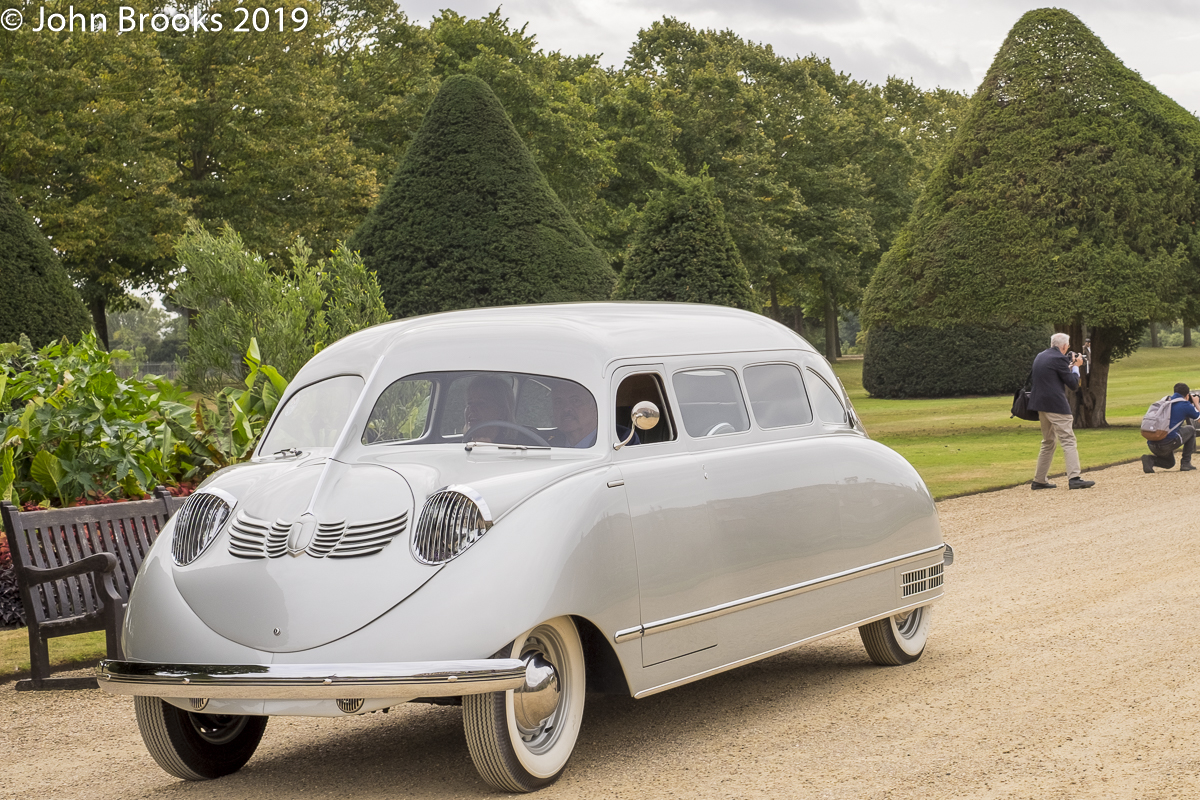
This 1936 Stout Scarab is pure Art Deco and is credited with being the world’s first production mini-van. As the Scarab carried a price tag of $5,000 only nine were constructed.
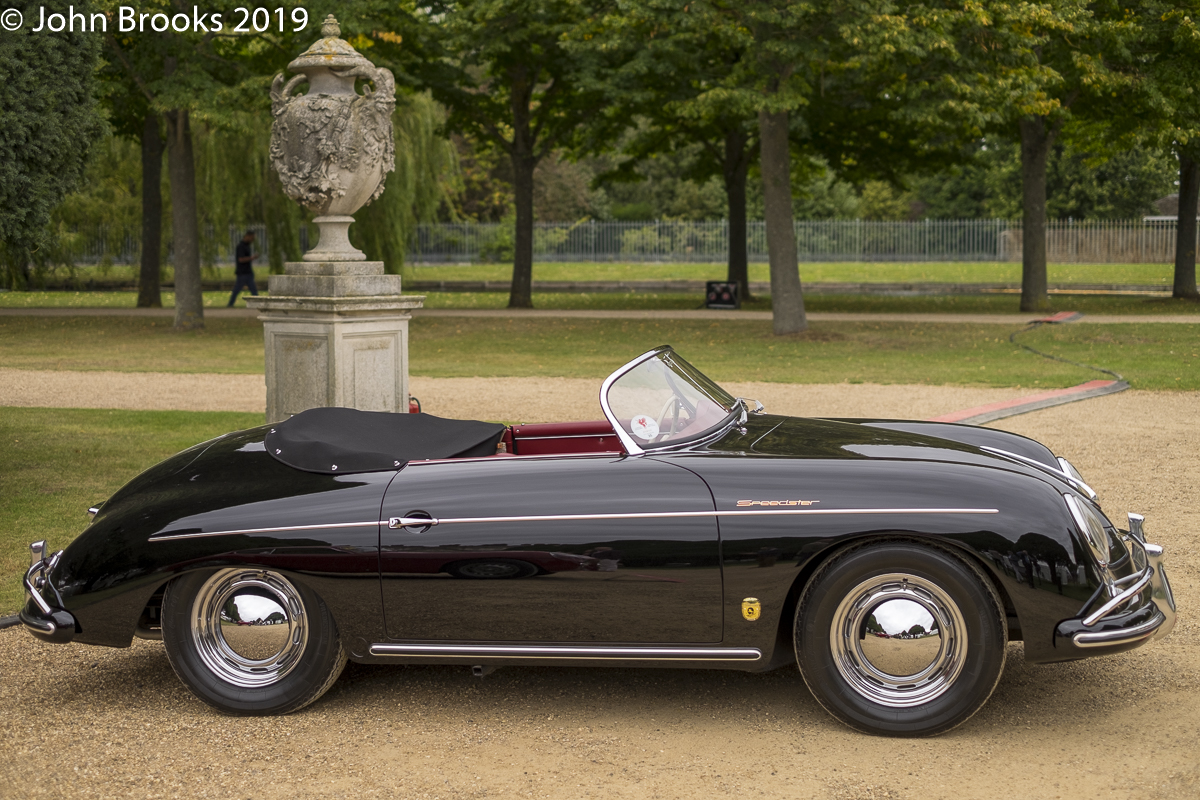
Stunning in its simplicity this 1957 Porsche 356A Speedster was a particular favourite of mine.
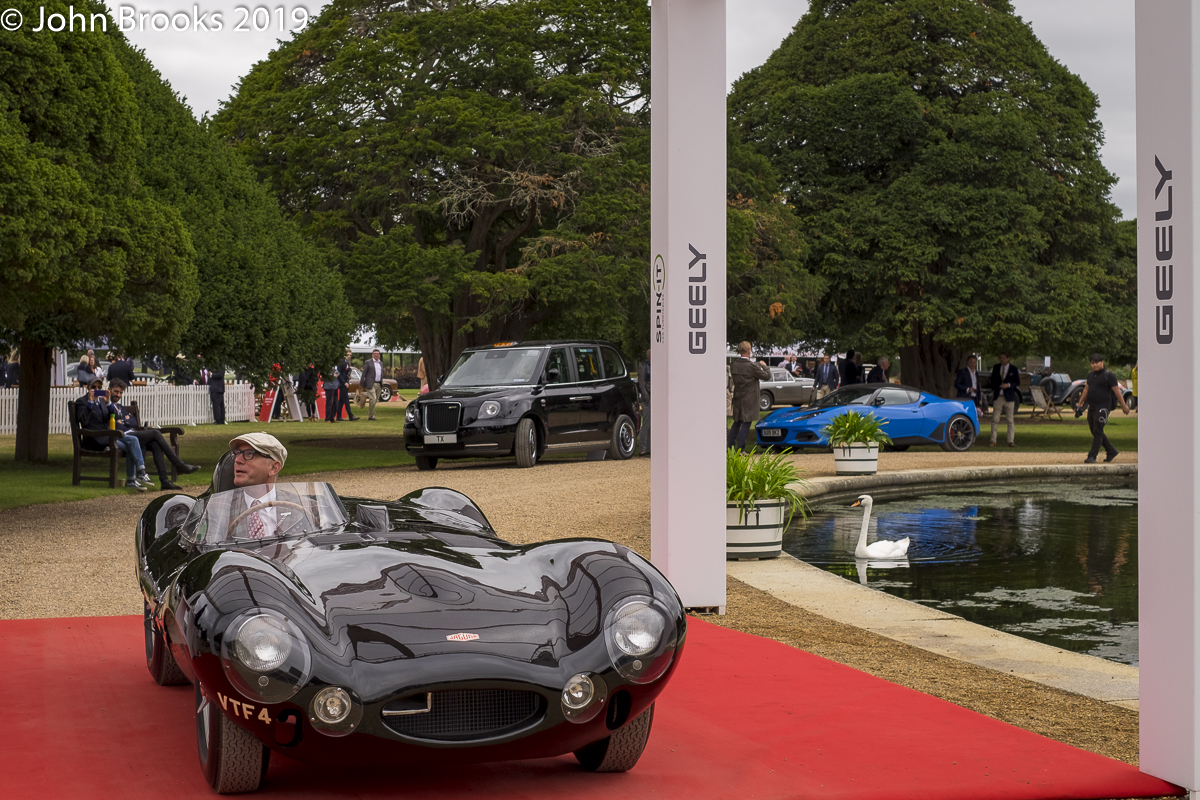
The concours is also a chance to catch up with old friends, such as Gregor Fisken, here at the wheel of a Jaguar D-Type.
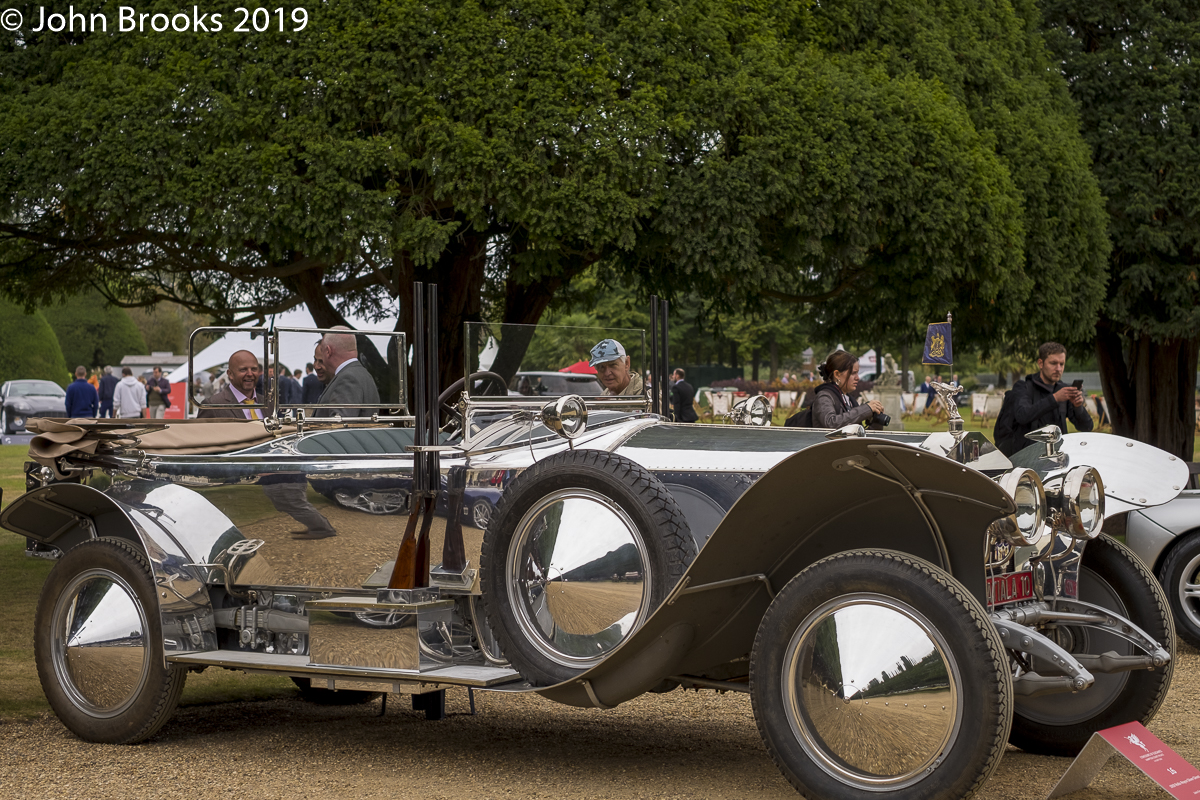
This Rolls-Royce Silver Ghost was also celebrating its centenary, being one of 25 Rolls-Royces owned by Lt.-General His Highness the Maharaja Sir Bhupindra Singh of Patiala. Complete with a rack for four shotguns it won the Best in Show award voted for by the owners of the participating cars.
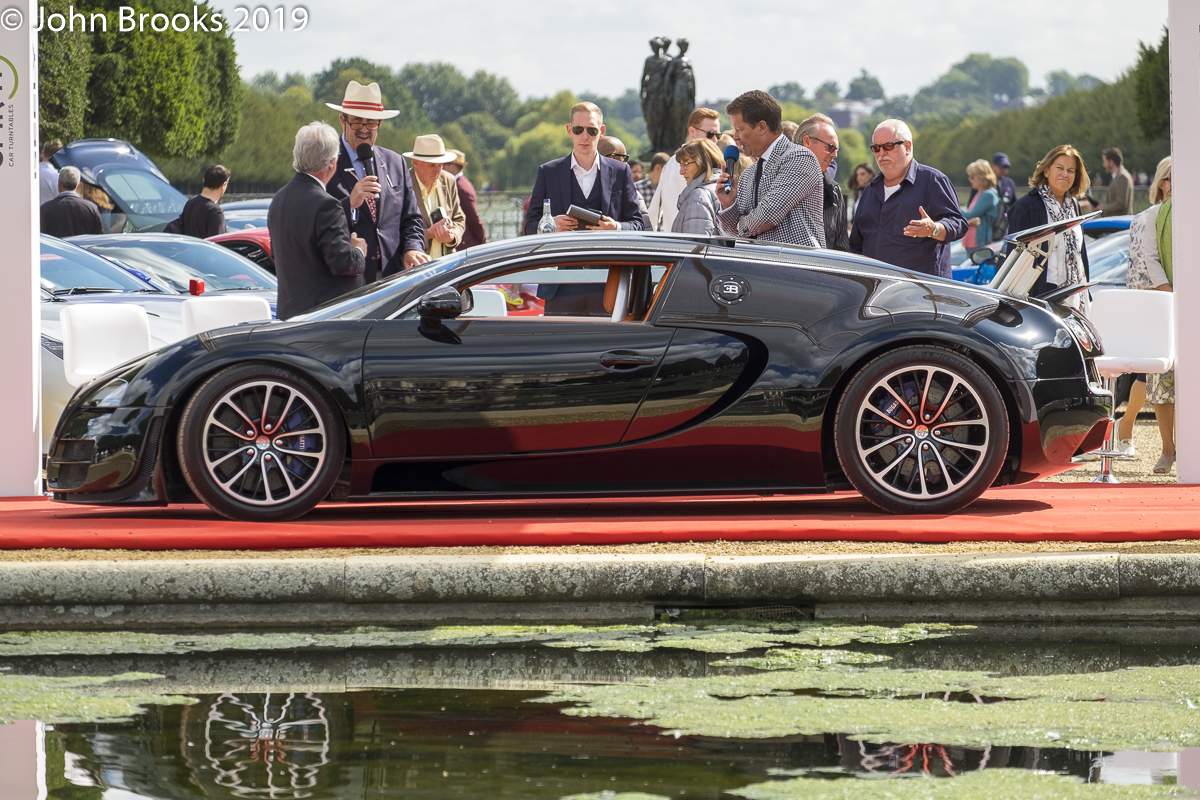
The Concours of Elegance is scheduled to happen 4-6 September, let’s hope that it does go ahead, we could all do with the lift. More from Hampton Court later.
John Brooks, July 2020
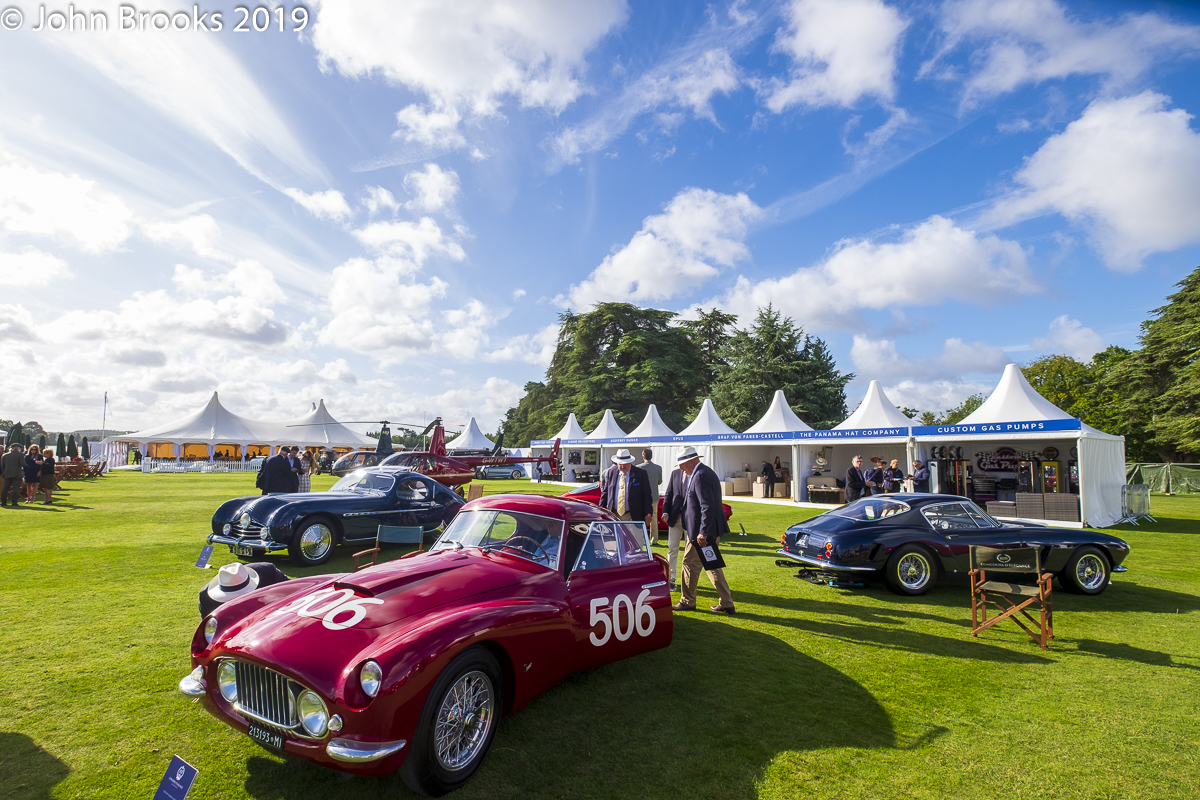
To say that we have been living in strange times would something of a gross understatement. The weirdness is set to continue as the pandemic, pending economic catastrophe, widespread civil unrest and US Presidential elections scrap with each other in the doom and gloom stakes, all screeching for our attention. Maybe the escape route from this turbulence is to retreat into better days and reflect on our general good fortune. A final look back at Salon Privé is as good a remedy as any, so here goes.
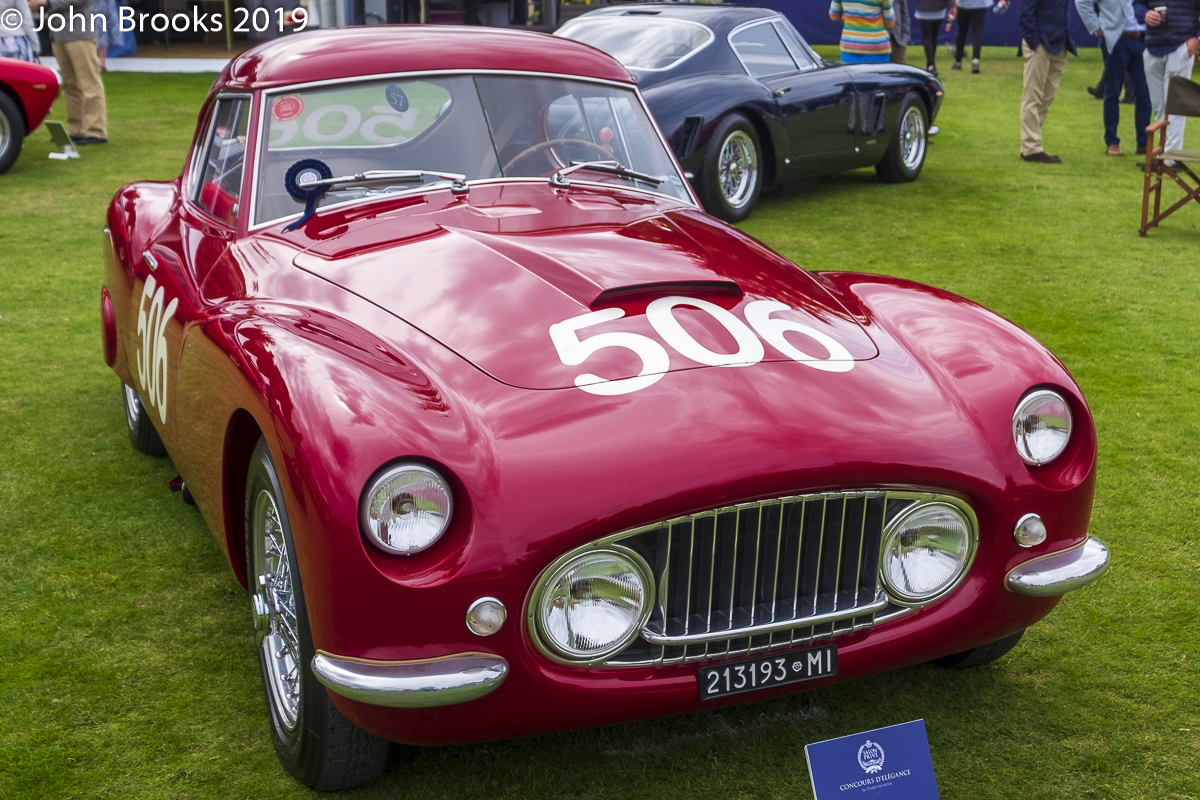
Encountering a Fiat 8V is always a welcome sensation, they are all special but this one is particularly note worthy. It was one of three lightweight alloy models built specially by the factory for the 1953 Mille Miglia. In a top class field with works entries from Alfa Romeo, Aston Martin, Ferrari, Jaguar, Lancia and Maserati, the “Otto Vu” performed well, finishing eighteenth overall and sixth in class. It ran again in the Mille Miglia the following year but was forced to retire. In ’55 it scored an excellent thirteenth overall in the Targa Florio, second in class. In 1956 the car was acquired by future Ferrari Grand Prix star, Lorenzo Bandini.
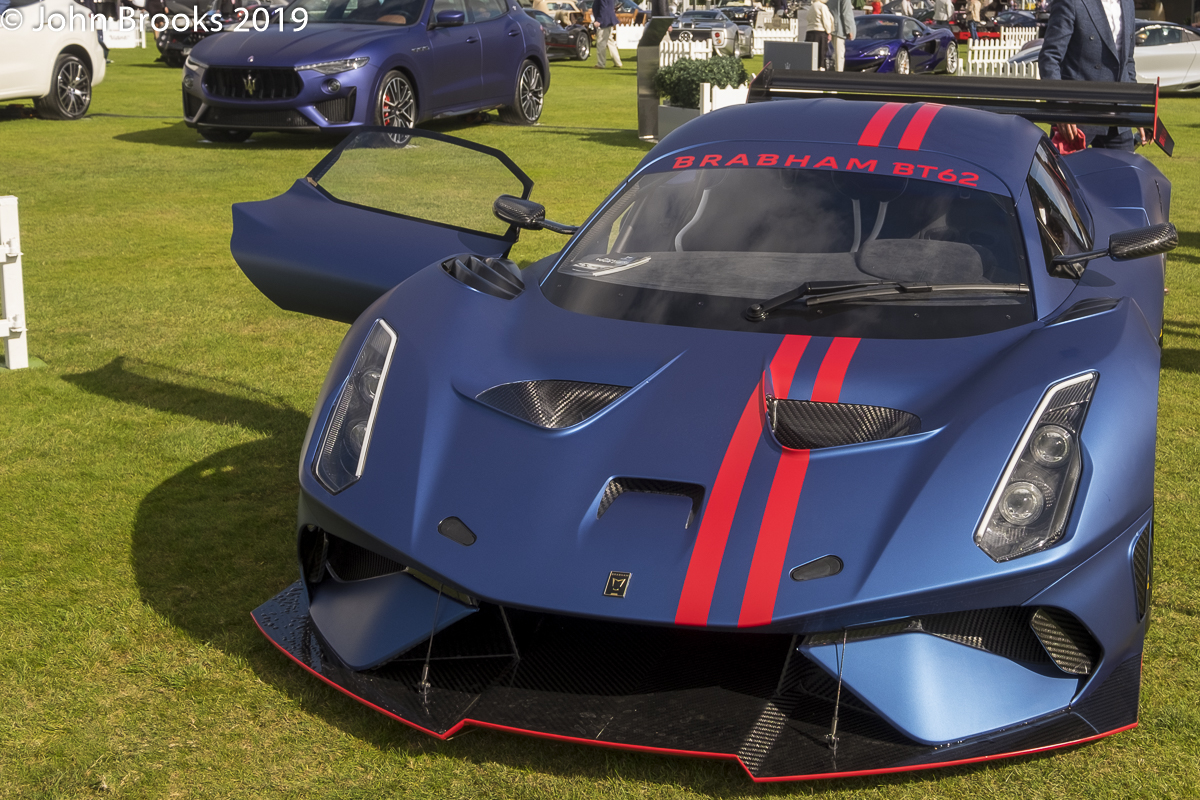
Bang up to date is the Brabham BT 62 which was to make a competition debut in the hands of David Brabham and Will Power a month or so later. DDC had Simon Hildrew on hand to bring this gallery.
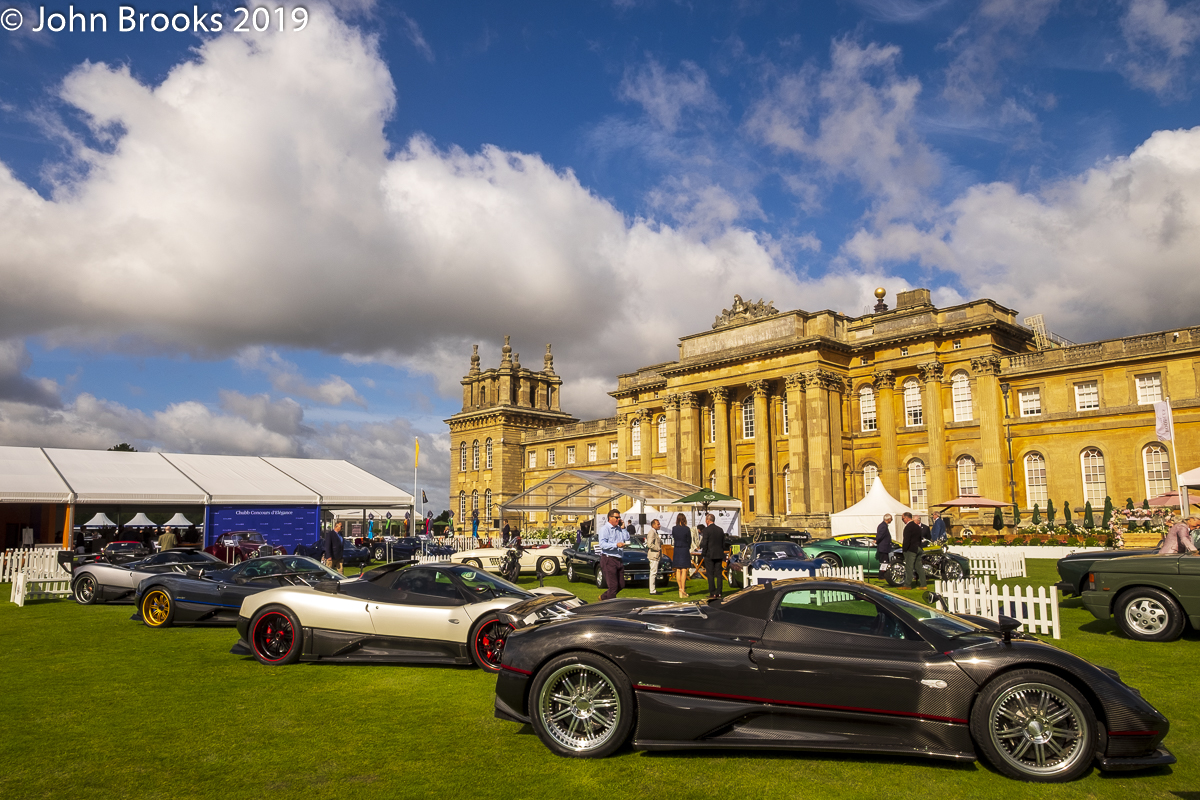
Is there a collective noun for a bunch of Paganis? A power? A performance? A pulchritude? Whatever it is there was an impressive line up of Zondas to celebrate the 20th anniversary of the supercar.
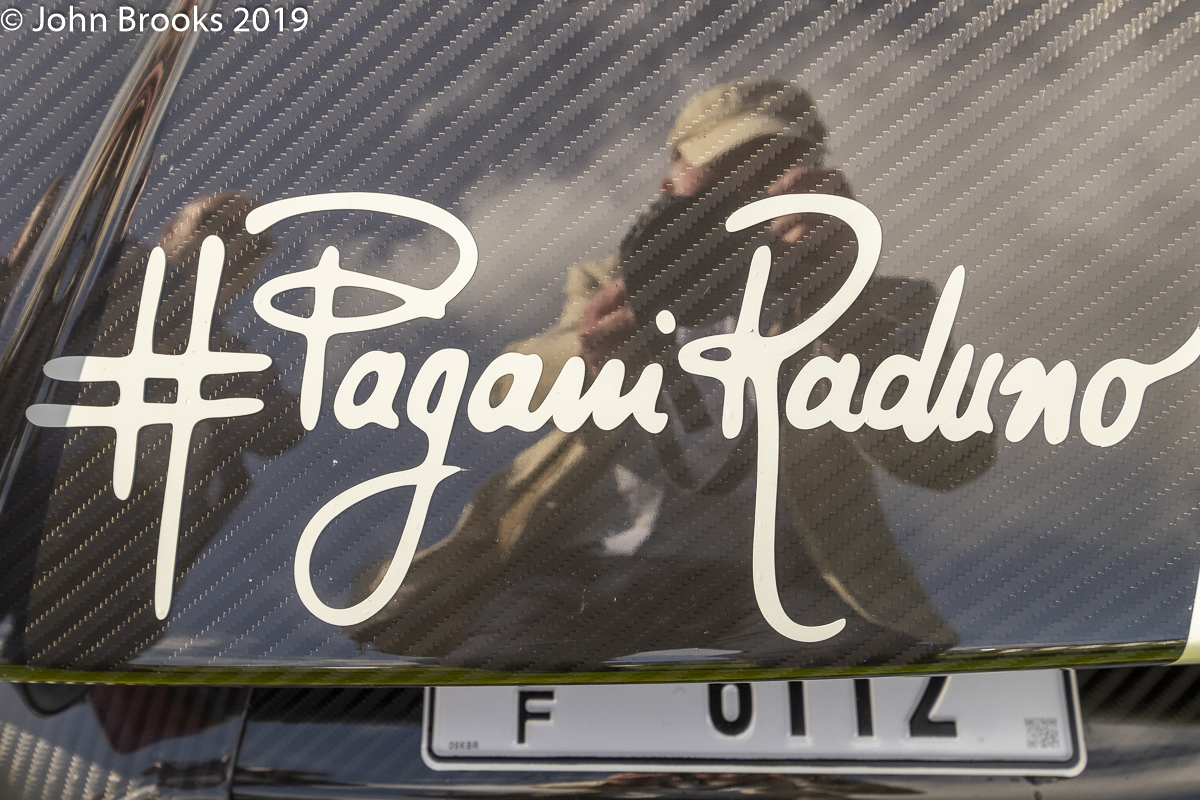
Reflected glory? Maybe that’s as good as it gets for me.
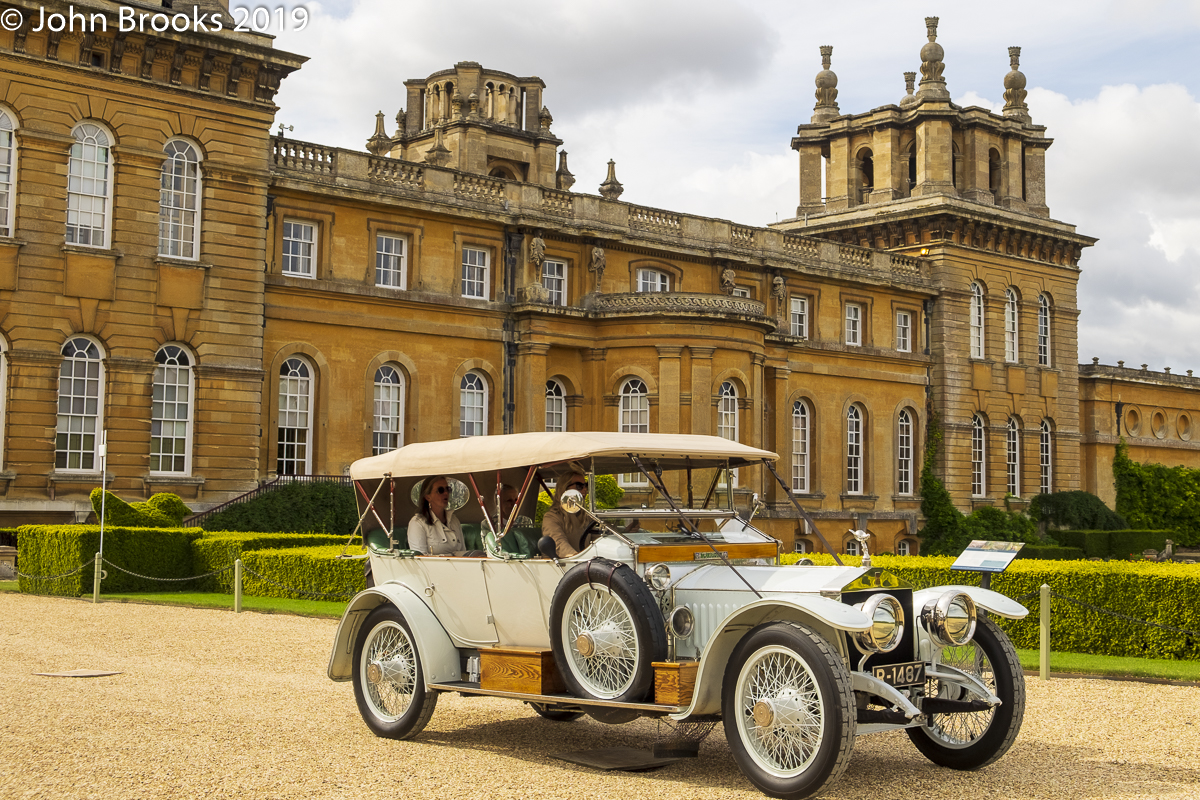
And now for something completely different…..to quote the release……This Rolls-Royce is an imposing open touring-bodied 1912 Silver Ghost, coachbuilt by Barker & Co. of London and fitted with an elaborate Taj Mahal nameplate for its Indian Raj client; the Maharaja of Nabha. This distinctive Silver Ghost has a unique place in Rolls-Royce history, it being the only surviving pre-1914 Indian trials car, with its authentic engine and chassis still carrying its original bodywork.
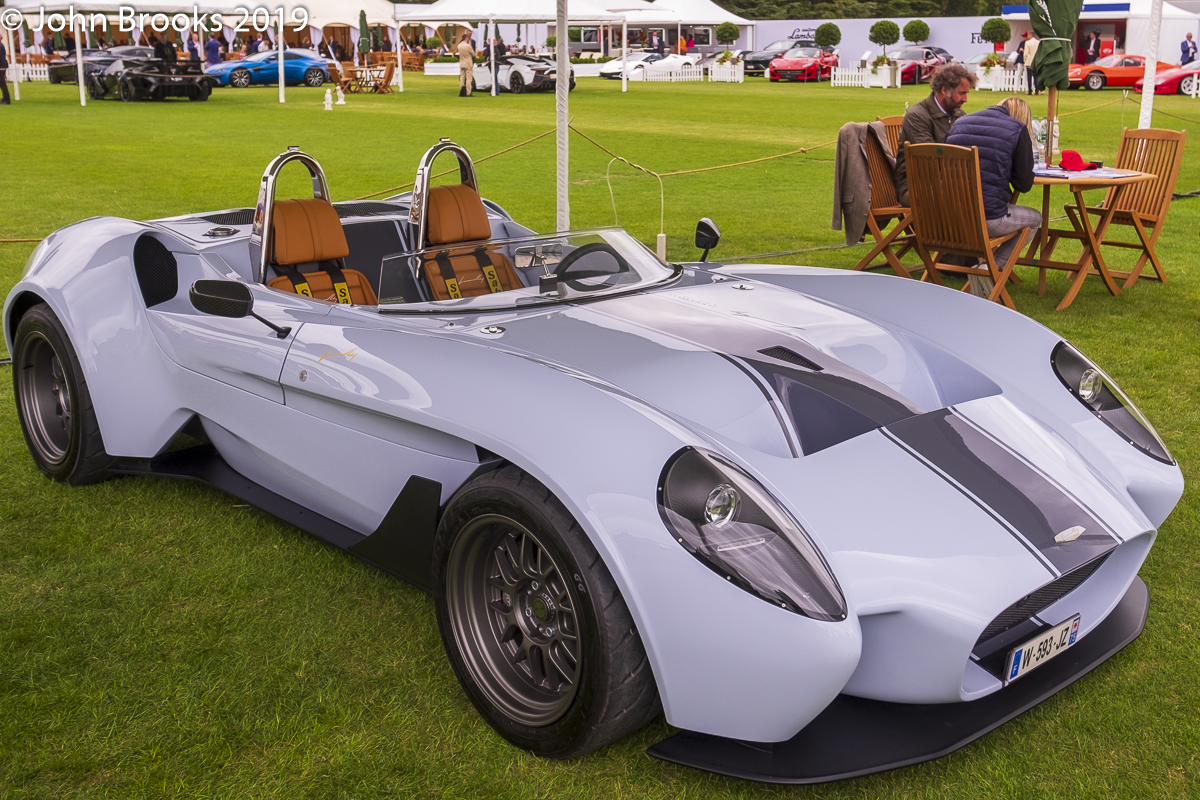
Salon Privé is not only a concours d’elegance but is a neat platform for those trying to launch something new in the motoring universe. The Jannarelly Design-1 is typical of the genre, a touch of re-inventing the wheel, literally. It is a Cobra for the second Roaring Twenties, perhaps with a little less venom, but in the right hands would surely be grin inducing.
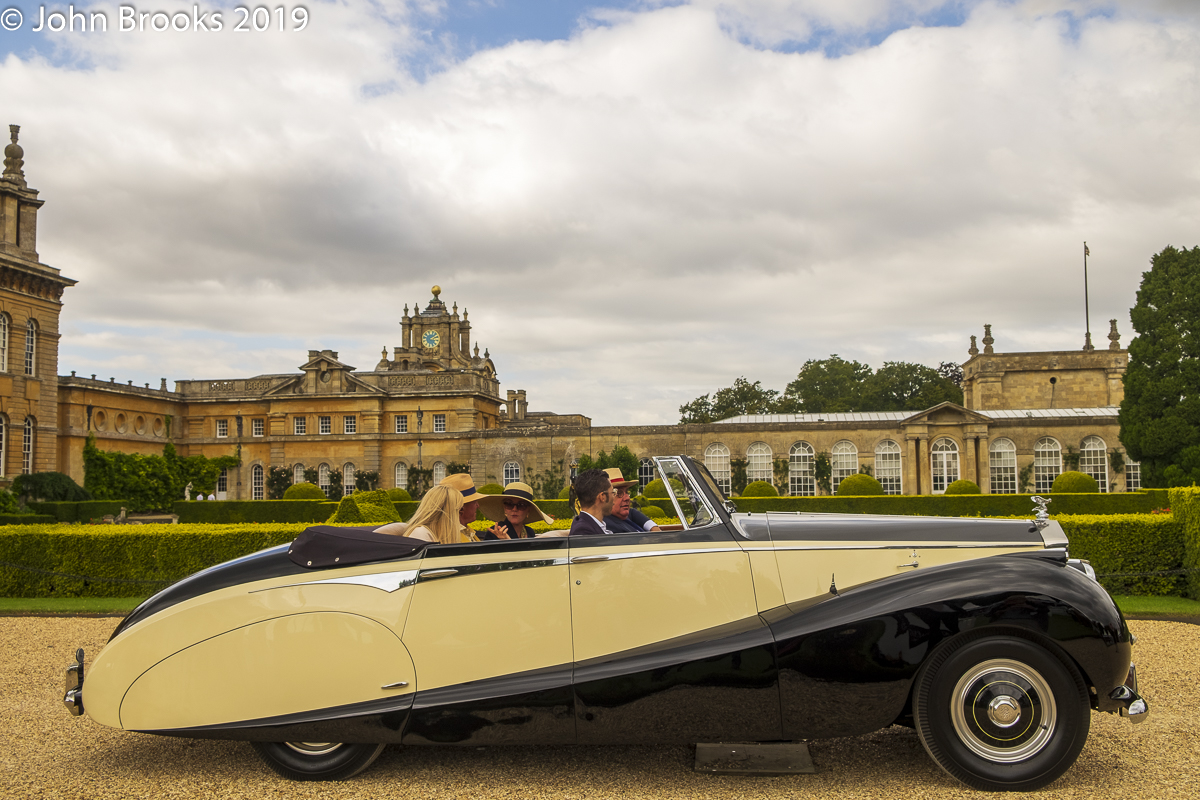
This 1953 Rolls-Royce Silver Wraith with coachwork by Hooper & Co. was used at the wedding of Prince Rainier of Monaco & Grace Kelly in 1956 and still is the epitome of ’50s style.
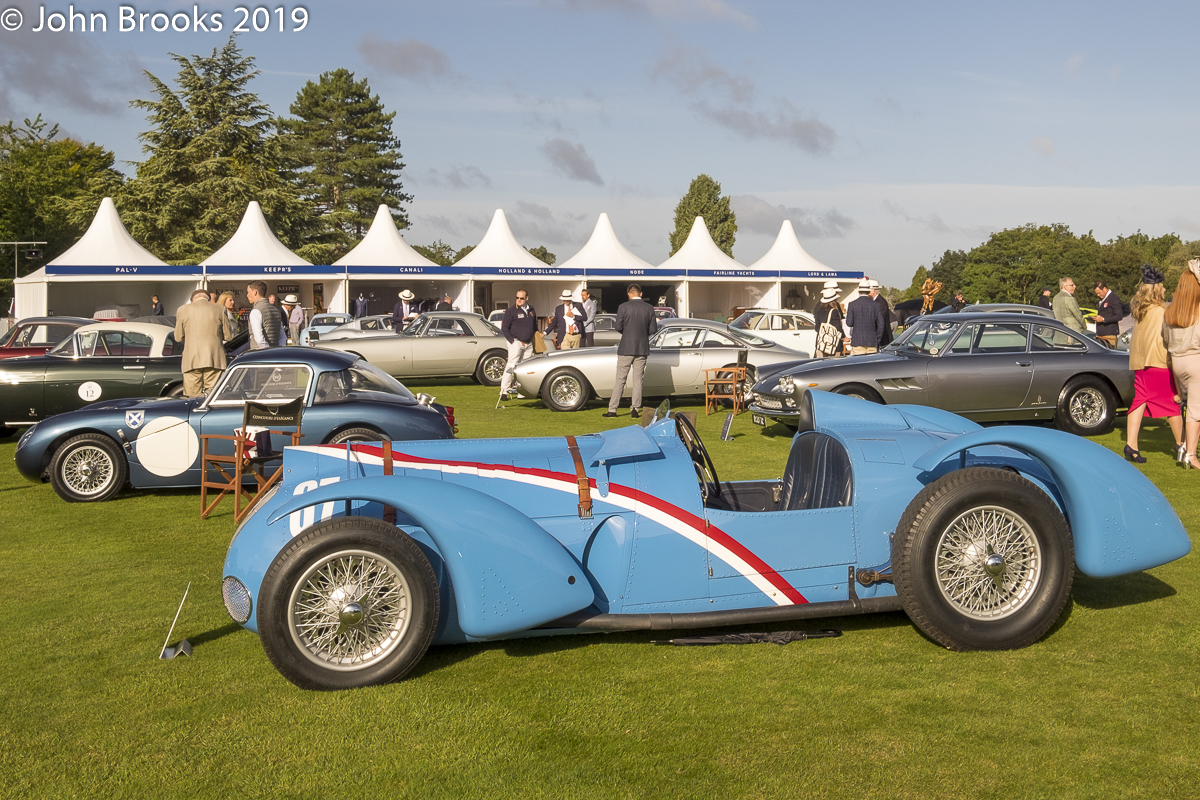
This Delahaye Type 145 is nicknamed ‘Million-Franc’. The Prix du Million being a one million franc prize offered in 1937 by the French Government to encourage French motor car manufacturers to take on and beat the Germans, who were then dominating motor racing. On August 27th 1937, René Dreyfus drove this Type 145 for 200 kilometers in a record one hour, twenty-one minutes, 49 1/2 seconds, which amounted an average speed of 91.3 miles per hour on the banked L’autodrome de Linas-Montlhéry. This was enough to grab the prize, and the headlines. The following year Dreyfuss scored a memorable victory in the Delahaye at the Pau Grand Prix, besting the Mercedes-Benz of Caracciola/Lang; it was a most popular win with the patriotic French crowd.
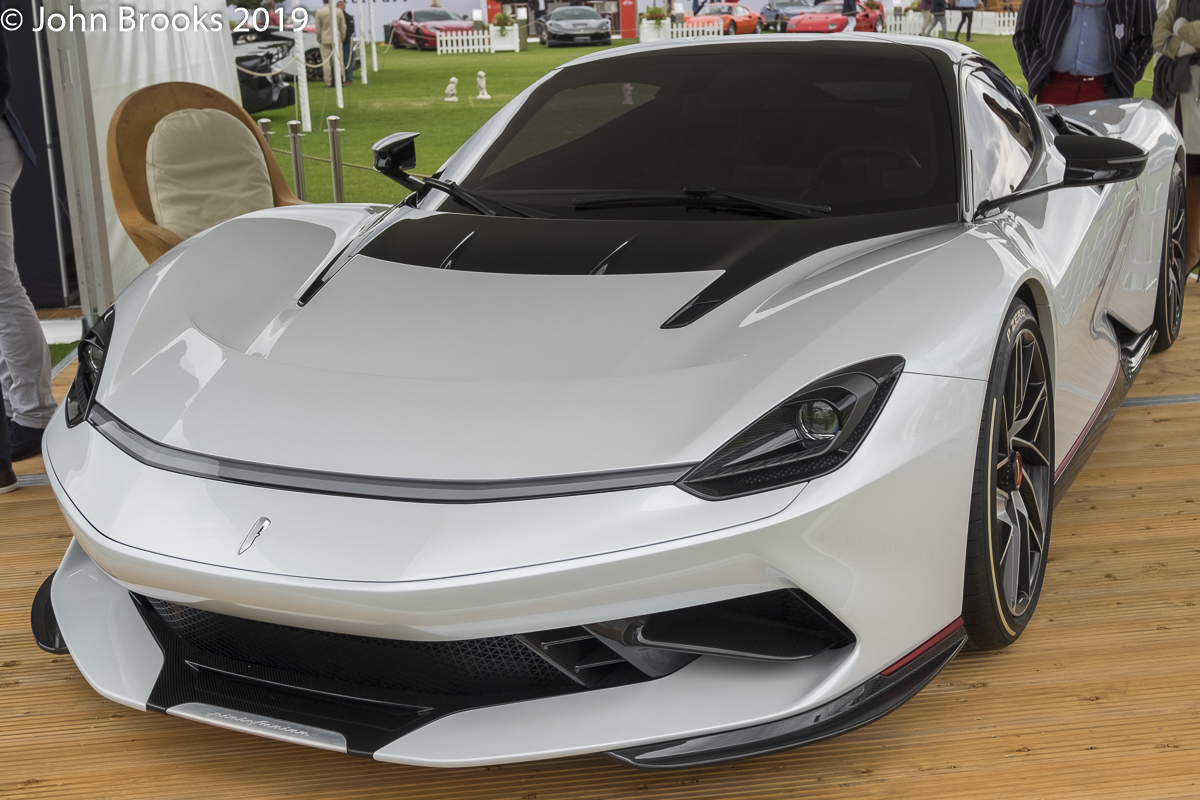
1900bhp and €2 million, the numbers are all extreme, perhaps the Pininfarina Battista will prosper in these straightened times but, somehow I doubt it. Four electric motors, one at each corner propel the carbon fibre hyper car to 60 mph in around two seconds………..not for me I think……………
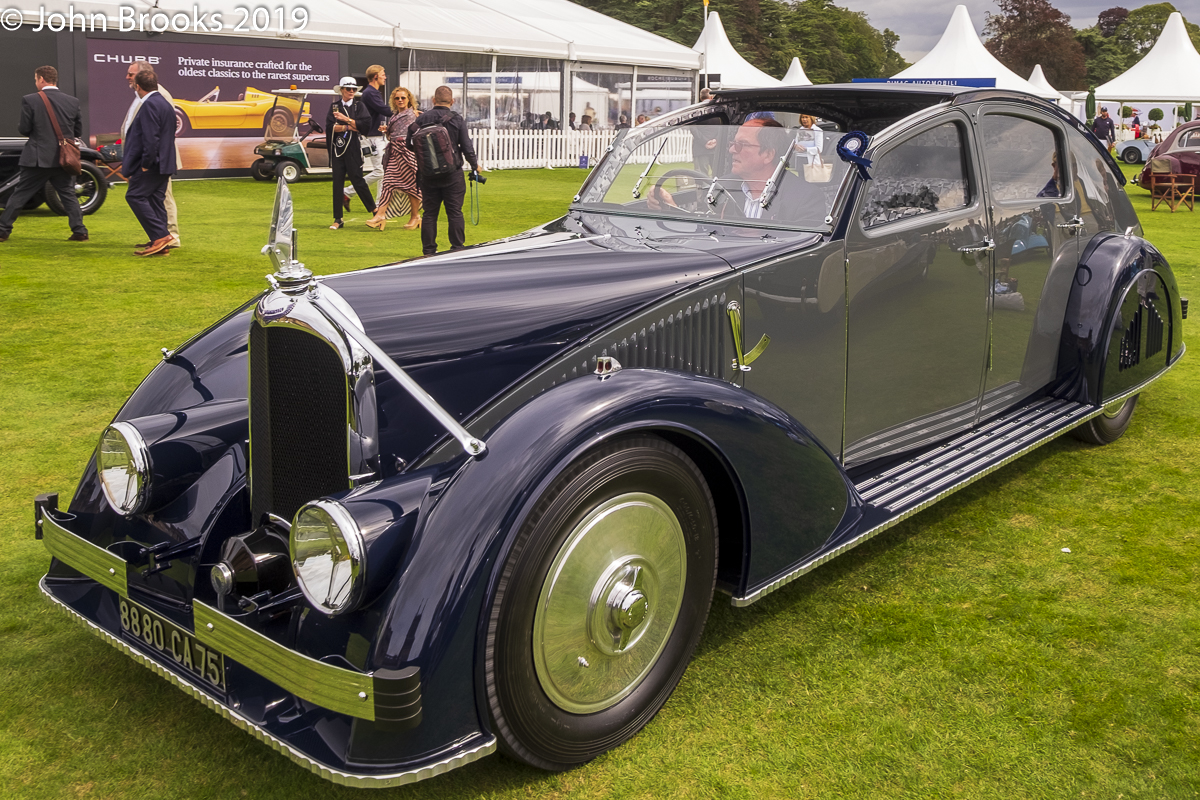
Back to the concours stage and this 1935 Avions Voisin C-25 Aérodyne, a glorious fusion of aerodynamics, Art Deco and cutting edge engineering. The price tag of 88,000 French Francs during a time of financial crisis ensured that the striking car was not a commercial success and only six were built.
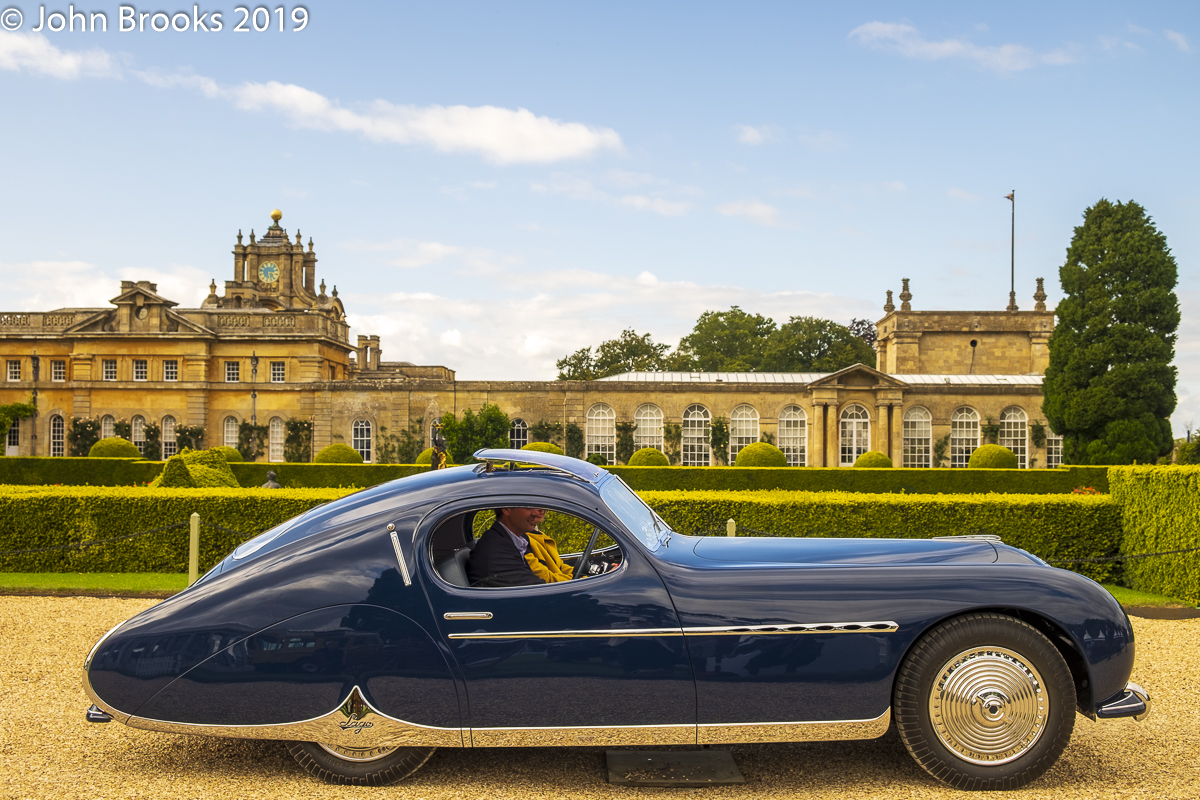
The sumptuous profile of the 1948 Talbot-Lago T26 GS Fastback Coupé by Figoni is outstanding, no wonder it took the Best in Show against some very stiff opposition. First owned by a Mr Fayolle, the ‘Zipper King’ of France, the car found its way to Los Angeles and then was stored in obscurity for 47 years. Subsequently it has been lovingly restored to its original configuration as it left the coachbuilders, it is art on wheels………..
The 2020 Salon Privé is scheduled to happen at Blenheim Palace on 23-26 September, fingers are to be kept firmly crossed.
John Brooks, July 2020
Concours come in all shapes and sizes, at the top end there is one sure fire method of judging the event, what are the Ferraris like? Some may disagree with my approach but I find the higher the level of Maranello’s finest, generally the better the show. So how did Salon Privé rate last September?
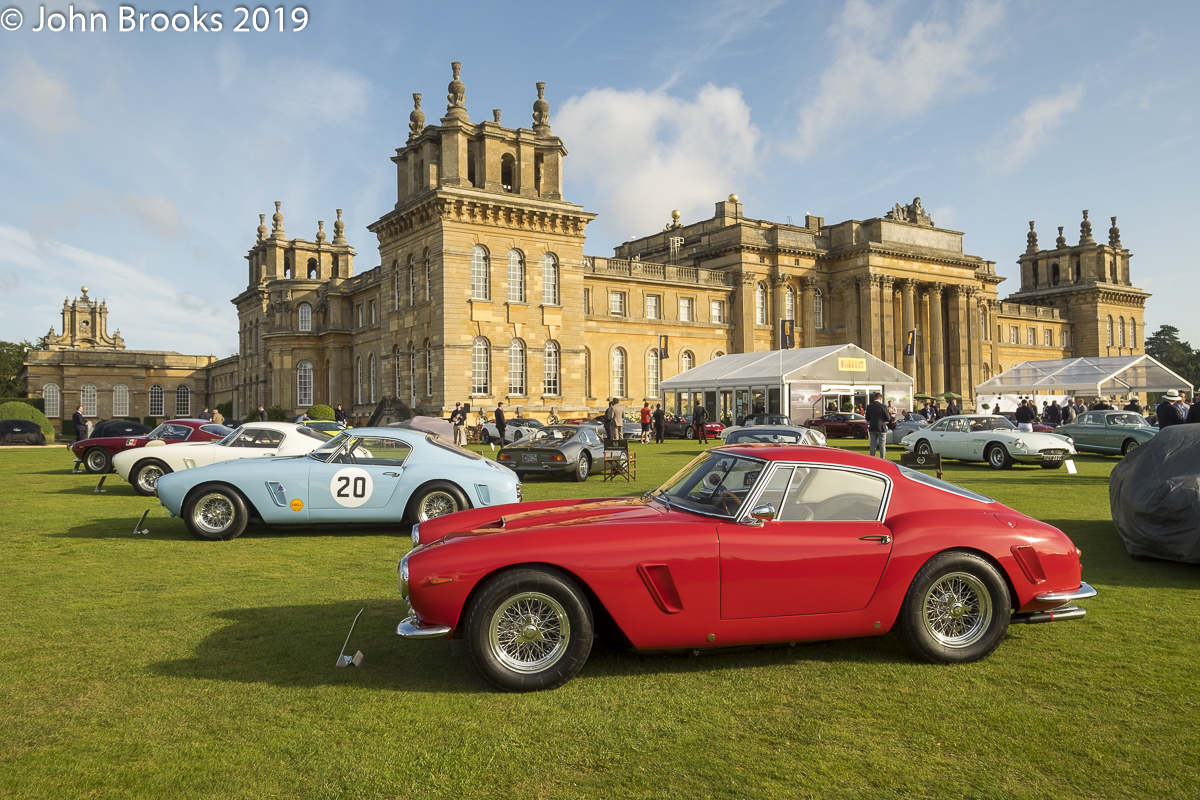
The answer is simple, first rate. I had missed the event for a couple of years, but I was truly impressed with the organisers’ achievement in maintaining such a high standard of exhibits on the lawns.
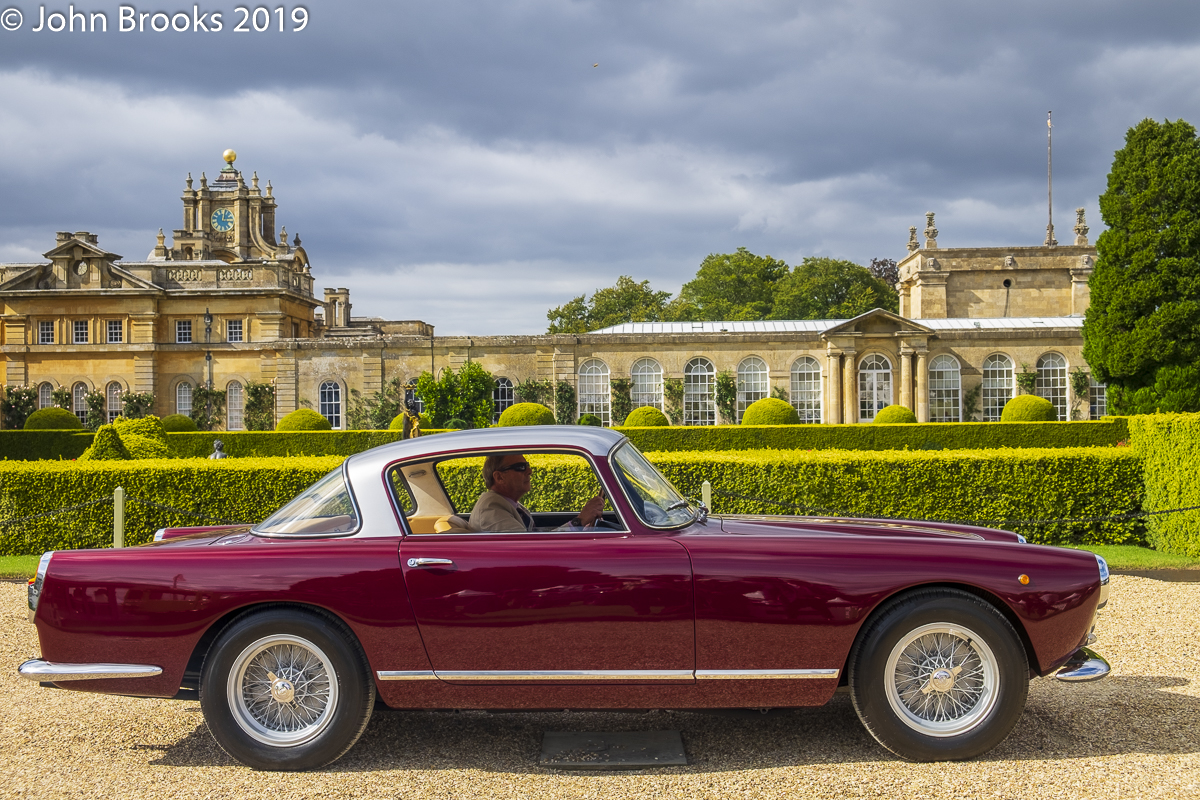
A good example of the rarefied level is this exquisite 250 GT Ellena dating back to ’58. Originally a Pinin Farina design, Mario-Felice Boano took over building the cars while Farina had a new factory constructed. He subsequently headed off to Fiat, and handed responsibility for upgrading the 250 GT to his son-in-law, Ezio Ellena. Some of the Corrozzeria Ellena examples had a raised roof line, all had bigger brakes and a steering system from ZF. This elegant coupé is a ‘matching numbers’ example as it was reunited with the original engine in 2013.
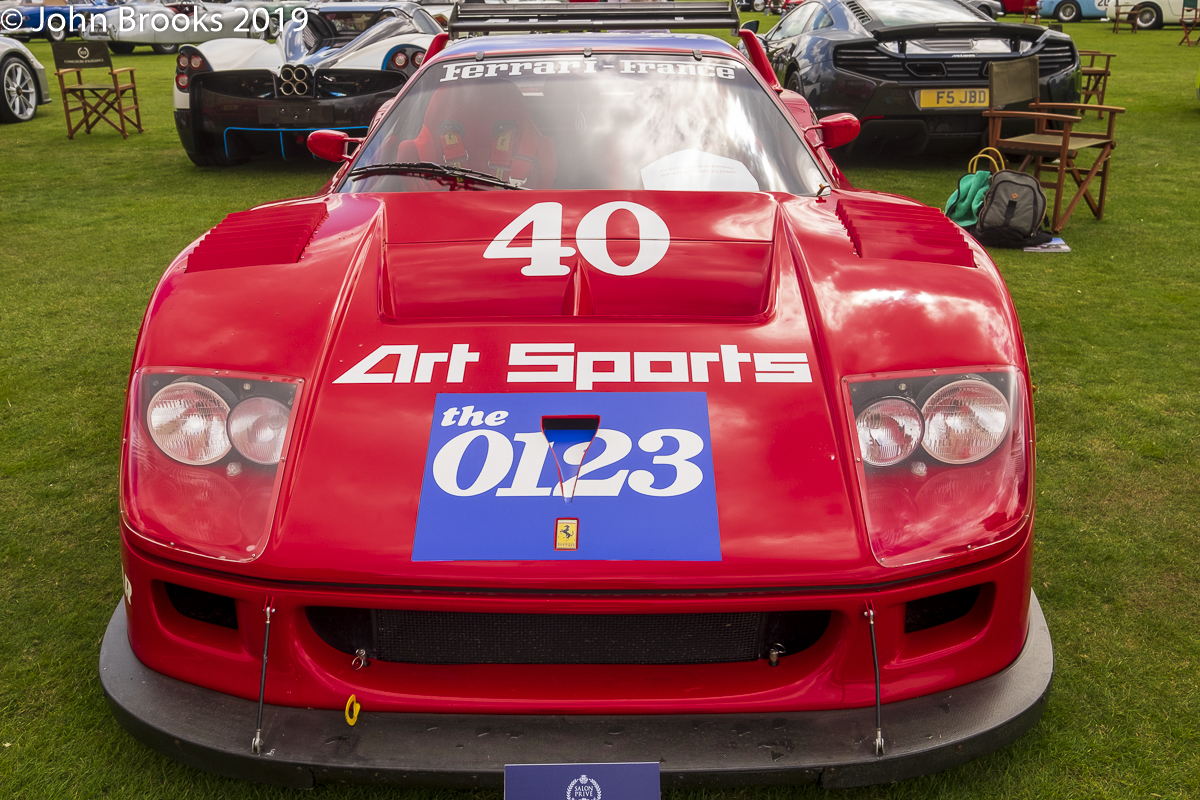
A complete contrast is this F40 LM, developed from the road car by Michelotto with Maranello’s blessing. The car was raced in North America by an all-star line up of drivers for its five IMSA GT events. Ecurie Pozzi employed no less a bunch of aces than Jean-Louis Schlesser, Jean-Pierre Jabouille, Olivier Grouillard, Jacques Lafitte, Hurley Haywood and Michel Ferté in its ’90 campaign. A few years down the line and the F40 LM was developed into the fearsome GTE versions that spiced up the BPR and provided the F1 GTR with proper opposition.
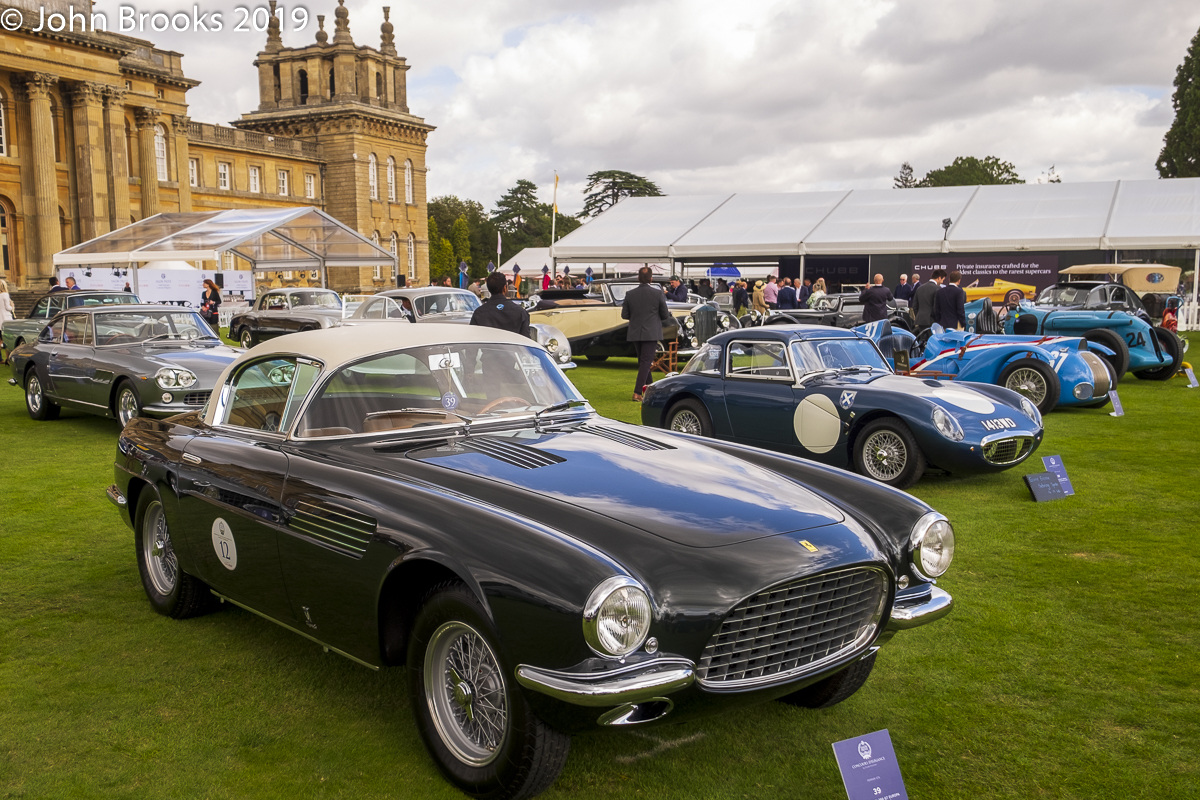
The palatial backdrop for this 250 GT Europa Vignale Coupé is most appropriate. Originally ordered by the Belgian Princess Liliane de Rethy, second wife of King Leopold III, a passionate Ferrari enthusiast. It was the final Ferrari chassis to be given a body by Vignale and is very distinct from the Pinin Farina examples of this model. There is an unusual inclined opening in the dash board, something of a mystery. However, by a stroke of luck a bottle of Veuve Clicquot can be accommodated, though how it is to be kept chilled is not clear.
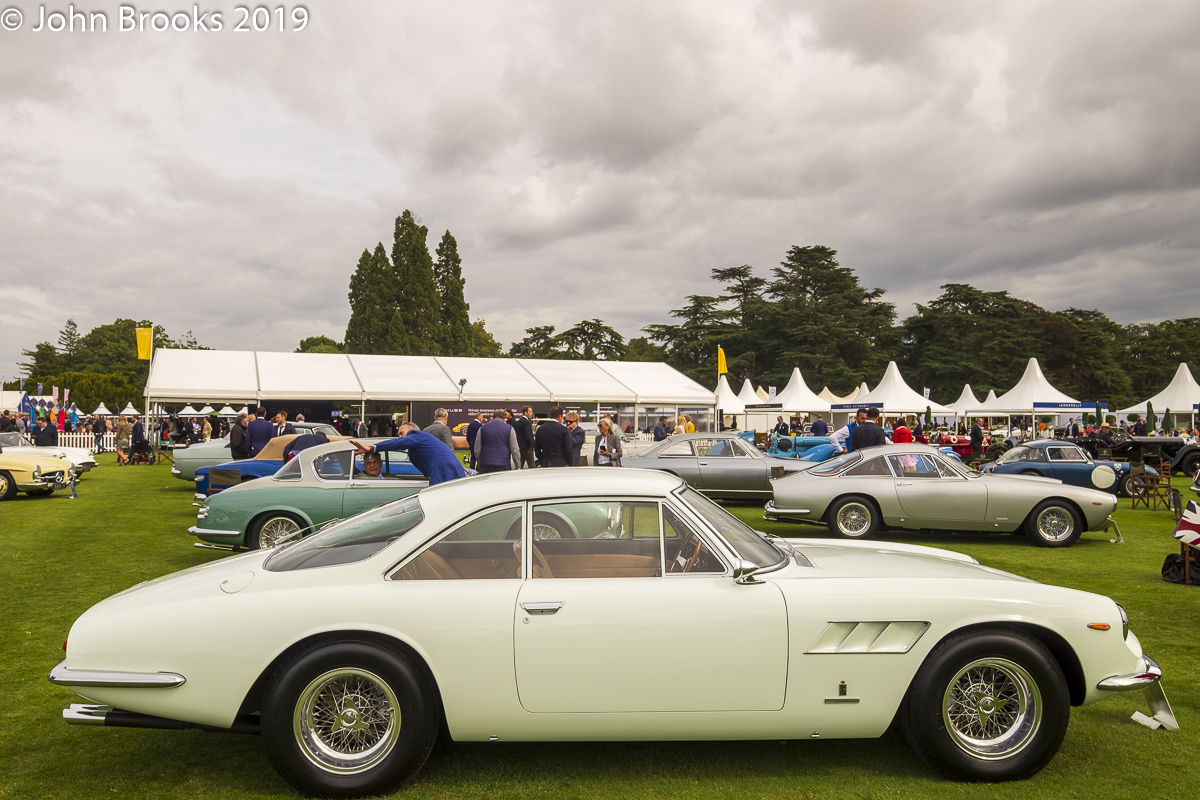
A rare gem from the mid-60s is this 500 Superfast, one of just 36 examples built. The list of owners of these fabulous machines could have come straight from the gossip columns of William Hickey or Nigel Dempster: the Aga Khan, Peter Sellers, Gunther Sachs and the Shah of Persia to name but a few; all very important figures at the time, now more Ozymandias-like in our enlightened Twitter age………….
The 500 Superfast has been described as ‘the ultimate in front-engined Ferraris for those who like the Rolls-Royce touch with their performance cars.’, they were the last of their breed.
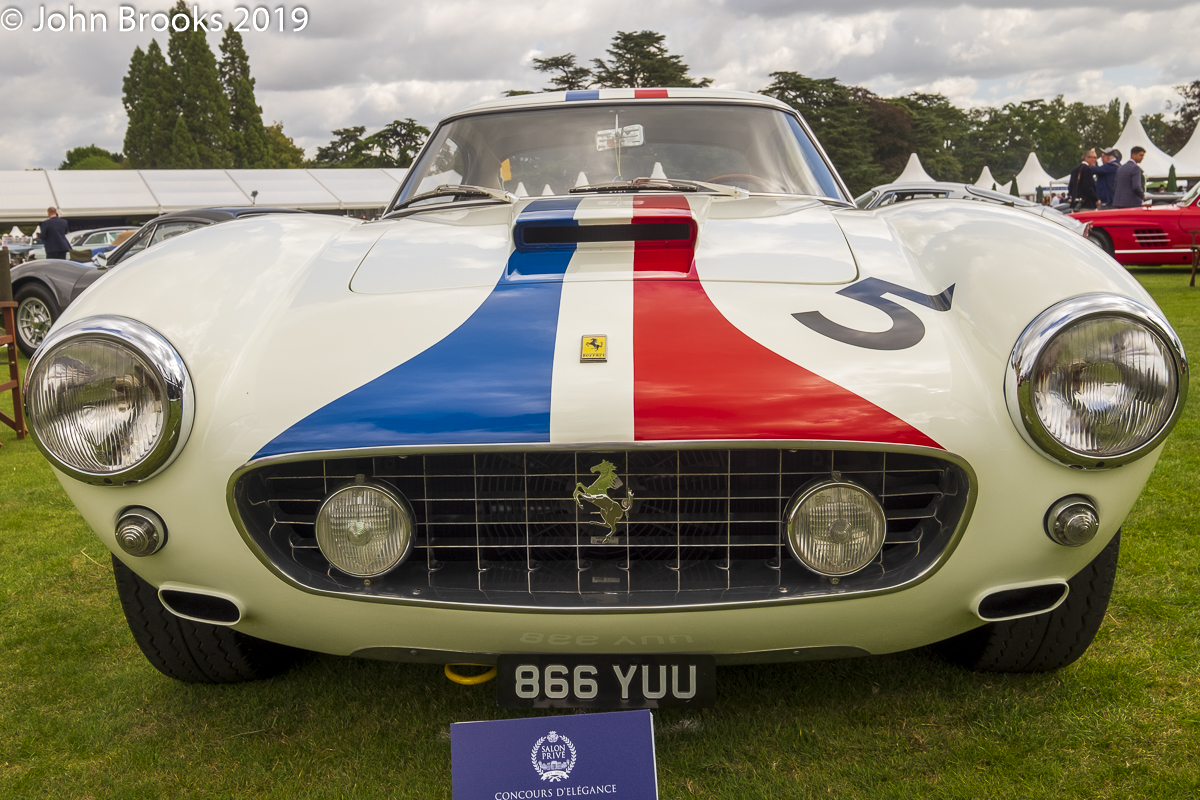
I am an unashamed fan of the 250 GT SWB Berlinetta Competizione, with its elegant proportions and fantastic record in competition. This example finished third overall on its debut in the ’60 Paris 1000kms held at Montlhéry. Driven by Jo Schlesser and André Simon in Paris, it went on to win the GT class in that year’s Tour de Corse with Mrs Schlesser accompanying her husband.
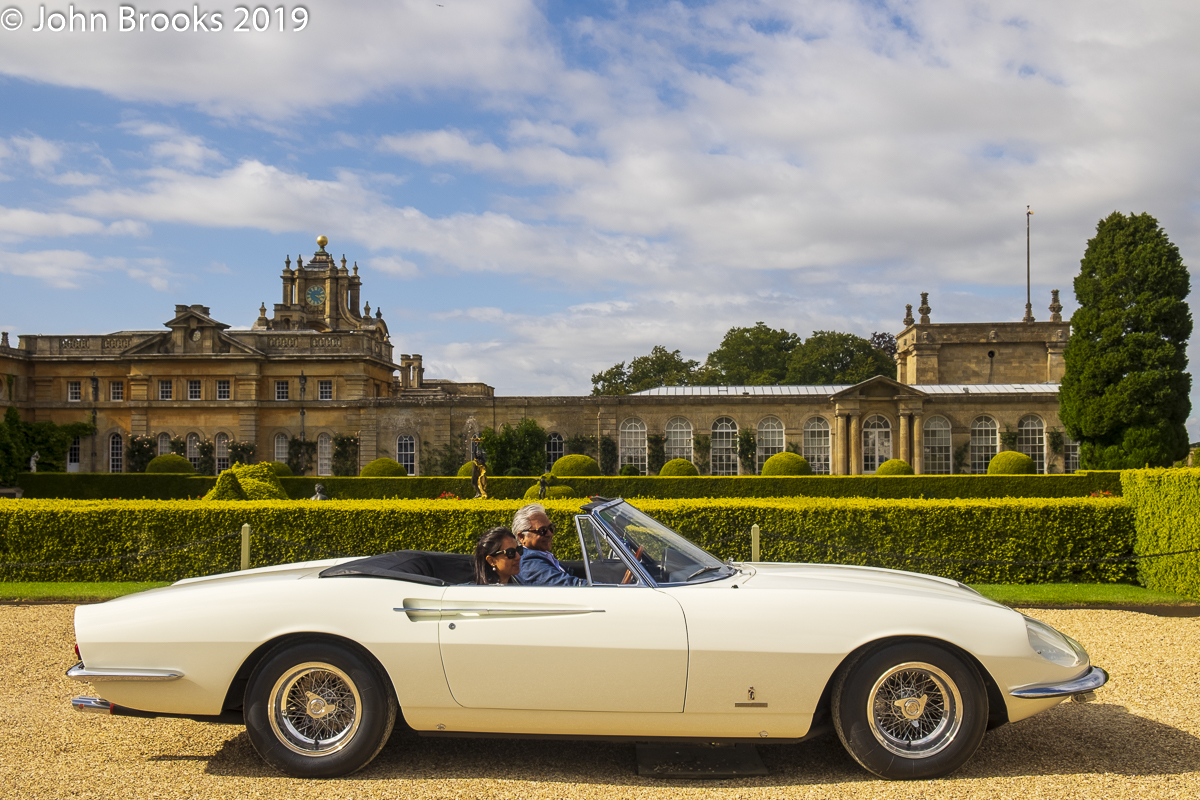
Ferrari, despite the ramped-up production levels in the modern era, remains a fairly exclusive brand, the likes of me are unlikely to trouble the Ferrari Owners’ Club. As Orwell put it so sagely, “all animals are equal, but some animals are more equal than others”. So it is with Ferraris, this 365 California Spider is part of an ultra-exclusive group, just 14 examples were built in the mid-60s. The flowing Pininfarina design and angular rear set it apart from its contemporaries.
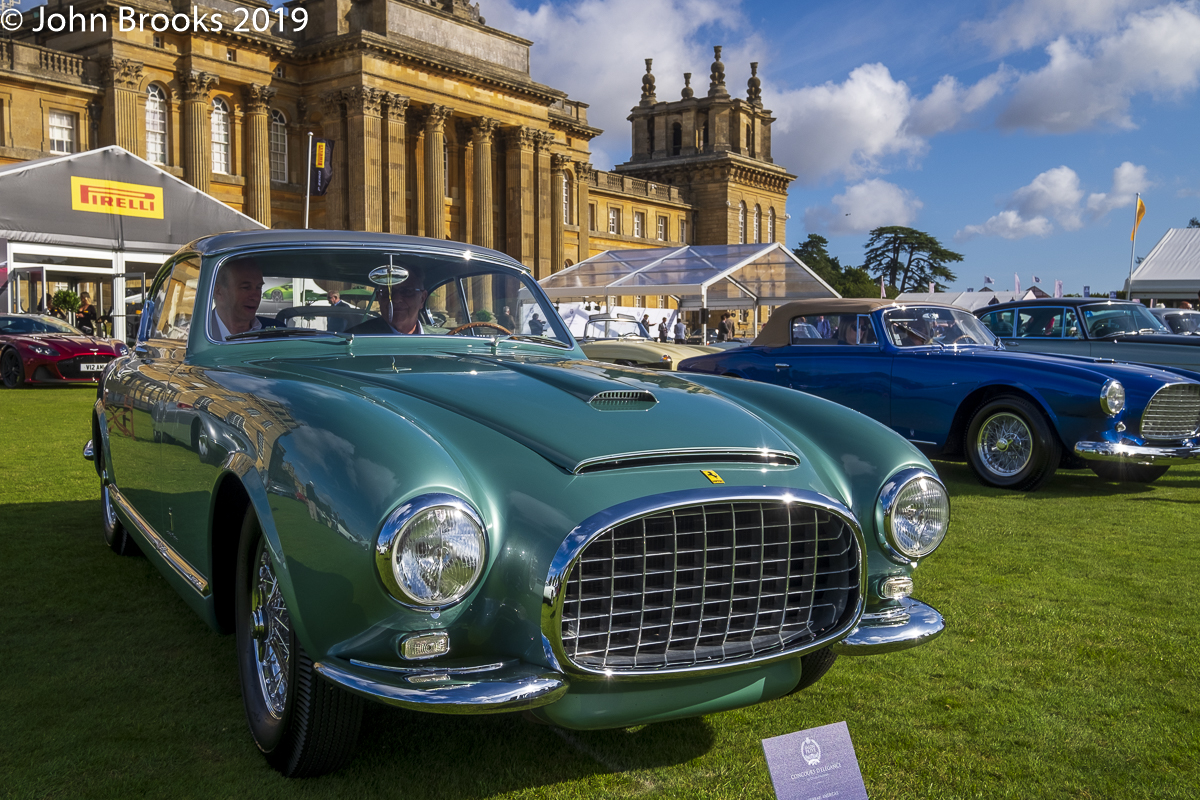
Almost the last word in exclusivity on planet Ferrari are these two 342 America models, this one the coupé.
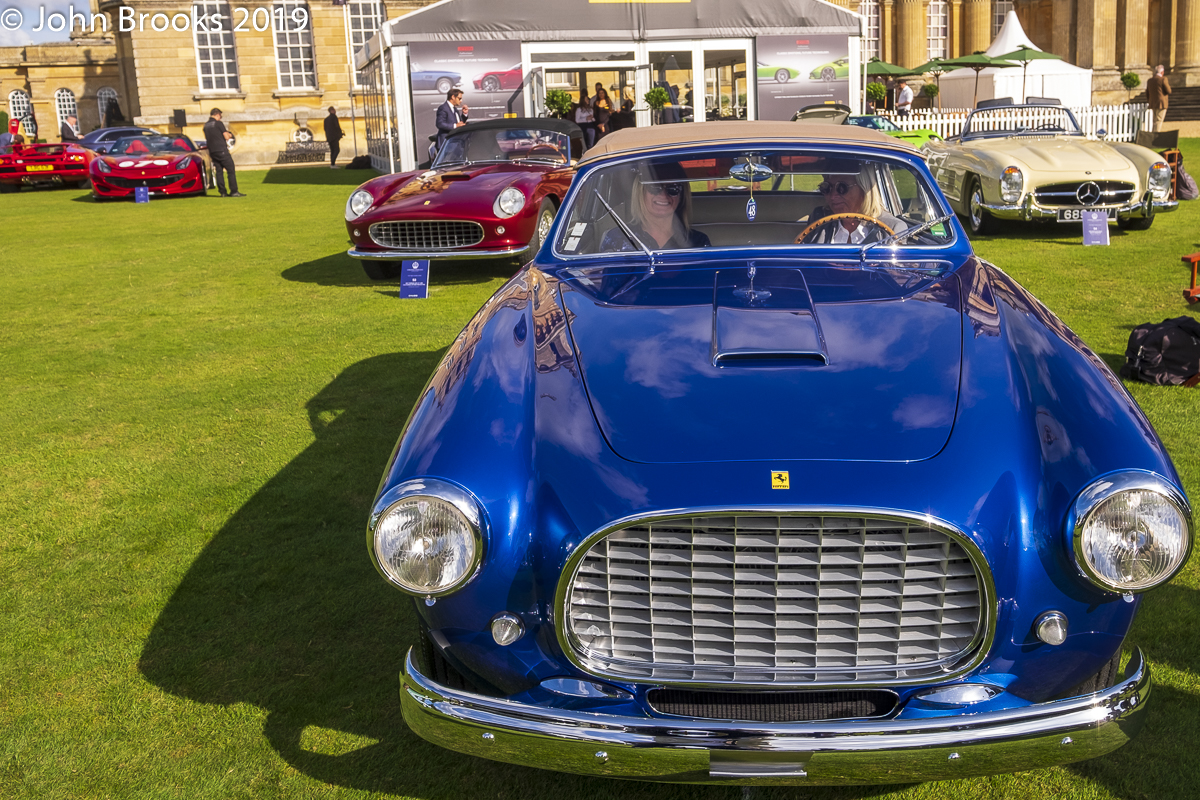
And this one is a cabriolet. Just three of each variety were specially built, the car above is the only one with bodywork from Carrozzeria Vignale.
The coupé on the lawn at Salon Privé first appeared at the ’53 Geneva Salon. Both cars have spent most of their lives in the USA.
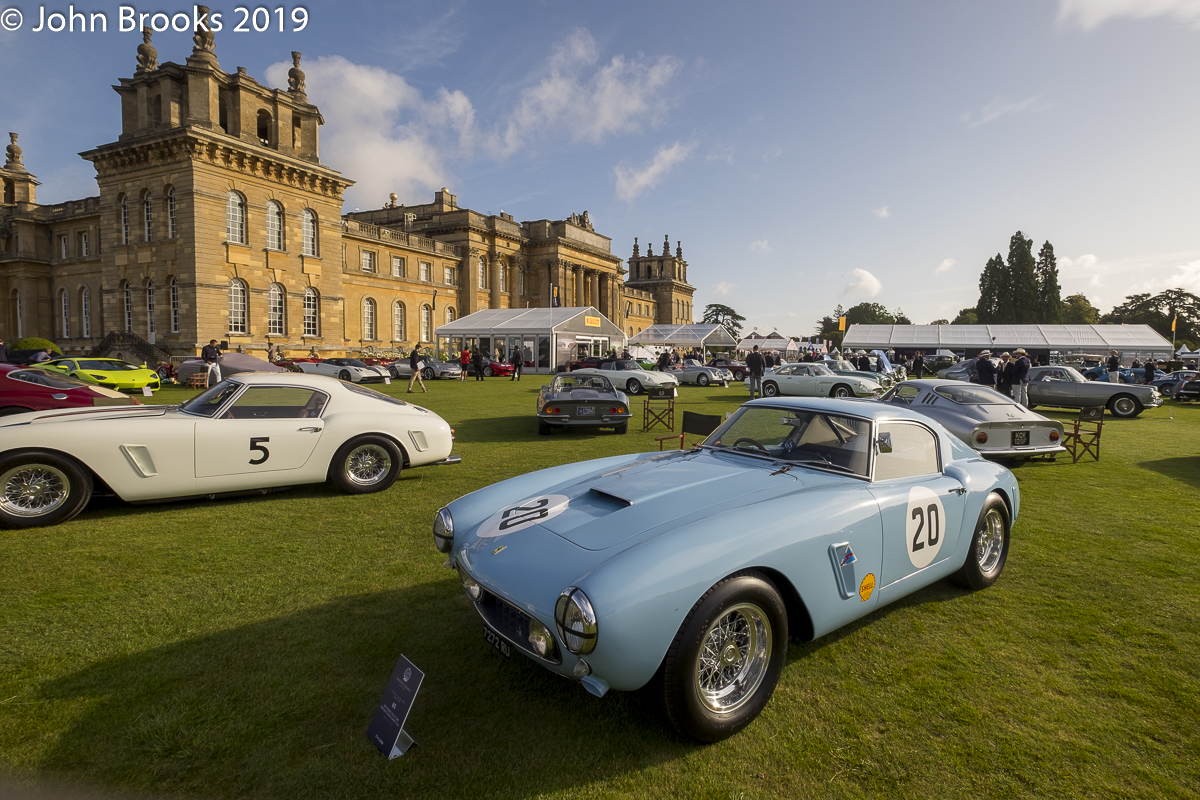
The 2019 edition of Salon Privé comfortably passed the Ferrari Test in a very stylish manner. We must hope that in the troubled times that 2020 is enduring the show will go on.
John Brooks, July 2020
The Salon Privé is now firmly established as one of the top car events on the planet. It has a unique flavour, mixing old and new, all to the absolute highest of standards. I had missed the event for a few years, the offer of a pass for a few hours at the end of the show did not appeal, especially given the delights of driving around the M25 on a Saturday. Then I received an invitation from Dirk de Jager to join him with the Fiat 8V that he was displaying on Owners’ Day, I was very pleased to accept and the show did not disappoint, anything but.
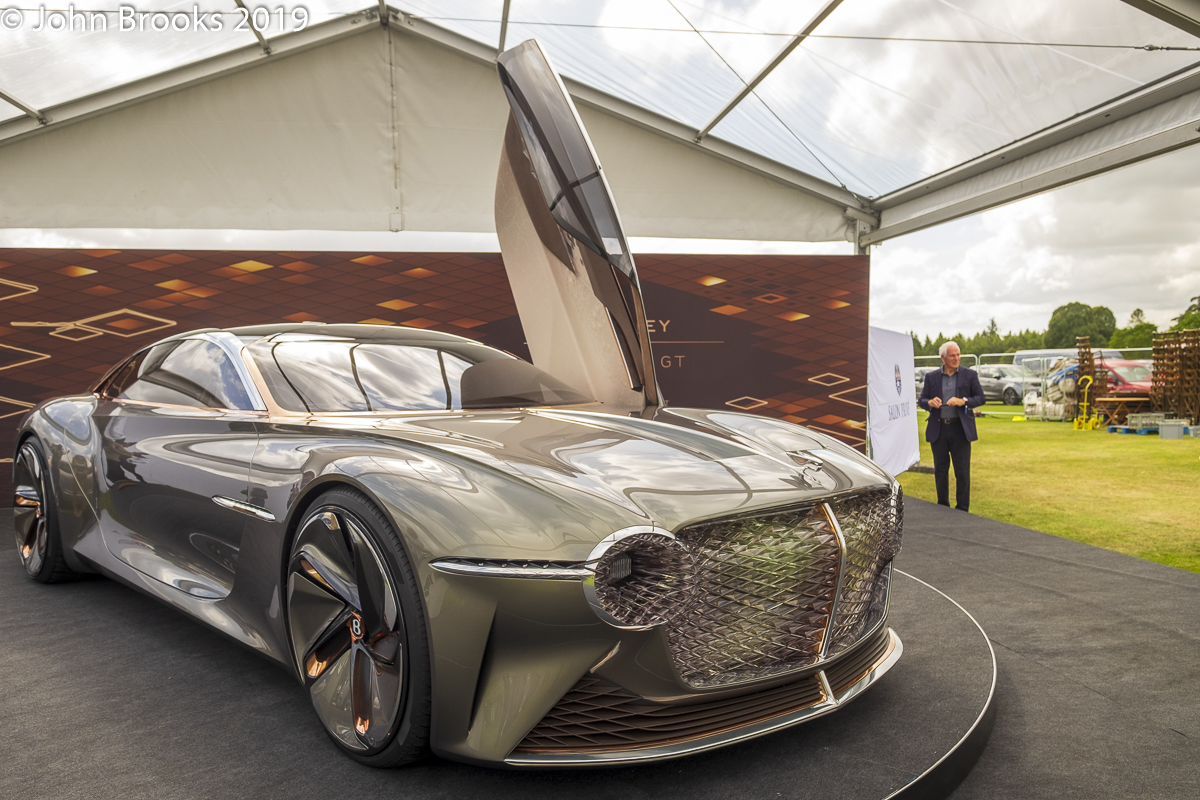
In retrospect 2019 now feels to me like 1914 or 1939 might have done to those who experienced the great conflicts that followed those fateful years, not that I am comparing the pandemic to the slaughter of the World Wars, but I suspect things will be very different when we finally emerge.
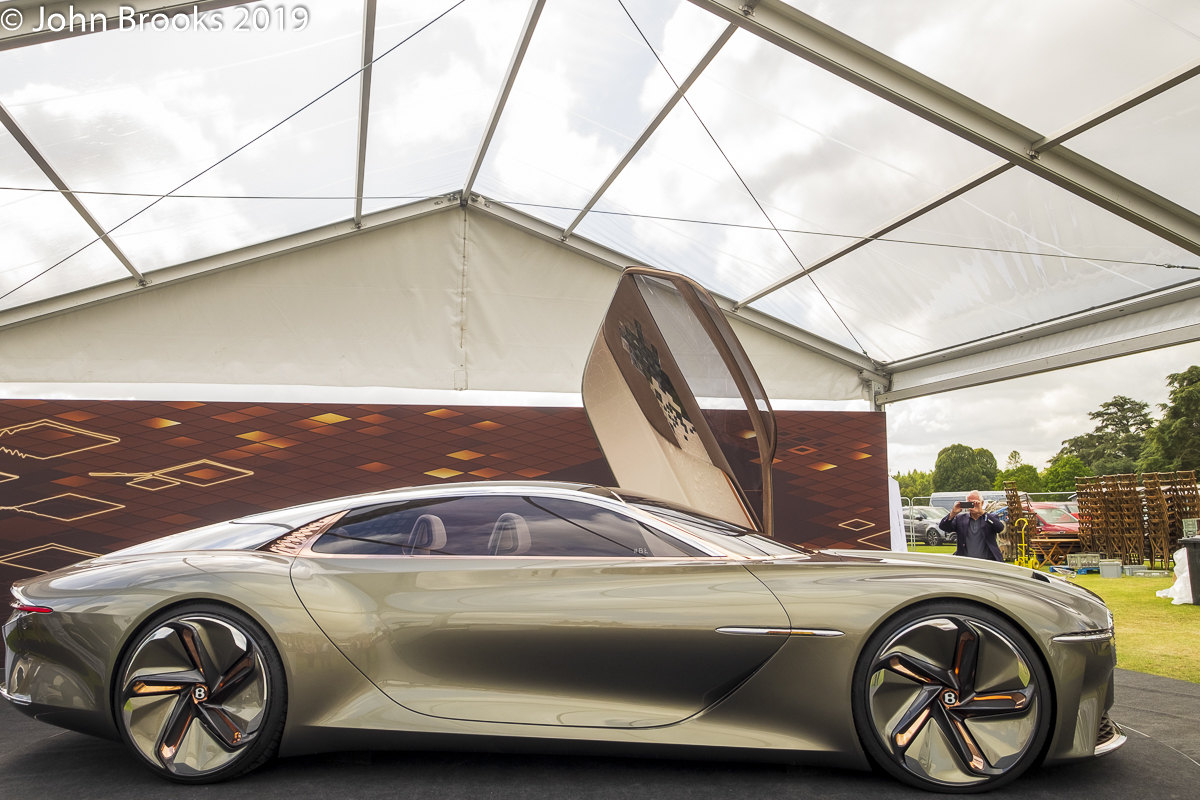
Some of the activities that we took for granted like motor sport or concours d’elegance may just not happen once the economic impact of the past three months becomes clear. There will be less money to spend and we all may well have to concentrate on the essentials. This realisation is tempered with an optimism that, even if we consign 2020 to the dustbin of history, things will get back to normal within a few years. In the meantime let’s reflect on happier times. The Salon Privé has been one of the highlights of the UK motoring calendar over the past decade or so, the 2019 show maintained the top class standard set over the years, that bar is high.
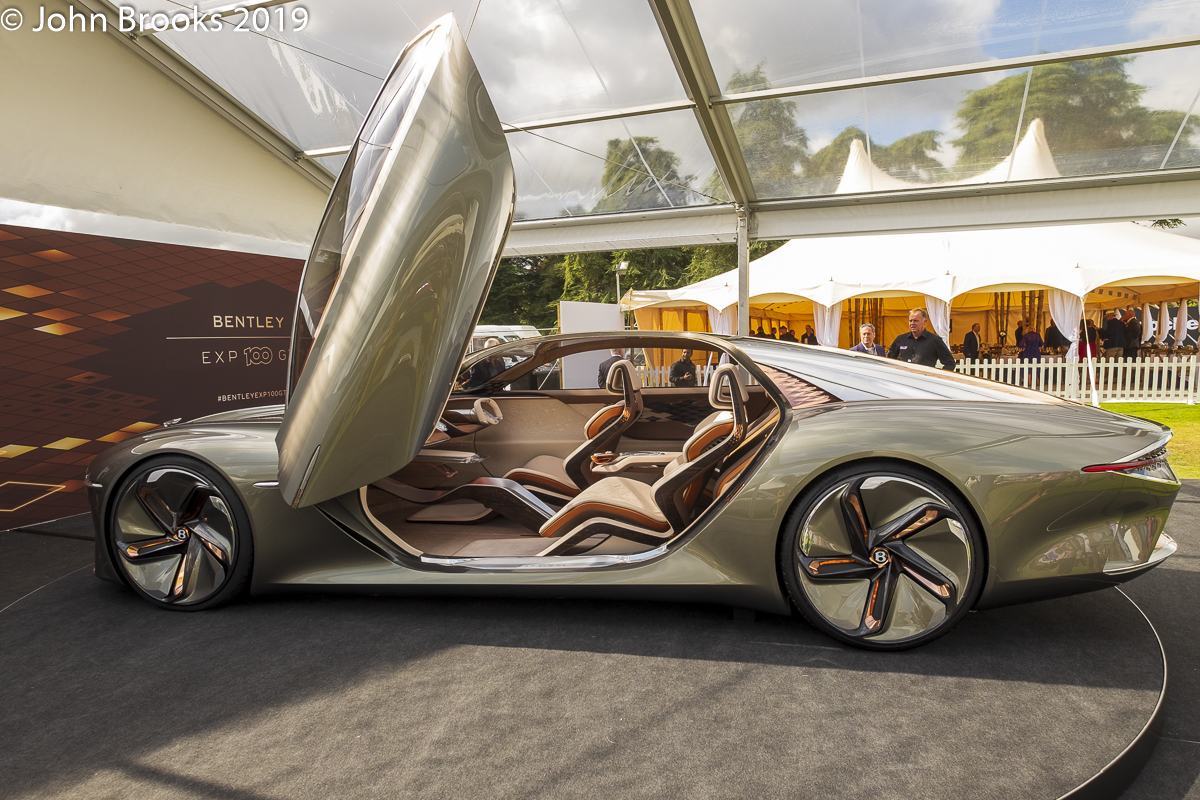
In common with events of this kind, there are several themes that run through the concours and the narrative hangs off this in the form of appropriately focussed displays. 2019 saw the celebration of Bentley’s centenary, indeed the final day at Salon Privé would witness the largest assembly of Bentleys in history with 1,321 examples surrounding Blenheim Palace.
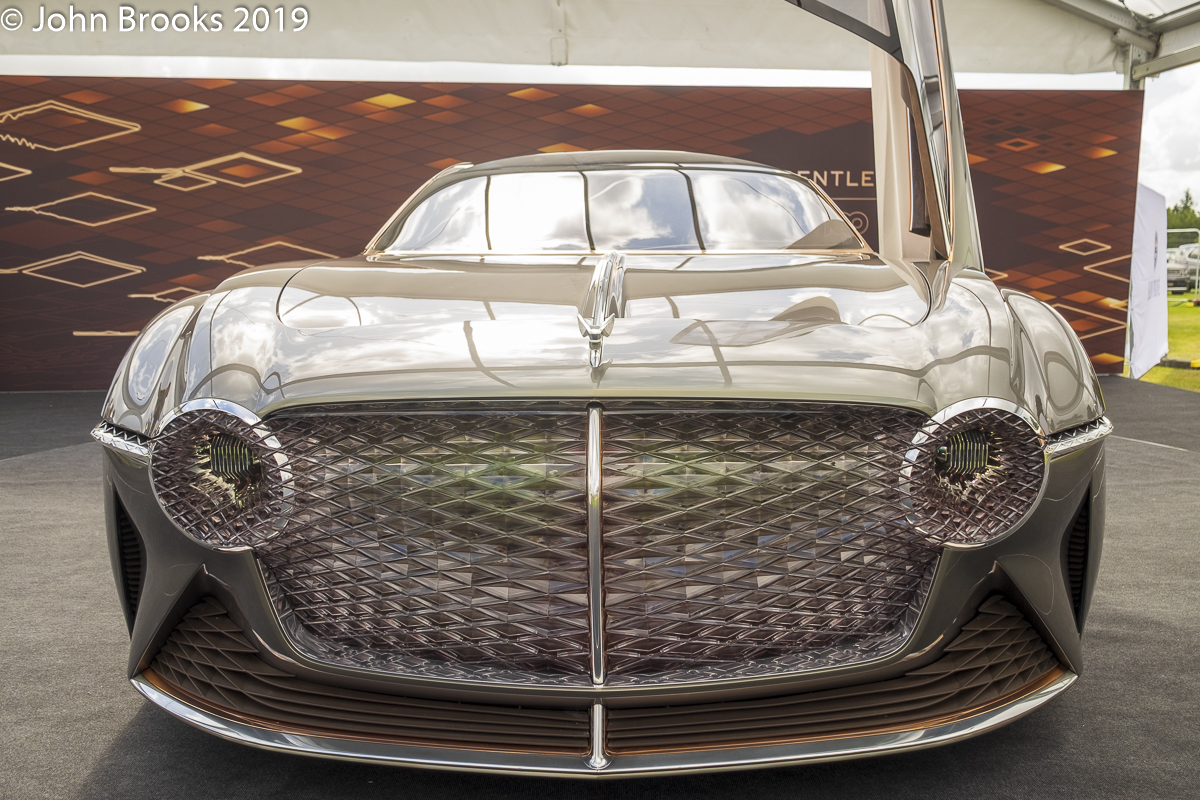
Bentley’s own celebration of the milestone came in several forms, the most prominent of which was a concept car, the EXP 100 GT. In some ways it was difficult to know what to make of this huge creation.
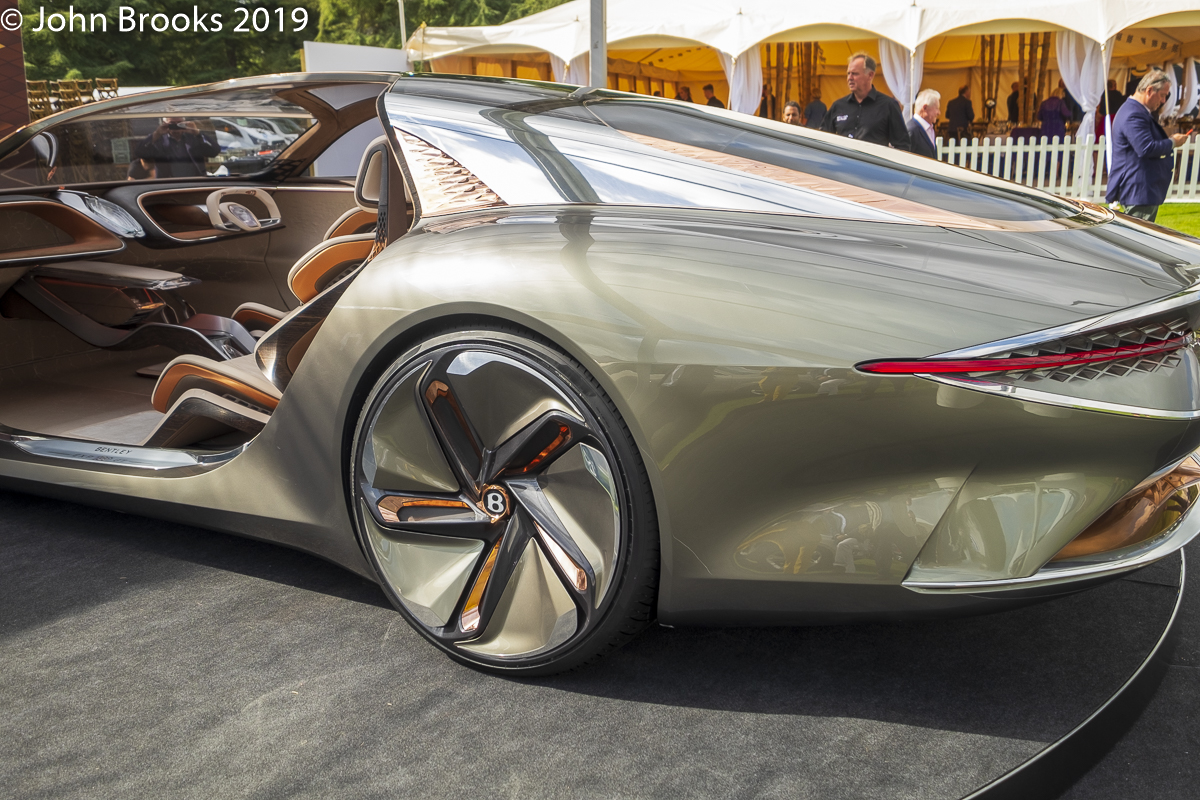
The PR fluff that accompanied the car’s release was woke on an epic scale, full of right-on signals. “The interior takes Bentley craftsmanship in a new direction by seamlessly fusing sustainable materials with technology. It incorporates new directions being explored by Bentley, including the use of light in creating a wellness-enriching environment and Adaptable Biometric Seating that adds to the feeling of wellbeing.”
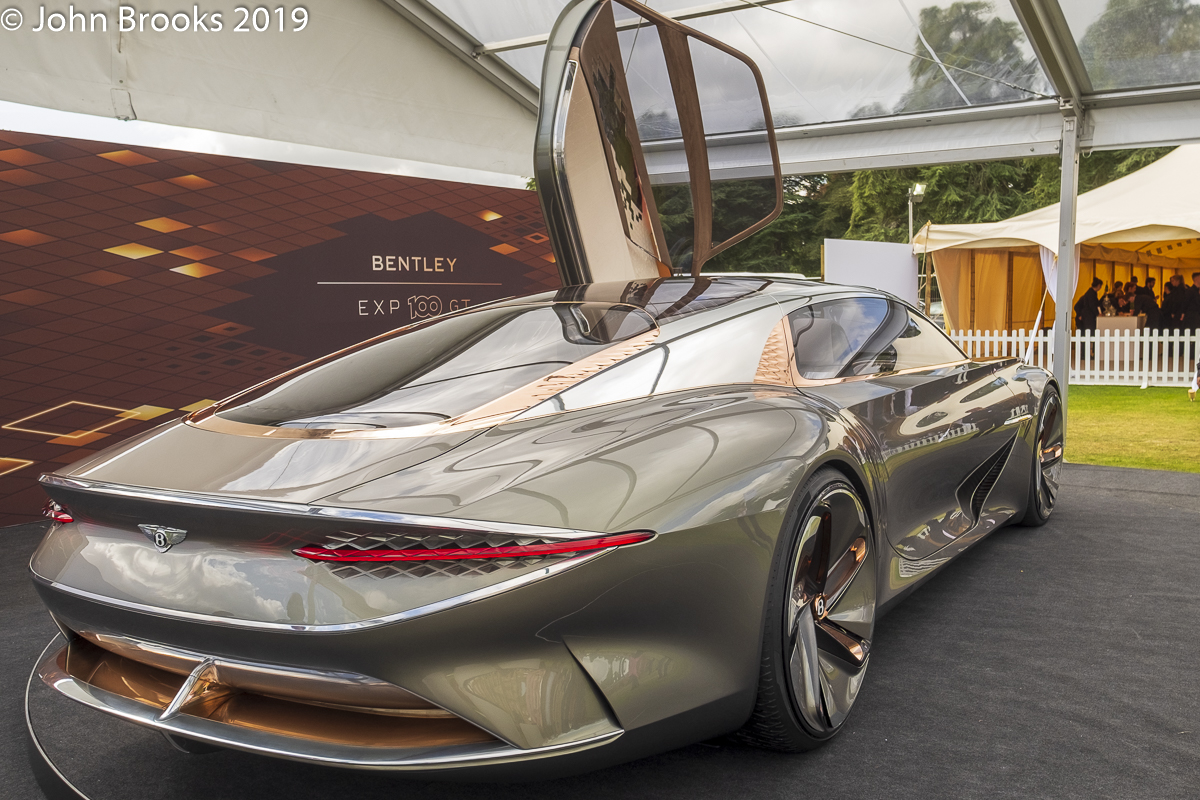
Having said that, one had to admit that there was a certain consistent element of elegance running through the display, with the sinuous curves and sense of opulence and style clearly evident. I am not the target market, and never will be, so perhaps my views are irrelevant.
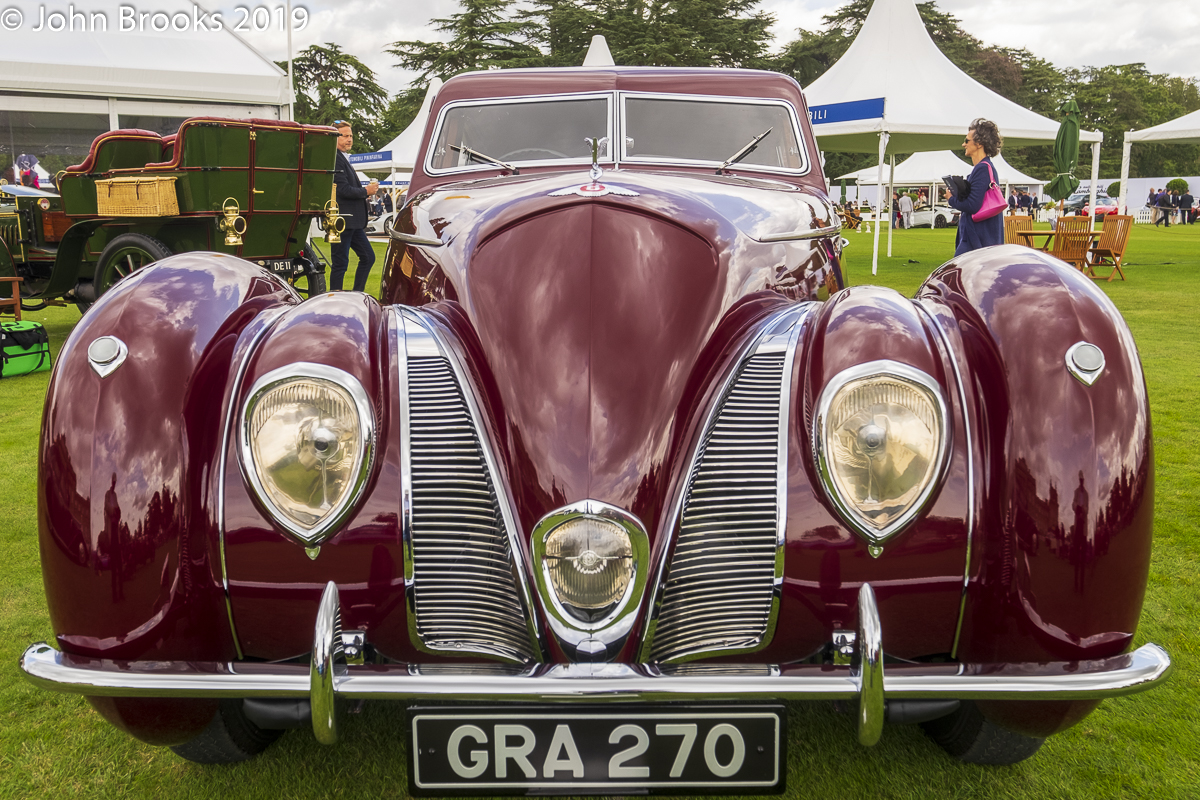
Another Bentley concept car, from another galaxy, is the recreation of the 1939 Corniche. The original car was inspired by the Embiricos Bentley, that had been styled by Georges Paulin. Bentley’s management were convinced that a sporty version of the forthcoming MKV would prove popular with the marque’s customers. I suspect it’s aerodynamic curves looked as surreal to the late ’30s enthusiasts as the EXP 100 GT does to me.
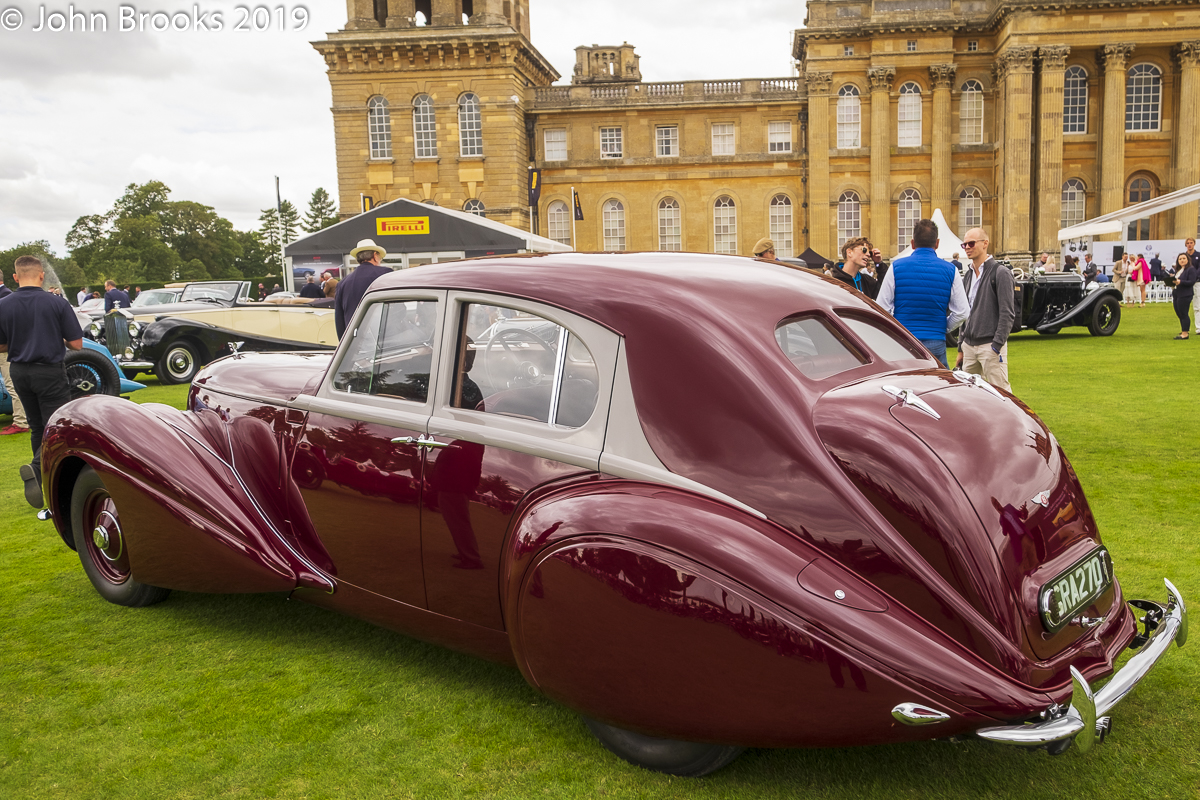
As the PR release says; ‘It was agreed that the Corniche should be built to investigate the idea. It would have a lightweight chassis, built from thinner-than-standard gauge steel, fitted with a tuned version of the Mark V engine matched to an overdrive gearbox created to suit. The Corniche was built as a collaboration between Bentley and third parties such as Georges Paulin, the French car designer who designed the bodywork and Carrosserie Vanvooren in Paris who made the bodywork.‘.
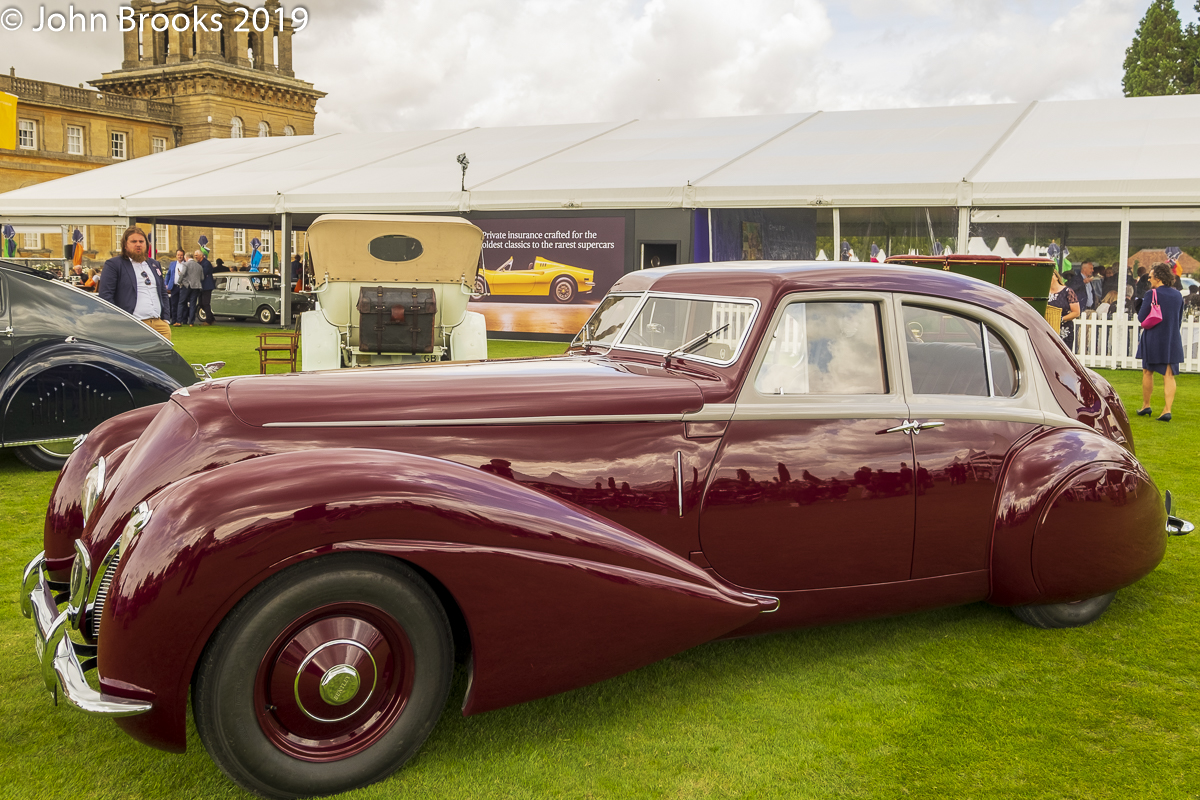
After a successful roll out at Brooklands in May 1939 the car headed for Europe but was then involved in two separate accidents. The second was quite severe, the chassis returned to the UK and the bodywork was to be repaired in France. The outbreak of the war overtook the project and the bodywork was destroyed during an air raid on Dieppe Harbour.
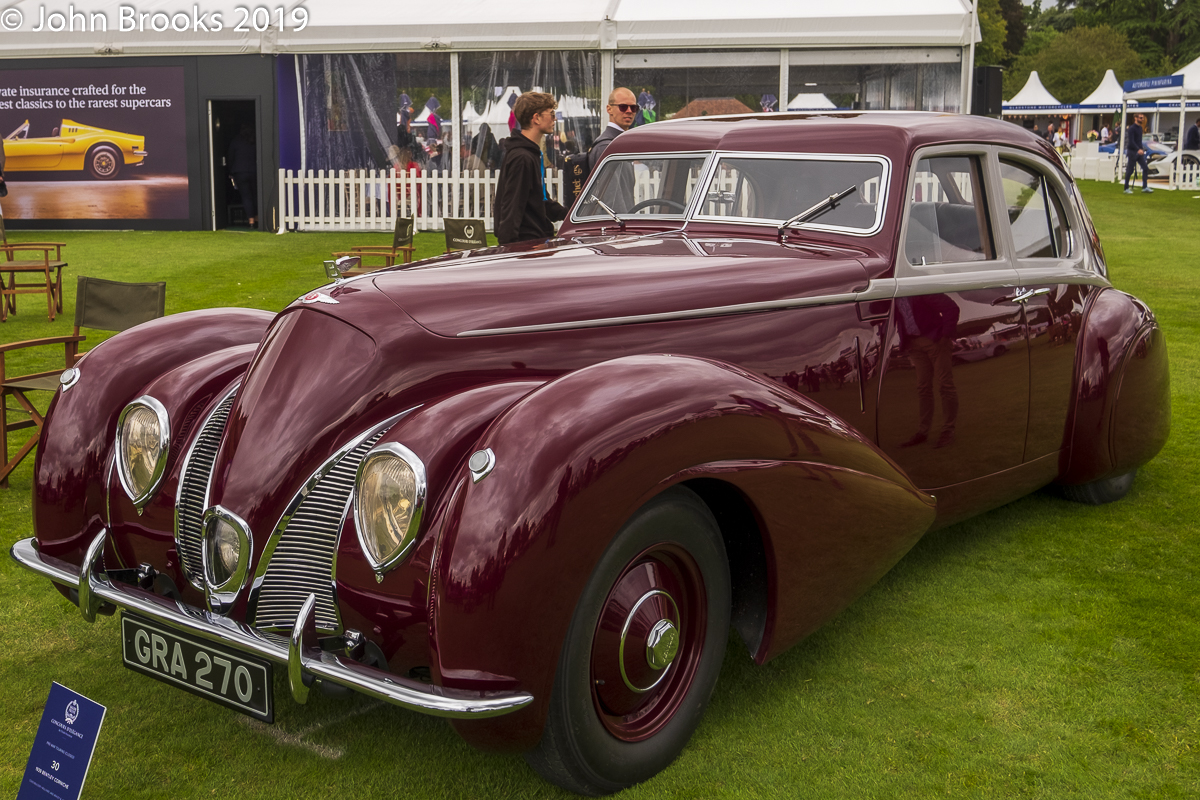
At the turn of the century enthusiasts attempted to recreate the Corniche. The project really came to life when Bentley CEO, Adrian Hallmark, took it in-house to Mulliner, the result is this stunning work of automotive art.
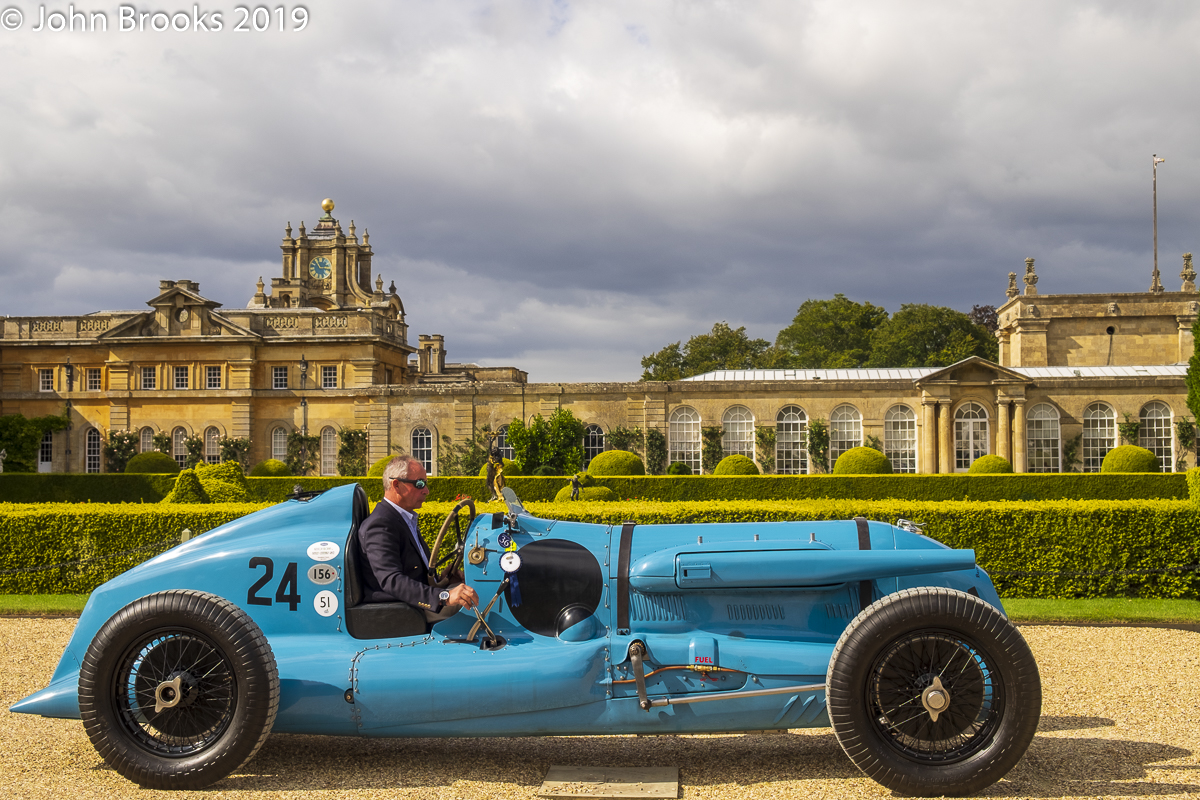
Although Bentley ceased competition when it was acquired by Rolls-Royce in 1931, that did not mean the end of the road for the chief ‘Bentley Boy’, Woolf Barnato. In 1934 he commissioned Wally Hassan to build a racer based on Bentley parts, including the engine from ‘Old Number One’, victorious in the 1929 Le Mans 24 Hours. The car was raced at many places, including Brooklands, with Oliver Bertram posting a lap on the outer circuit at 143.11mph. After the war it took part in the 1949 Spa 24 Hours but failed to finish.
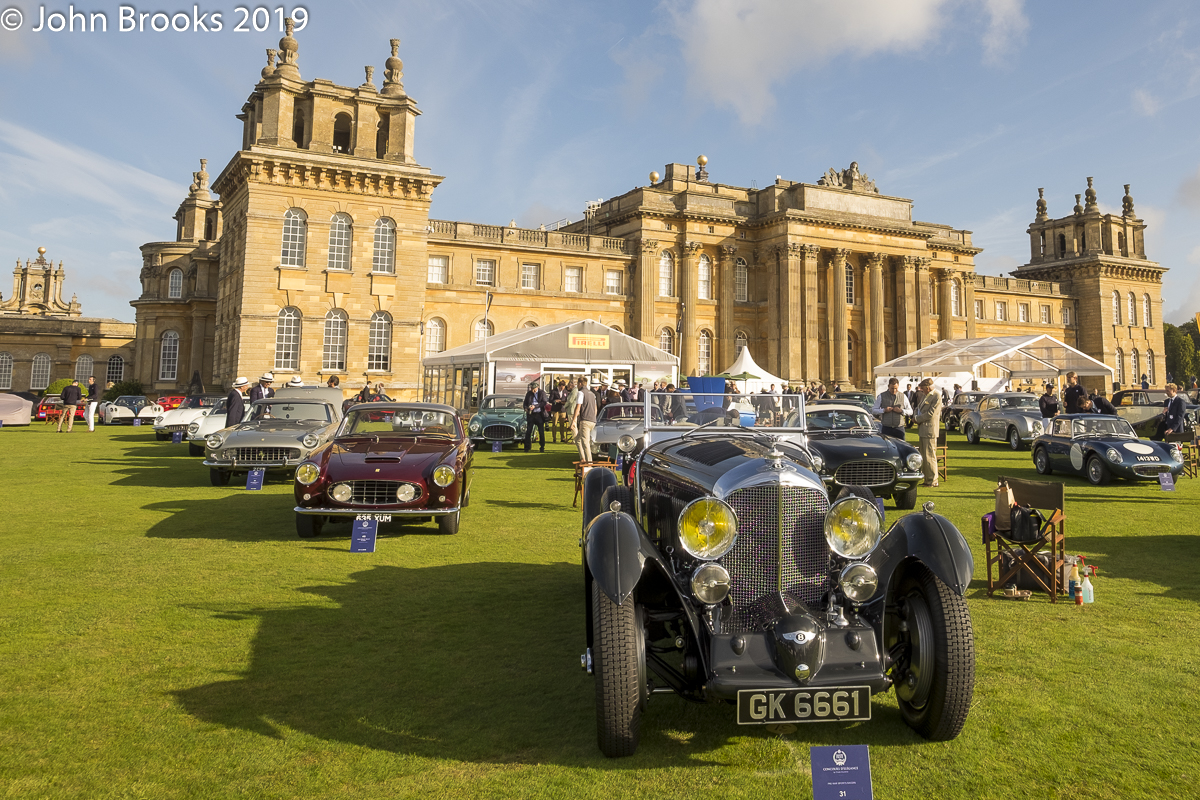
Another initiative that Woolf Barnato made at Bentley was the introduction of a supercharger, designed by Amherst Villiers, for the 4½-litre engine to create the Blower Bentley. This road-going example, dating from 1930, was Barnato’s personal car, with coachwork by Gurney Nutting.
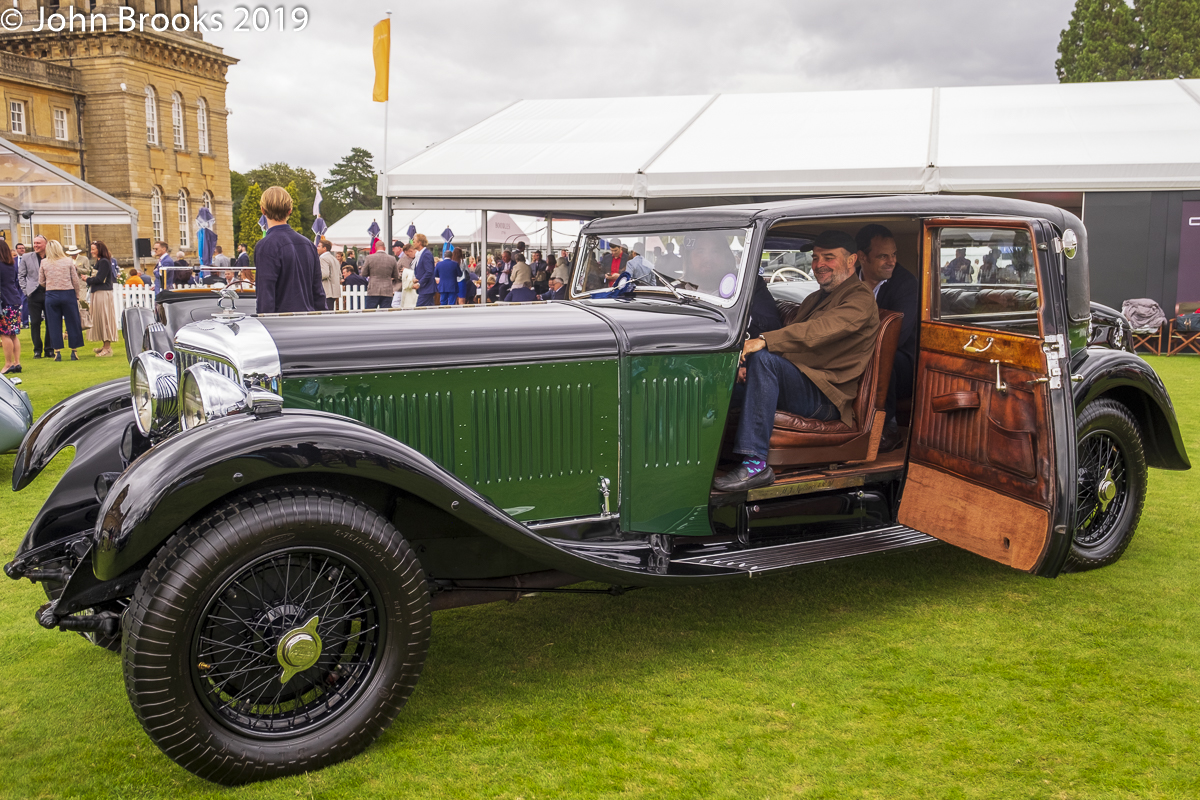
A pair of familiar faces at Blenheim were this Bentley 8 Litre and its owner, Mihai Negrescu. I had the pleasure of riding with him in this fabulous limousine a few years back on the Salon Privé Tour, perhaps I should revisit that tale soon.
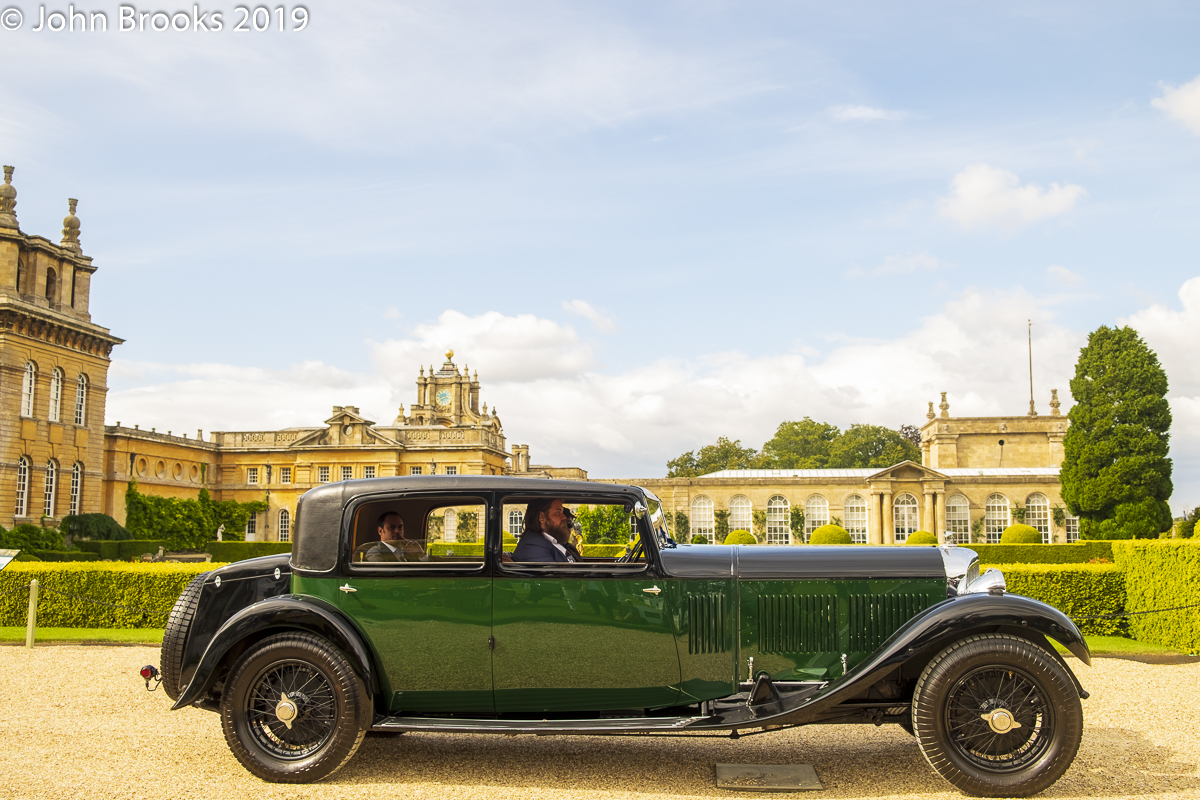
The Bentley 8 Litre was W.O. Bentley’s swansong for the company he founded. This example had a bit of an odd history, ending up in Canada at one point. The excellent vintagebentleys.org provides the tale. “Jack Charters bought the car when he lived in the UK but took it over to Canada in 1948 and, with his wife, drove it across Canada in the winter from Halifax to Soda Creek 400 miles north of Vancouver where they lived. Jack died in a blizzard in 1949 and the car was rescued from the British Columbian wilderness by Capt. L. Goudy. He took the car to Vancouver and restored it. It was in a poor state having had a collision with a moose and the wings had been trimmed. It was also painted white by then. Capt. Goudy kept the car until at least 1971. Capt. Goudy recalls the time when he was stopped by the police in Vancouver and thought he was about to be charged with a motoring offence, but the officers only wanted to see the engine and then one of them stated that his uncle was called Lycett, and he used to race Bentleys. This, of course, was the famous Forrest Lycett.”
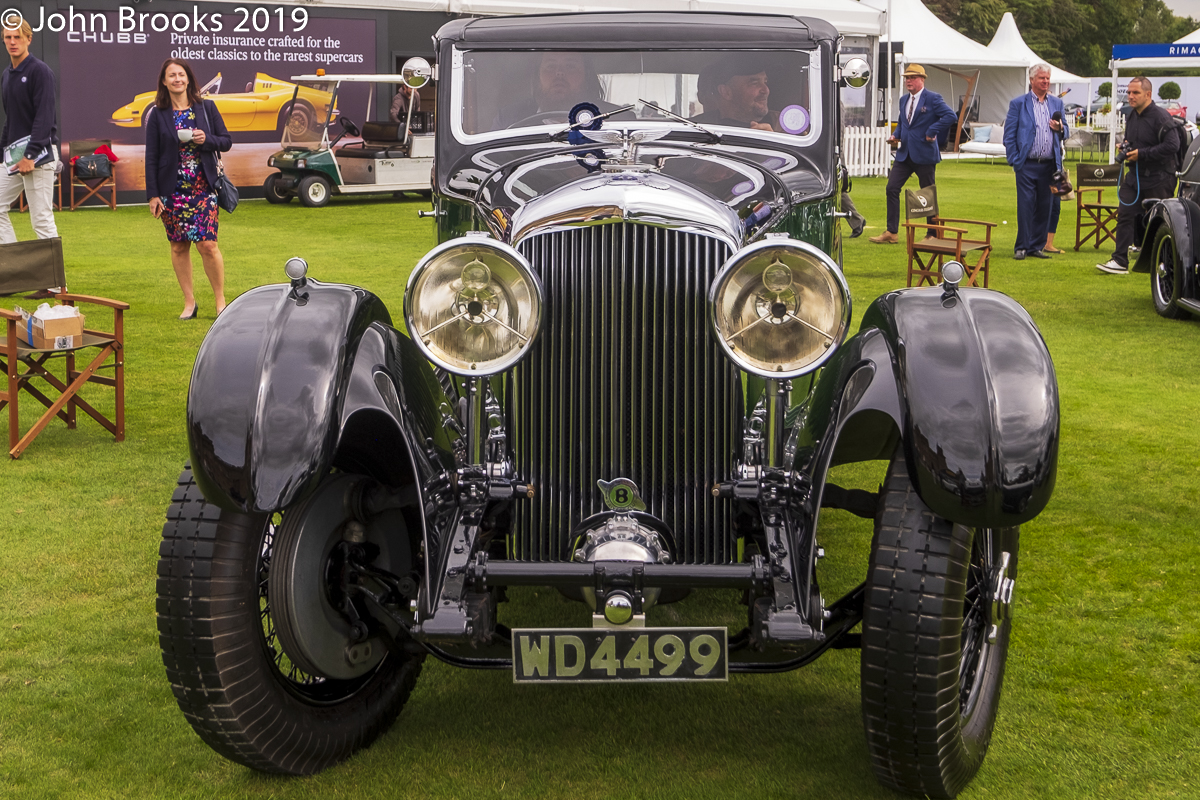
Now fully restored but still sporting the original interior, it is a jewel of an automobile, I hope to see more of it now that the owner has moved.
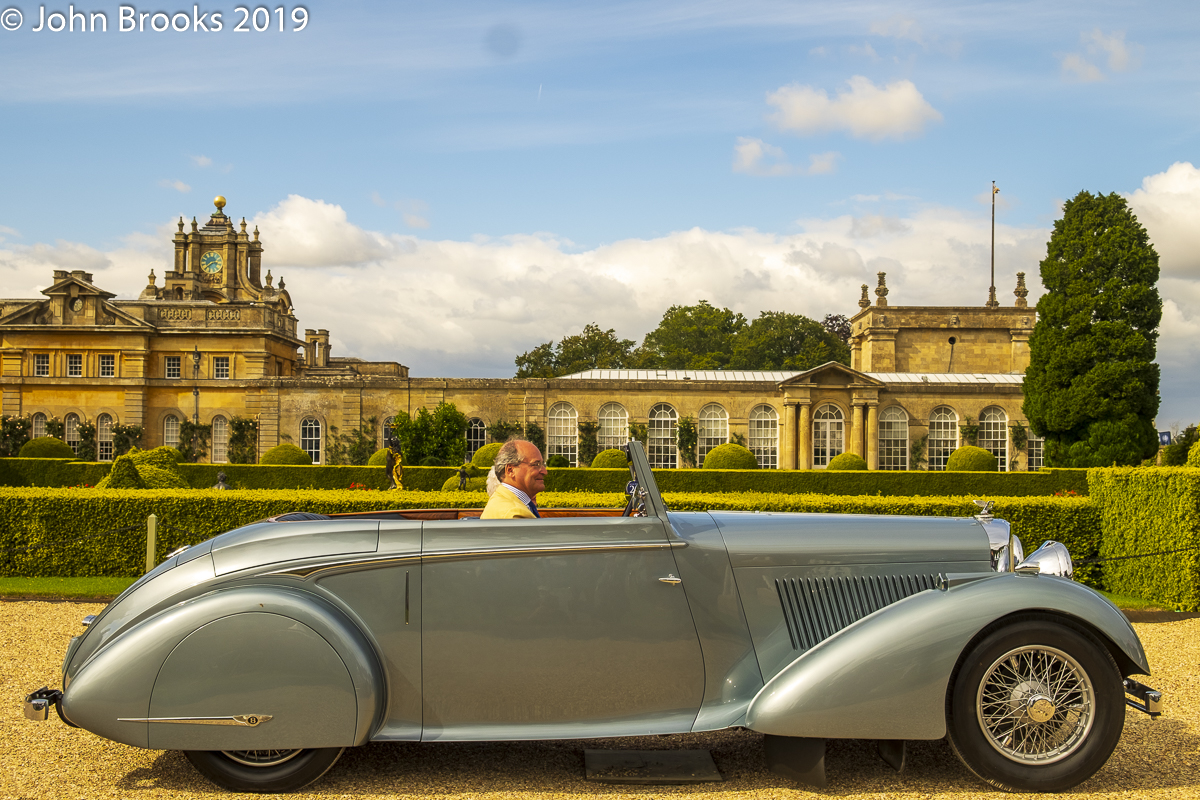
The very epitome of ’30s elegant motoring is this Bentley 4¼ Litre, with coachwork by H.J. Mulliner, form and function coming together in harmony.
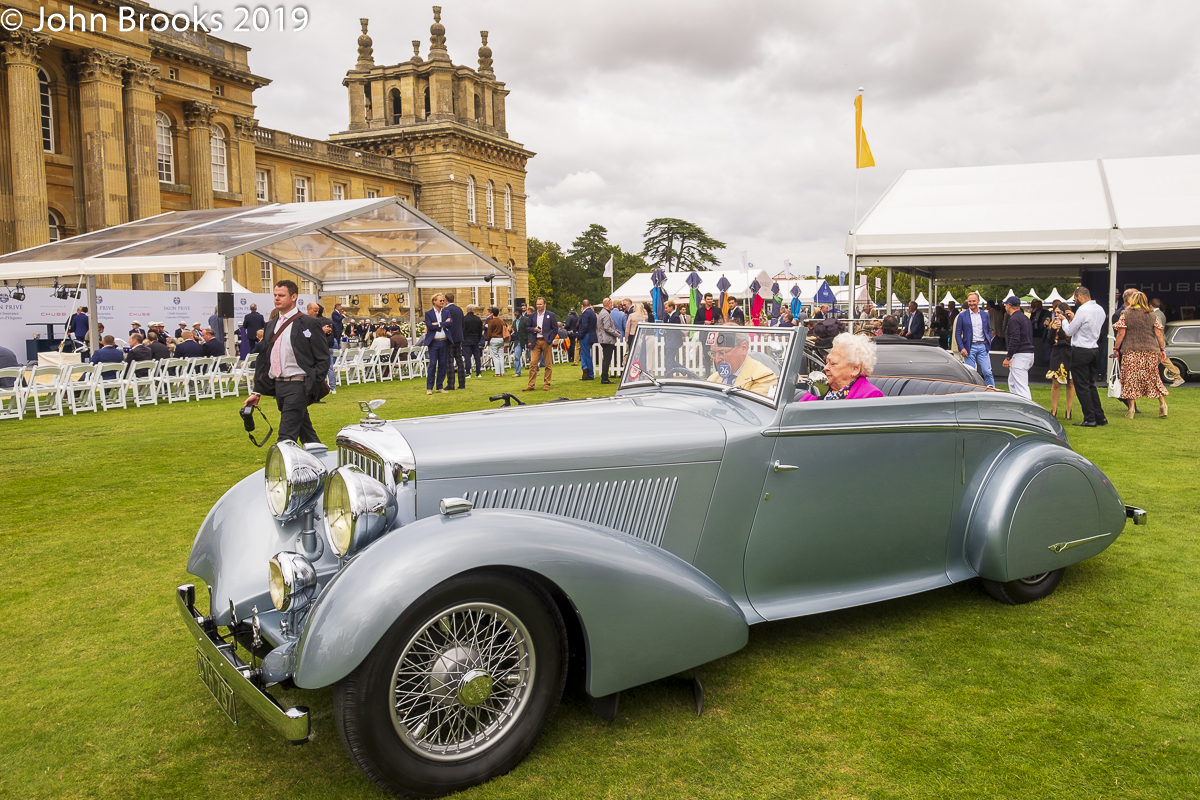
This is another of Woolf Barnato’s Bentleys, delivered in July 1936 to his Mayfair home.
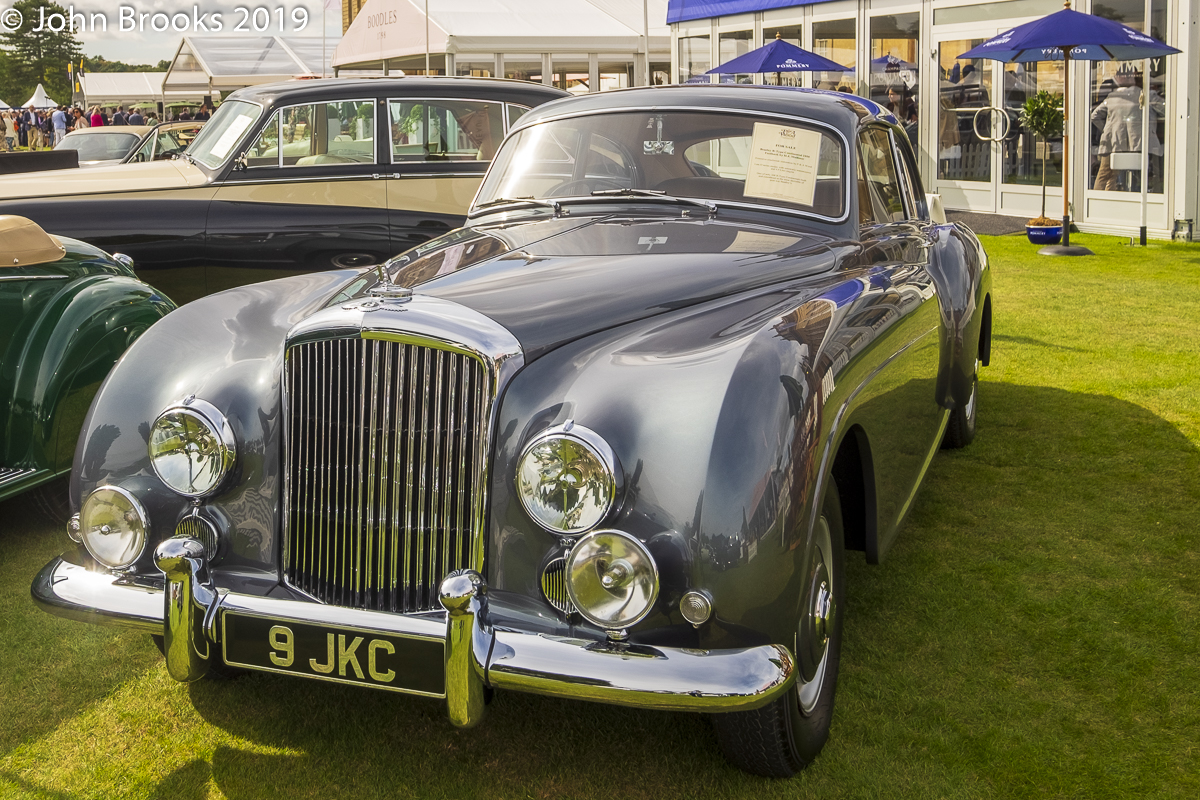
The Bentley day at Blenheim took place on the Sunday and, unfortunatley, I had a conflicting appointment. So I must make do with this dazzling selection of Bentleys from the main show. More from Salon Privé in the next week or so.
John Brooks, June 2020
One of the attractions of the Concours of Elegance held at Hampton Court Palace is the time to really look at the fantastic selection of cars on display. On the day the good news arrived confirming that the 2020 show will go ahead, even under restricted circumstances, we can have a look at some of the close-ups from last year.
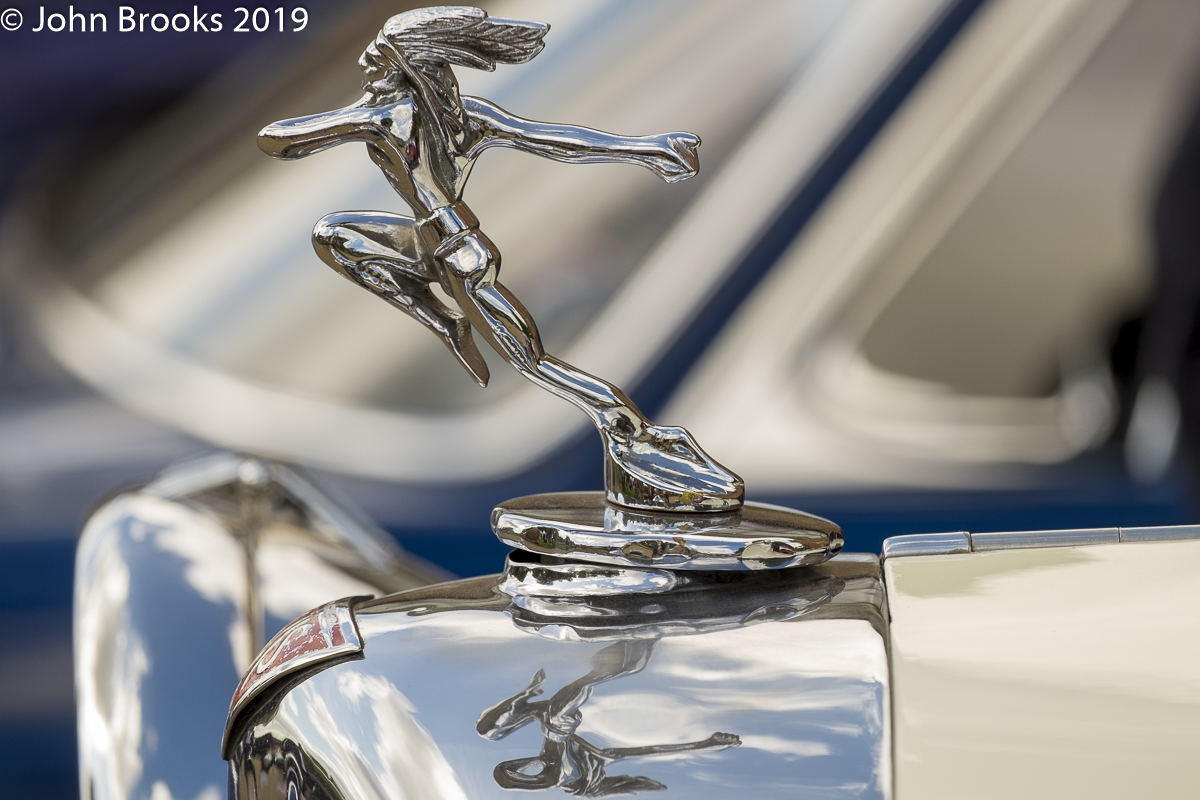
The unmistakable red triangle signals an Alvis with this athletic figure on the radiator cap………..
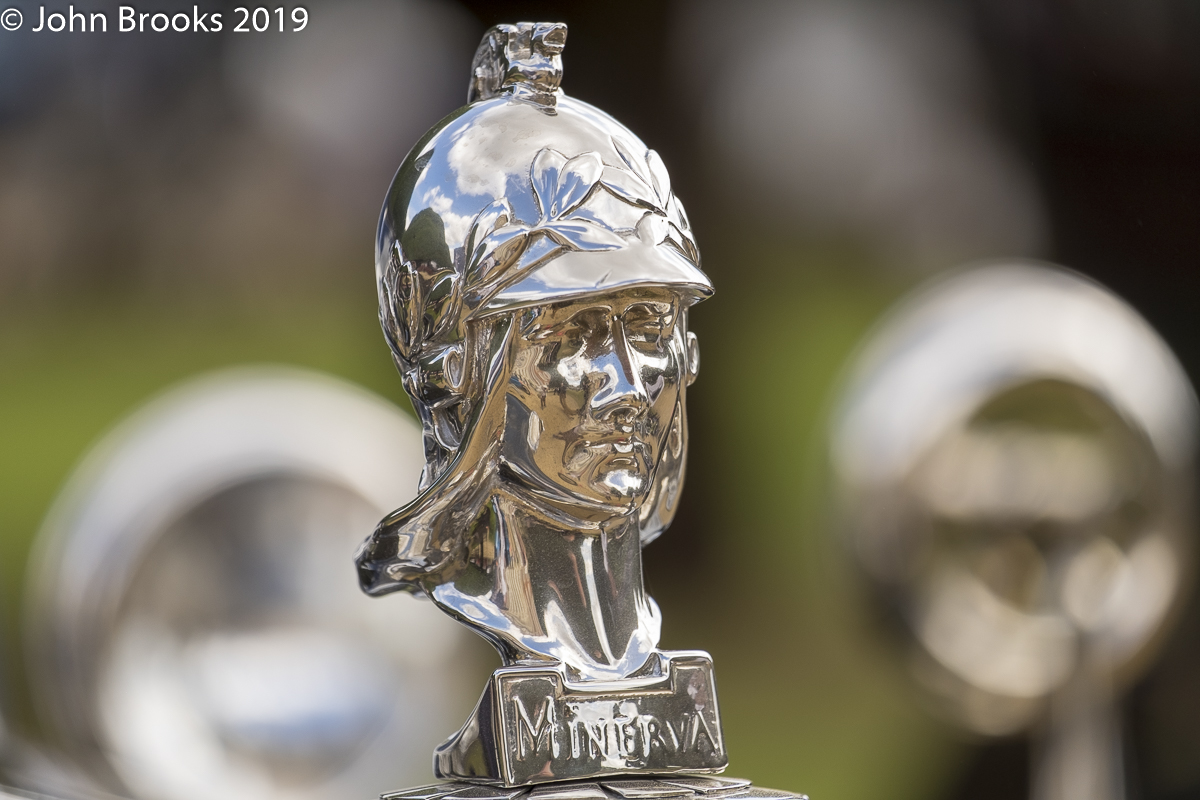
Minerva, the Roman goddess of wisdom and strategic warfare, and the sponsor of arts, trade, and strategy; Lord knows her talents are needed now.
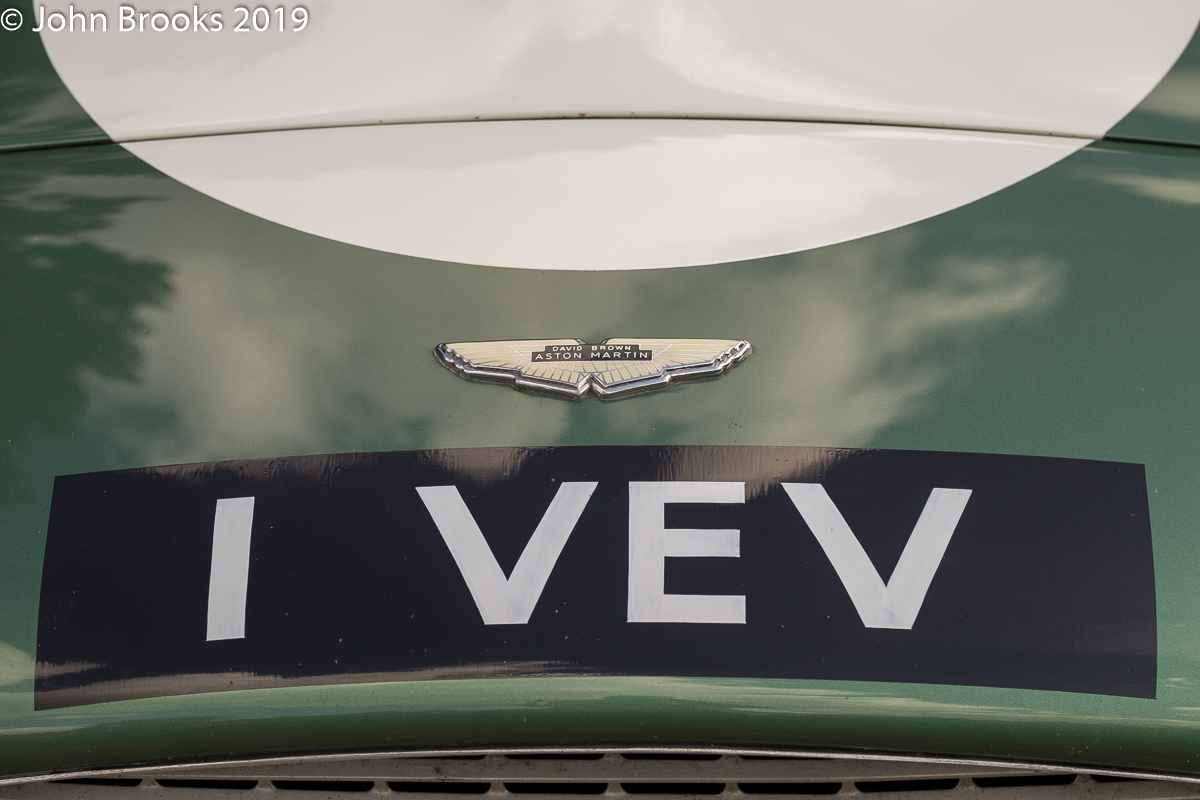
One of the most famous Aston martins of them all, 1 VEV, a DB4GT Zagato, campaigned by John Ogier’s Essex Racing Stable. One of just 19 examples built, it scored a podium in the hands of Roy Salvadori at the 1961 RAC Tourist Trophy but was mainly used as the team’s test car.
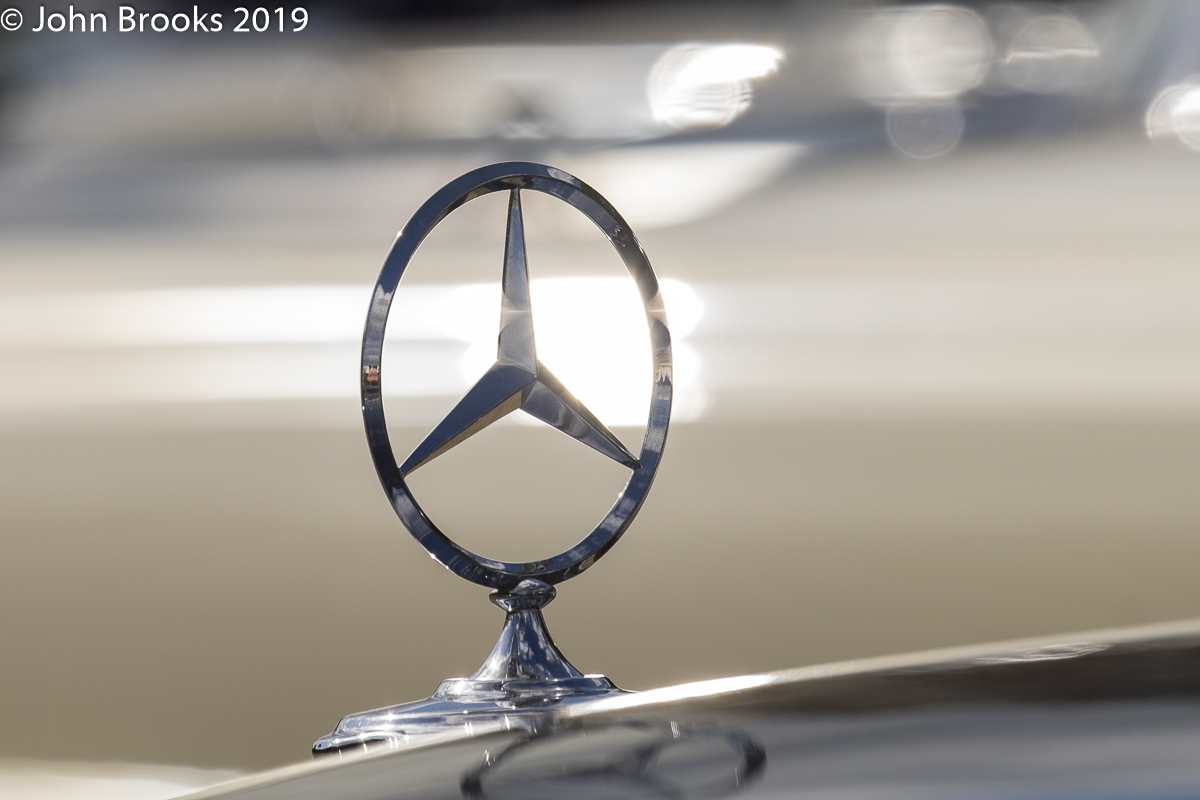
A symbol of quality for almost a century………………
More from the Palace later………….
John Brooks, June 2020